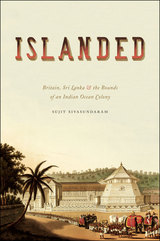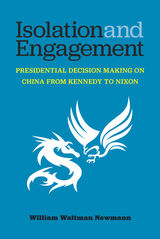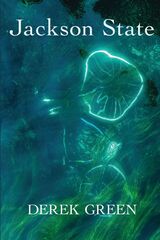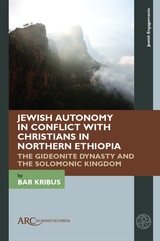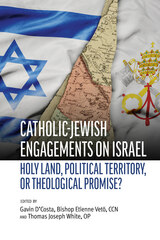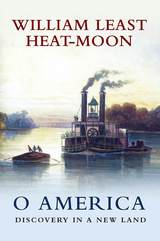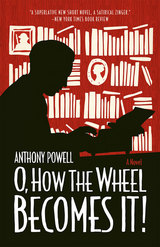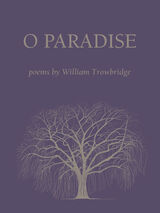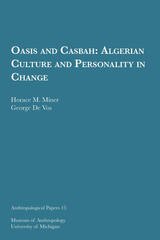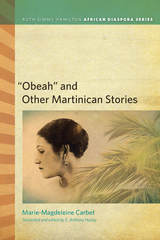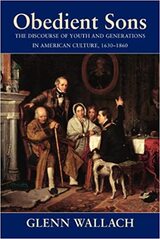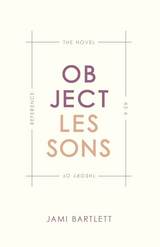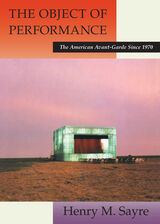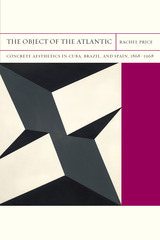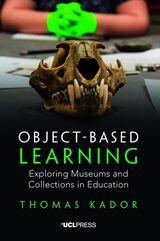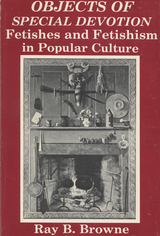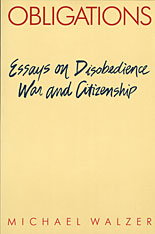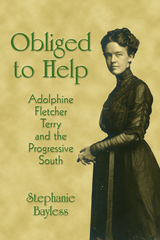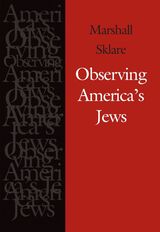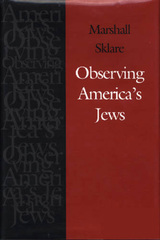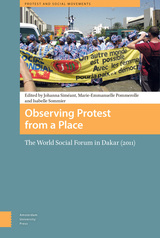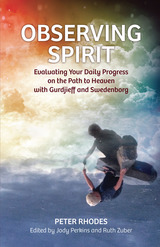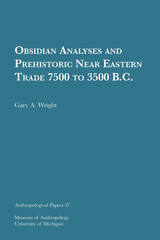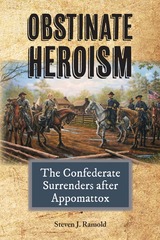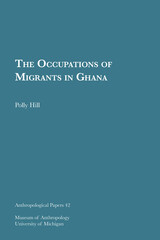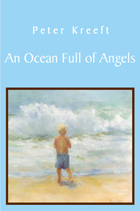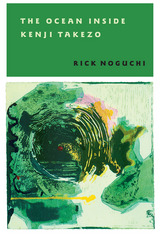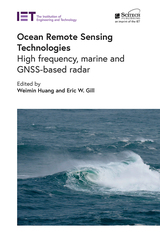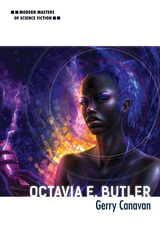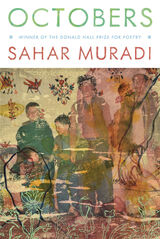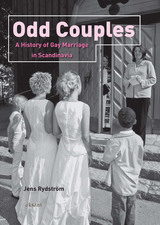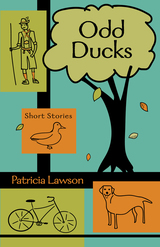O America: Discovery in a New Land
William Least Heat-Moon
University of Missouri Press, 2020 In 1848 an English physician, Nathaniel Trennant, accepts an offer to serve as doctor on a ship carrying immigrants to America. When arriving in Baltimore, Trennant stumbles onto its slave market and witnesses the horrors of human bondage. One night in a boardinghouse he discovers under his bed a runaway slave. Disturbed and angered by the selling of human lives, he offers to help the young man escape, a criminal action that will put the fugitive slave and physician into flight from both the law and opportunistic slave hunters.
Traveling by foot, horse, stage, canal boat, and steamer, Nathaniel and Nicodemus explore the backcountry and forge a deep friendship as they encounter a host of memorable characters who reveal the nature of the American experiment, one still in its early stages but already under the stress of social injustices and economic inequities.
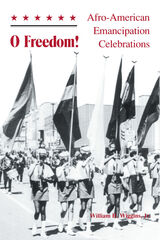 O Freedom!: Afro-American Emancipation Celebrations
William H. Wiggins, Jr.
University of Tennessee Press, 1990 Winner of the B. A. Botkin Prize for a First Book in American Folklore (American Comparative Literature Association) and received an honorable mention for the Chicago Folklore Prize (University of Chicago).
O, Freedom! is the first full scholarly treatment of not only Juneteenth, but also May 28, August 9, January 1, and other dates that were regionally celebrated as "emancipation day" in America. This lively account traces the evolution of emancipation celebrations from early slave festivals to twentieth-century offshoots like Black History Month and Martin Luther King Day. Wiggins describes the dramatic proclamation readings, historical pageants, colorful parades, all-night barbecues, exciting ballgames, and a myriad of other customs and rituals with which people of color have celebrated their freedom. He analyzes the historical, symbolic, and political significance of these celebrations.
“A lucid and interesting account of the numerous ‘Emancipation Day’ holidays long celebrated by black Americans. . . . readable, interesting, useful, and important.” —S. Cresswell, Choice
“This is an engaging study of a significant yet neglected aspect of American social, cultural, and political history.” —Michael Kammen, New York History
“Basing his analysis on fieldwork and solid historical research, Wiggins gives a vivid portrayal of a celebration of ethnic pride in all its diversity. Though varied over time and space, the celebratory message of freedom from slavery comes through clearly. Activities—singing, dancing, speechmaking—are described. Interesting illustrations, posters, programs, buttons, photographs support this intimate, carefully produced book.” —David S. Azzolina, Library Journal
“Wiggins has combined painstaking research and detailed interviews with a relaxed, readable writing style to produce a richly textured and fascinating account of a little-known slice of Americana.” —Martha Southgate
"A valuable contribution to Afro-American history . . . describes the author’s thousands of miles of travel . . . in order to understand the emancipation celebrations and to capture the different flavors of celebrations from Texas to Indiana, Pennsylvania, Tennessee, and Georgia. The account of his travels is lively, inviting, scholarly, and earthy. His research and writing point to an obvious conclusion: emancipation celebrations are alive and well.” —G. W. Reid, North Carolina Historical Review
O, How the Wheel Becomes It!: A Novel
Anthony Powell
University of Chicago Press, 2015 The first novel Anthony Powell published following the completion of his epic A Dance to the Music of Time, O, How the Wheel Becomes It! fulfills perhaps every author’s fantasy as it skewers a conceited, lazy, and dishonest critic. A writer who avoids serving in World War II and veers in and out of marriage, G. F. H. Shadbold ultimately falls victim to the title’s spinning—and righteous—emblem of chance. Sophisticated and a bit cruel, Wheel’s tale of posthumous vengeance is, nonetheless, irresistible.
Written at the peak of the late British master’s extraordinary literary career, this novel offers profound insight into the mind of a great artist whose unequaled style, ear for dialogue, and eye for irony will delight devotees and new readers alike.
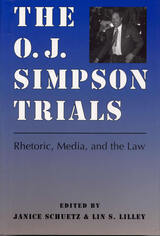 The O. J. Simpson Trials: Rhetoric, Media, and the Law
Edited by Janice Schuetz and Lin S. Lilley
Southern Illinois University Press, 1999
The O. J. Simpson case captured the attention of the public like no other event in media history, and the Simpson criminal trial is arguably the most notable example of the media's ability to transform litigation. This collection of original essays provides a critical analysis of the Simpson criminal and civil trials. Edited by communications professor Janice Schuetz and professional trial consultant Lin S. Lilley, the book focuses on telelitigation, the media's transformation of sensational trials, with celebrity defendants and victims, into telemediated forms.
The contributors—Ann Burnett, Patricia M. Ganer, Ann M. Gill, Diane Furno-Lamude, Lin S. Lilley, and Janice Schuetz—describe media spectacles, analyze the opening statements of trial attorneys in both cases, investigate the testimony of Mark Fuhrman in the criminal trial and O. J. Simpson in the civil trial, analyze the summations of trial attorneys in both cases, look at the processes of jury decision making, and identify the unique legal and social outcomes of the trials.
The discussions focus on five "hot button" legal issues sparked by the Simpson trials: the perceived unfairness of the jury system; unprecedented calls for jury reform in both civil and criminal arenas; the fairness issues of jury nullification, wherein a jury disregards the law in a criminal case in favor of leniency; wealth and the question of "buying" justice; and ethical questions about the ways the Simpson trials were conducted, in particular the ways in which Simpson attorney Johnnie Cochran and the "Dream Team" repeatedly nudged and occasionally crossed the ethical line.
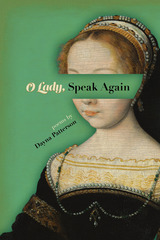 O Lady, Speak Again
Patterson, Dayna
Signature Books, 2023 The witchy, spell-soaked poems in Patterson’s second collection explore female characters from Shakespeare’s plays—with a feminist twist. The collection grapples with women’s roles in Shakespeare and in Mormon culture, both heavily influenced by patriarchal structures that often silence marginalized voices. If you’re not well-versed in Shakespeare or Mormonism, don’t worry—these poems will delight and enchant you with their own deep magic, their tremendous power, their singing.
In these pages you’ll meet Cordelia, third wife of polygamous Lear. You’ll meet Miranda, sailing away from her father and his faith. You’ll encounter Ophelia, who enters an amphibious torpor when buried, and is reborn as forest ecologist, far from her father’s ghost. Lady Macbeth and the weird sisters get a retrial, and Juliet finds her way to a different ending. Shadowy goddesses like Hecate, mother of witches, are invoked and act within these pages. Rosalind from As You Like It is given the final word. These poems delve into faith crisis, queerness, abandonment, transgressive power, rebirth, and dream. Prepare to be entranced.
O Paradise: Poems
William Trowbridge
University of Arkansas Press, 1995 As Howard Nemerov has said in praise of William Trowbridge’s first poetry collection: “he is very much up on the peculiarities of our little world … He is both funny and serious, seriously funny; probably the best, if not the only, way of dealing with the complex predicament.” Continuing in this third collection of poems to work in the realm of the serio-comic, Trowbridge explores other borderlands—between the tangible world and the intuitive one, between actuality and memory, between consciousness and unconsciousness, between self as flesh and blood and self as ghost. This is fast-faced, nervy poetry whose witty, vernacular language moves surprisingly toward transcendence.
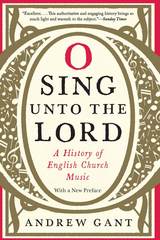 O Sing unto the Lord: A History of English Church Music
Andrew Gant
University of Chicago Press, 2017 For as long as people have worshipped together, music has played a key role in church life. With O Sing unto the Lord, Andrew Gant offers a fascinating history of English church music, from the Latin chant of late antiquity to the great proliferation of styles seen in contemporary repertoires.
The ornate complexity of pre-Reformation Catholic liturgies revealed the exclusive nature of this form of worship. By contrast, simple English psalms, set to well-known folk songs, summed up the aims of the Reformation with its music for everyone. The Enlightenment brought hymns, the Methodists and Victorians a new delight in the beauty and emotion of worship. Today, church music mirrors our multifaceted worldview, embracing the sounds of pop and jazz along with the more traditional music of choir and organ. And reflecting its truly global reach, the influence of English church music can be found in everything from masses sung in Korean to American Sacred Harp singing.
From medieval chorales to “Amazing Grace,” West Gallery music to Christmas carols, English church music has broken through the boundaries of time, place, and denomination to remain familiar and cherished everywhere. Expansive and sure to appeal to all music lovers, O Sing unto the Lord is the biography of a tradition, a book about people, and a celebration of one of the most important sides to our cultural heritage.
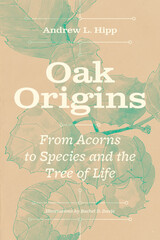 Oak Origins: From Acorns to Species and the Tree of Life
Andrew L. Hipp
University of Chicago Press, 2024 From ancient acorns to future forests, the story of how oaks evolved and the many ways they shape our world.
An oak begins its life with the precarious journey of a pollen grain, then an acorn, then a seedling. A mature tree may shed millions of acorns, but only a handful will grow. One oak may then live 100 years, 250 years, or even 13,000 years. But the long life of an individual is only a part of these trees’ story.
With naturalist and leading researcher Andrew L. Hipp as our guide, Oak Origins takes us through a sweeping evolutionary history, stretching back to a population of trees that lived more than 50 million years ago. We travel to the ancient tropical Earth to see the ancestors of the oaks evolving side by side with the dinosaurs. We journey from the oaks’ childhood in the once-warm forests of the Arctic to the montane cloud forests of Mexico and the broad-leaved evergreen forests of Southeast Asia. We dive into current research on oak genomes to see how scientists study genes’ movement between species and how oaks evolve over generations—spanning tens of millions of years. Finally, we learn how oak evolutionary history shapes the forests we know today, and how it may even shape the forests of the future.
Oaks are familiar to almost everyone, and beloved. They are embedded in our mythology. They have fed us, housed us, provided wood for our ships and wine barrels and homes and halls, planked our roads, and kept us warm. Every oak also has the potential to feed thousands of birds, squirrels, and mice and host countless insects, mosses, fungi, and lichens. But as Oak Origins makes clear, the story of the oaks’ evolution is not just the story of one important tree. It is the story of the Tree of Life, connecting all organisms that have ever lived on Earth, from oaks’ last common ancestor to us.
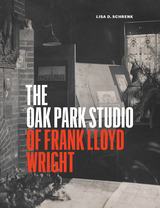 The Oak Park Studio of Frank Lloyd Wright
Lisa D. Schrenk
University of Chicago Press, 2021 Between 1898 and 1909, Frank Lloyd Wright’s residential studio in the idyllic Chicago suburb of Oak Park served as a nontraditional work setting as he matured into a leader in his field and formulized his iconic design ideology. Here, architectural historian Lisa D. Schrenk breaks the myth of Wright as the lone genius and reveals new insights into his early career.
With a rich narrative voice and meticulous detail, Schrenk tracks the practice’s evolution: addressing how the studio fit into the Chicago-area design scene; identifying other architects working there and their contributions; and exploring how the suburban setting and the nearby presence of Wright’s family influenced office life. Built as an addition to his 1889 shingle-style home, Wright’s studio was a core site for the ideological development of the prairie house, one of the first truly American forms of residential architecture. Schrenk documents the educational atmosphere of Wright’s office in the context of his developing design ideology, revealing three phases as he transitioned from colleague to leader. This heavily illustrated book includes a detailed discussion of the physical changes Wright made to the building and how they informed his architectural thinking and educational practices. Schrenk also addresses the later transformations of the building, including into an art center in the 1930s, its restoration in the 1970s and 80s, and its current use as a historic house museum.
Based on significant original and archival research, including interviews with Wright’s family and others involved in the studio and 180 images, The Oak Park Studio of Frank Lloyd Wright offers the first comprehensive look at the early independent office of one of the world’s most influential architects.
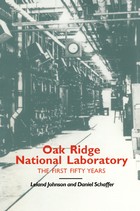 Oak Ridge National Laboratory: The First Fifty Years
Leland Johnson
University of Tennessee Press, 1994 Inaugurated fifty years ago as a key component in the Manhattan Project, Oak Ridge National Laboratory remains one of the nation's premier research institutions. This profusely illustrated volume, written for a non-scientific readership, chronicles the history of the laboratory from its origins to the present day. Leland Johnson and Daniel Schaffer begin their narrative in 1943 when the U.S. Army Corps of Engineers built ORNL in the hills of East Tennessee to produce plutonium for atomic weapons. After World War II, ORNL became a center for fundamental scientific research under the successive management of the Atomic Energy Commission, the Energy Research and Development Administration, and the Department of Energy. Since 1945, the laboratory's contributions to national defense have been balanced by its investigations in many other areas, including nuclear medicine and environmental research. As the authors demonstrate, Oak Ridge National Laboratory represents the concerns of the American scientific establishment in microcosm. The facility was part of the flourishing of big science that began in the 1940s, and the workings of ORNL clearly illustrate the ties between scientific research and military concerns that continued well into the post-World War II era. Now that the Cold War is over, the laboratory's activities have embarked in directions that reveal the nation's new priorities in science, the environment, and technology. Thus this book, by offering a window into the past and present activity at Oak Ridge, allows the reader to glimpse the larger trends within the scientific community.
 Oakes Ames: Jottings of a Harvard Botanist
Pauline Ames Plimpton
Harvard University Press Collected and edited by Pauline Ames Plimpton, his daughter, and with a Foreword by George Plimpton, his grandson, these journals, letters, and diaries, written in the first half of the century, give a vivid autobiographic picture of the era. Oakes Ames was one of the group of extraordinary teachers that Harvard drew to its faculty under Eliot and Lowell; he devoted his life to the study and teaching of botany and became a world authority on orchids and economic botany, directing the Botanical Museum and the Arnold Arboretum. The book gives a description of family life in Boston and the small town of North Easton, Massachusetts, as well as the experiences of travel in those early days. The main theme is his love of nature, whether in collecting orchids or acquiring land for his home. It is a book to be savored by those interested in the University, in orchidology and in the striking contrasts between the past and the present. His austerity of character and his subtle, surprising humor and insights are particularly relevant for the present time.
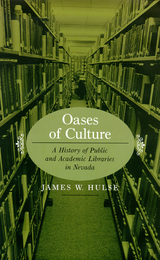 Oases Of Culture: A History Of Public And Academic Libraries In Nevada
James W. Hulse
University of Nevada Press, 2003 The cultural and intellectual history of the Silver State is examined through the creation of its libraries. In Oases of Culture, veteran Nevada historian James W. Hulse recounts the tortuous and often colorful history of Nevada’s libraries and the work of the dedicated librarians, educators, civic leaders, women’s organizations, philanthropists, and politicians who struggled to make the democratic vision of free libraries available to all Nevadans. From the establishment of the State Library in 1865, only one year after statehood, through the creation of tax-supported public libraries after passage of a library law in 1895, to the development of today’s modern university and community college libraries and the public-library information services that serve Nevada’s booming and increasingly diverse population, Hulse recounts the trials and triumphs of Nevada’s libraries. He also examines the role of Nevada librarians in fostering literacy and confronting the First Amendment controversies that have periodically shaken the nation’s cultural foundations.
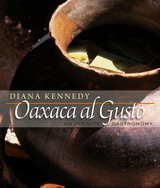 Oaxaca al Gusto: An Infinite Gastronomy
By Diana Kennedy
University of Texas Press, 2010 No one has done more to introduce the world to the authentic, flavorful cuisines of Mexico than Diana Kennedy. Acclaimed as the Julia Child of Mexican cooking, Kennedy has been an intrepid, indefatigable student of Mexican foodways for more than fifty years and has published several classic books on the subject, including The Cuisines of Mexico (now available in The Essential Cuisines of Mexico, a compilation of her first three books), The Art of Mexican Cooking, My Mexico, and From My Mexican Kitchen. Her uncompromising insistence on using the proper local ingredients and preparation techniques has taught generations of cooks how to prepare—and savor—the delicious, subtle, and varied tastes of Mexico. In Oaxaca al Gusto, Kennedy takes us on an amazing journey into one of the most outstanding and colorful cuisines in the world. The state of Oaxaca is one of the most diverse in Mexico, with many different cultural and linguistic groups, often living in areas difficult to access. Each group has its own distinctive cuisine, and Diana Kennedy has spent many years traveling the length and breadth of Oaxaca to record in words and photographs "these little-known foods, both wild and cultivated, the way they were prepared, and the part they play in the daily or festive life of the communities I visited." Oaxaca al Gusto is the fruit of these labors—and the culmination of Diana Kennedy's life's work. Organized by regions, Oaxaca al Gusto presents some three hundred recipes—most from home cooks—for traditional Oaxacan dishes. Kennedy accompanies each recipe with fascinating notes about the ingredients, cooking techniques, and the food's place in family and communal life. Lovely color photographs illustrate the food and its preparation. A special feature of the book is a chapter devoted to the three pillars of the Oaxacan regional cuisines—chocolate, corn, and chiles. Notes to the cook, a glossary, a bibliography, and an index complete the volume. An irreplaceable record of the infinite world of Oaxacan gastronomy, Oaxaca al Gusto belongs on the shelf of everyone who treasures the world's traditional regional cuisines.
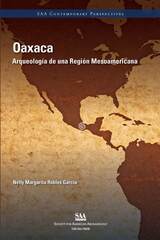 Oaxaca: Arqueología de una Región Mesoamericana
Nelly M. Robles García
University Press of Colorado, 2019 Este libro (SAA Press Current Perspectives Series) ofrece una visión general de la arqueología de la región oaxaqueña, abordada desde sus orígenes, con los científicos del siglo XIX, hasta los estudios más recientes en la época moderna. Ubicada en el sur de México, esta región mesoamericana ha sido considerada como cuna de civilizaciones debido a su ininterrumpido desarrollo cultural, desde la prehistoria hasta nuestros días. El libro se presenta organizado en una manera cronológica, a fin de que el lector pueda comprender el desarrollo de las antiguas culturas que han convivido a lo largo de varios siglos en este agreste territorio. Ofrece una compilación de los conocimientos emanados de los varios proyectos arqueológicos que se han realizado permanentemente en Oaxaca, que han permitido ir construyendo la historia de los grupos humanos asentados desde la etapa lítica hasta la llegada de la conquista europea en las diversas sub-regiones. Muestra también los diversos enfoques de la arqueología mexicana y norteamericana que la han modelado, y que se han complementado de manera afortunada para hacer de Oaxaca una de las regiones más estudiadas de Mesoamérica.
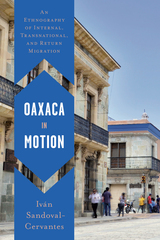 Oaxaca in Motion: An Ethnography of Internal, Transnational, and Return Migration
Iván Sandoval-Cervantes
University of Texas Press, 2022 Migration is typically seen as a transnational phenomenon, but it happens within borders, too. Oaxaca in Motion documents a revealing irony in the latter sort: internal migration often is global in character, motivated by foreign affairs and international economic integration, and it is no less transformative than its cross-border analogue. Iván Sandoval-Cervantes spent nearly two years observing and interviewing migrants from the rural Oaxacan town of Santa Ana Zegache. Many women from the area travel to Mexico City to work as domestics, and men are encouraged to join the Mexican military to fight the US-instigated “war on drugs” or else leave their fields to labor in industries serving global supply chains. Placing these moves in their historical and cultural context, Sandoval-Cervantes discovers that migrants’ experiences dramatically alter their conceptions of gender, upsetting their traditional notions of masculinity and femininity. And some migrants bring their revised views with them when they return home, influencing their families and community of origin. Comparing Oaxacans moving within Mexico to those living along the US West Coast, Sandoval-Cervantes clearly demonstrates the multiplicity of answers to the question, “Who is a migrant?”
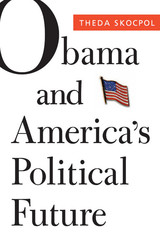 Obama and America’s Political Future
Theda Skocpol
Harvard University Press, 2012 Barack Obama’s galvanizing victory in 2008, coming amid the greatest economic crisis since the 1930s, opened the door to major reforms. But the president quickly faced skepticism from supporters and fierce opposition from Republicans, who scored sweeping wins in the 2010 midterm election. Here, noted political scientist Theda Skocpol surveys the political landscape and explores its most consequential questions: What happened to Obama’s “new New Deal”? Why have his achievements enraged opponents more than they have satisfied supporters? How has the Tea Party’s ascendance reshaped American politics?
Skocpol’s compelling account rises above conventional wisdom and overwrought rhetoric. The Obama administration’s response to the recession produced bold initiatives—health care reform, changes in college loans, financial regulation—that promise security and opportunity. But these reforms are complex and will take years to implement. Potential beneficiaries do not readily understand them, yet the reforms alarm powerful interests and political enemies, creating the volatile mix of confusion and fear from which Tea Party forces erupted. Skocpol dissects the popular and elite components of the Tea Party reaction that has boosted the Republican Party while pushing it far to the right at a critical juncture for U.S. politics and governance.
Skocpol’s analysis is accompanied by contributions from two fellow scholars and a former congressman. At this moment of economic uncertainty and extreme polarization, as voters prepare to render another verdict on Obama’s historic presidency, Skocpol and her respondents help us to understand its triumphs and setbacks and see where we might be headed next.
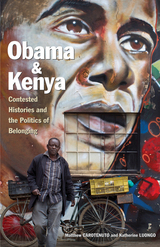 Obama and Kenya: Contested Histories and the Politics of Belonging
Matthew Carotenuto
Ohio University Press, 2016 Barack Obama’s political ascendancy has focused considerable global attention on the history of Kenya generally and the history of the Luo community particularly. From politicos populating the blogosphere and bookshelves in the U.S and Kenya, to tourists traipsing through Obama’s ancestral home, a variety of groups have mobilized new readings of Kenya’s past in service of their own ends. Through narratives placing Obama into a simplified, sweeping narrative of anticolonial barbarism and postcolonial “tribal” violence, the story of the United States president’s nuanced relationship to Kenya has been lost amid stereotypical portrayals of Africa. At the same time, Kenyan state officials have aimed to weave Obama into the contested narrative of Kenyan nationhood. Matthew Carotenuto and Katherine Luongo argue that efforts to cast Obama as a “son of the soil” of the Lake Victoria basin invite insights into the politicized uses of Kenya’s past. Ideal for classroom use and directed at a general readership interested in global affairs, Obama and Kenya offers an important counterpoint to the many popular but inaccurate texts about Kenya’s history and Obama’s place in it as well as focused, thematic analyses of contemporary debates about ethnic politics, “tribal” identities, postcolonial governance, and U.S. African relations.
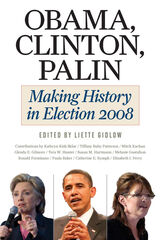 Obama, Clinton, Palin: Making History in Elections 2008
Edited by Liette Gidlow
University of Illinois Press, 2011 Election 2008 made American history, but it was also the product of American history. Barack Obama, Hillary Clinton, and Sarah Palin smashed through some of the most enduring barriers to high political office, but their exceptional candidacies did not come out of nowhere. In these timely and accessible essays, a distinguished group of historians explores how the candidates both challenged and reinforced historic stereotypes of race and sex while echoing familiar themes in American politics and exploiting new digital technologies. Contributors include Kathryn Kish Sklar on Clinton’s gender masquerade; Tiffany Ruby Patterson on the politics of black anger; Mitch Kachun on Michelle Obama and stereotypes about black women’s bodies; Glenda E. Gilmore on black women’s century of effort to expand political opportunities for African Americans; Tera W. Hunter on the lost legacy of Shirley Chisholm; Susan M. Hartmann on why the U.S. has not yet followed western democracies in electing a female head of state; Melanie Gustafson on Palin and the political traditions of the American West; Ronald Formisano on the populist resurgence in 2008; Paula Baker on how digital technologies threaten the secret ballot; Catherine E. Rymph on Palin’s distinctive brand of political feminism; and Elisabeth I. Perry on the new look of American leadership.
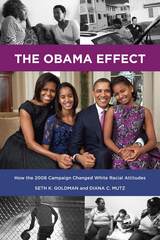 The Obama Effect: How the 2008 Campaign Changed White Racial Attitudes
Seth K. Goldman
Russell Sage Foundation, 2014 Barack Obama’s historic 2008 campaign exposed many white Americans more than ever before to a black individual who defied negative stereotypes. While Obama’s politics divided voters, Americans uniformly perceived Obama as highly successful, intelligent, and charismatic. What effect, if any, did the innumerable images of Obama and his family have on racial attitudes among whites? In The Obama Effect, Seth K. Goldman and Diana C. Mutz uncover persuasive evidence that white racial prejudice toward blacks significantly declined during the Obama campaign. Their innovative research rigorously examines how racial attitudes form, and whether they can be changed for the better. The Obama Effect draws from a survey of 20,000 people, whom the authors interviewed up to five times over the course of a year. This panel survey sets the volume apart from most research on racial attitudes. From the summer of 2008 through Obama’s inauguration in 2009, there was a gradual but clear trend toward lower levels of white prejudice against blacks. Goldman and Mutz argue that these changes occurred largely without people’s conscious awareness. Instead, as Obama became increasingly prominent in the media, he emerged as an “exemplar” that countered negative stereotypes in the minds of white Americans. Unfortunately, this change in attitudes did not last. By 2010, racial prejudice among whites had largely returned to pre-2008 levels. Mutz and Goldman argue that news coverage of Obama declined substantially after his election, allowing other, more negative images of African Americans to re-emerge in the media. The Obama Effect arrives at two key conclusions: Racial attitudes can change even within relatively short periods of time, and how African Americans are portrayed in the mass media affects how they change. While Obama’s election did not usher in a “post-racial America,” The Obama Effect provides hopeful evidence that racial attitudes can—and, for a time, did—improve during Obama’s campaign. Engaging and thorough, this volume offers a new understanding of the relationship between the mass media and racial attitudes in America.
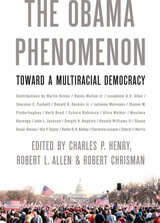 The Obama Phenomenon: Toward a Multiracial Democracy
Edited by Charles P. Henry, Robert L. Allen, and Robert Chrisman
University of Illinois Press, 2011 Barack Obama's campaign and electoral victory demonstrated the dynamic nature of American democracy. Beginning as a special issue of The Black Scholar, this probing collection illustrates the impact of "the Obama phenomenon" on the future of U.S. race relations through readings on Barack Obama's campaign as well as the idealism and pragmatism of the Obama administration. Some of the foremost scholars of African American politics and culture from an array of disciplines--including political science, theology, economics, history, journalism, sociology, cultural studies, and law--offer critical analyses of topics as diverse as Obama and the media, Obama’s connection with the hip hop community, the public's perception of first lady Michelle Obama, voter behavior, and the history of racial issues in presidential campaigns since the 1960s. Contributors are Josephine A. V. Allen, Robert L. Allen, Herb Boyd, Donald R. Deskins Jr., Cheryl I. Harris, Charles P. Henry, Dwight N. Hopkins, John L. Jackson, Maulana Karenga, Robin D. G. Kelley, Martin Kilson, Clarence Lusane, Julianne Malveaux, Shaun Ossei-Owusu, Dianne M. Pinderhughes, Sherman C. Puckett, Scharn Robinson, Ula Y. Taylor, Alice Walker, Hanes Walton Jr., and Ronald Williams II.
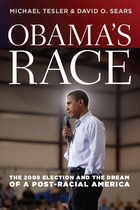 Obama's Race: The 2008 Election and the Dream of a Post-Racial America
Michael Tesler and David O. Sears
University of Chicago Press, 2010 Barack Obama’s presidential victory naturally led people to believe that the United States might finally be moving into a post-racial era. Obama’s Race—and its eye-opening account of the role played by race in the election—paints a dramatically different picture.
The authors argue that the 2008 election was more polarized by racial attitudes than any other presidential election on record—and perhaps more significantly, that there were two sides to this racialization: resentful opposition to and racially liberal support for Obama. As Obama’s campaign was given a boost in the primaries from racial liberals that extended well beyond that usually offered to ideologically similar white candidates, Hillary Clinton lost much of her longstanding support and instead became the preferred candidate of Democratic racial conservatives. Time and again, voters’ racial predispositions trumped their ideological preferences as John McCain—seldom described as conservative in matters of race—became the darling of racial conservatives from both parties. Hard-hitting and sure to be controversial, Obama’s Race will be both praised and criticized—but certainly not ignored.
Obama's Washington: Political Leadership in a Partisan Era
Edited by Clodagh Harrington
University of London Press, 2014 This volume examines the array of challenges facing the Obama administration and the president himself. Topics range from how best to manage a ruptured economy to controlling the budget, the green agenda, foreign policy, and the recalibration of U.S. relations with Britain. It also includes sections on presidential leadership, elections,healthcare, and food poverty. The common theme throughout is the issue of governing in a fractured, unruly political environment, and the accompanying difficulties. Contributing scholars, based at academic institutions in the United States and the UK, offer a range of informed perspectives throughout this engaging work. Packed with detail yet highly accessible, this volume will appeal to those interested in American politics, history, and the political process.
“Obeah” and Other Martinican Stories
Marie-Magdeleine Carbet
Michigan State University Press, 2017 This volume comprises French versions and English translations of seven short stories written by Marie-Magdeleine Carbet, Martinique’s most prolific woman writer. Four of these stories are previously unpublished, culled from documents obtained from Carbet’s niece. While analyses of the literature of the French Caribbean have tended to portray these people typically as suffering from pathologies of colonial oppression, the situations and reflections presented in these stories offer different perspectives on the lives and concerns of ordinary Martinicans and thus provide insight into some of the missing links of the sociocultural scene. This unique, multifaceted text fills an important pedagogical and scholarly need, and allows the reader to access the daily lives of French Caribbeans in a significantly authentic way.
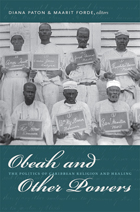 Obeah and Other Powers: The Politics of Caribbean Religion and Healing
Diana Paton and Maarit Forde, eds.
Duke University Press, 2012 In Obeah and Other Powers, historians and anthropologists consider how marginalized spiritual traditions—such as obeah, Vodou, and Santería—have been understood and represented across the Caribbean since the seventeenth century. In essays focused on Cuba, Haiti, Jamaica, Martinique, Puerto Rico, Trinidad and Tobago, and the wider Anglophone Caribbean, the contributors explore the fields of power within which Caribbean religions have been produced, modified, appropriated, and policed. The "other powers" of the book's title have helped to shape, or attempted to curtail, Caribbean religions and healing practices. These powers include those of capital and colonialism; of states that criminalize some practices and legitimize others; of occupying armies that rewrite constitutions and reorient economies; of writers, filmmakers, and scholars who represent Caribbean practices both to those with little knowledge of the region and to those who live there; and, not least, of the millions of people in the Caribbean whose relationships with one another, as well as with capital and the state, have long been mediated and experienced through religious formations and discourses.
Contributors. Kenneth Bilby, Erna Brodber, Alejandra Bronfman, Elizabeth Cooper, Maarit Forde, Stephan Palmié, Diana Paton, Alasdair Pettinger, Lara Putnam, Karen Richman, Raquel Romberg, John Savage, Katherine Smith
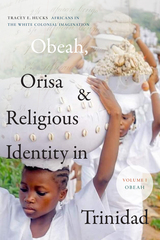 Obeah, Orisa, and Religious Identity in Trinidad, Volume I, Obeah: Africans in the White Colonial Imagination, Volume 1
Tracey E. Hucks
Duke University Press, 2022 Obeah, Orisa, and Religious Identity in Trinidad is an expansive two-volume examination of social imaginaries concerning Obeah and Yoruba-Orisa from colonialism to the present. Analyzing their entangled histories and systems of devotion, Tracey E. Hucks and Dianne M. Stewart articulate how these religions were criminalized during slavery and colonialism yet still demonstrated autonomous modes of expression and self-defense. In Volume I, Obeah, Hucks traces the history of African religious repression in colonial Trinidad through the late nineteenth century. Drawing on sources ranging from colonial records, laws, and legal transcripts to travel diaries, literary fiction, and written correspondence, she documents the persecution and violent penalization of African religious practices encoded under the legal classification of “obeah.” A cult of antiblack fixation emerged as white settlers defined themselves in opposition to Obeah, which they imagined as terrifying African witchcraft. These preoccupations revealed the fears that bound whites to one another. At the same time, persons accused of obeah sought legal vindication and marshaled their own spiritual and medicinal technologies to fortify the cultural heritages, religious identities, and life systems of African-diasporic communities in Trinidad.
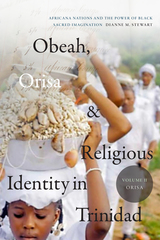 Obeah, Orisa, and Religious Identity in Trinidad, Volume II, Orisa: Africana Nations and the Power of Black Sacred Imagination, Volume 2
Dianne M. Stewart
Duke University Press, 2022 Obeah, Orisa, and Religious Identity in Trinidad is an expansive two-volume examination of social imaginaries concerning Obeah and Yoruba-Orisa from colonialism to the present. Analyzing their entangled histories and systems of devotion, Tracey E. Hucks and Dianne M. Stewart articulate how these religions were criminalized during slavery and colonialism yet still demonstrated autonomous modes of expression and self-defense. In Volume II, Orisa, Stewart scrutinizes the West African heritage and religious imagination of Yoruba-Orisa devotees in Trinidad from the mid-nineteenth century to the present and explores their meaning-making traditions in the wake of slavery and colonialism. She investigates the pivotal periods of nineteenth-century liberated African resettlement, the twentieth-century Black Power movement, and subsequent campaigns for the civil right to religious freedom in Trinidad. Disrupting syncretism frameworks, Stewart probes the salience of Africa as a religious symbol and the prominence of Africana nations and religious nationalisms in projects of black belonging and identity formation, including those of Orisa mothers. Contributing to global womanist thought and activism, Yoruba-Orisa spiritual mothers disclose the fullness of the black religious imagination’s affective, hermeneutic, and political capacities.
The Obedience of a King of Portugal
Vasco Fernandes de LucenaTranslated by Francis M. Rogers
University of Minnesota Press, 1958
The Obedience of a King of Portugal was first published in 1958. Minnesota Archive Editions uses digital technology to make long-unavailable books once again accessible, and are published unaltered from the original University of Minnesota Press editions.
Especially designed as an example of fine book making, this volume presents a facsimile reproduction and a translation of a fifteen-century publication. The original upon which this publication is based is in the James Ford Bell Collection in the University of Minnesota library. The text is that of the obedience oration of Vasco Fernandes de Lucena, delivered for John II of Portugal to Pope Innocent VIII in 1485. Scholars consider the work a magnificent example of the Latin oratorical prose of the period.
Obedient Sons: The Discourse of Youth and Generations in American Culture, 1630-1860
Glenn Wallach
University of Massachusetts Press, 2009 This work examines how the discourses surrounding "youth" and "generations" in America, from the colonial era to the eve of the Civil War, emphasized continuity rather than conflict. This invested the young with a special responsibility for building a new society that preserved traditional values
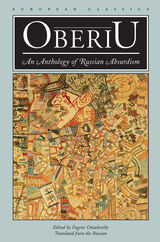 OBERIU: An Anthology of Russian Absurdism
Eugene Ostashevsky
Northwestern University Press, 2006 OBERIU is an anthology of short works by three leading Russian absurdists: Alexander Vvedensky, Daniil Kharms, and Nikolai Zabolotsky. Between 1927 and 1930, the three made up the core of an avant-garde literary group called OBERIU (from an acronym standing for The Union of Real Art). It was a movement so artfully anarchic, and so quickly suppressed, that readers only began to discover its strange and singular brilliance three decades after it was extinguished—and then only in samizdat and émigré publications.
Some called it the last of the Russian avant-garde, and others called it the first (and last) instance of Absurdism in Russia. Though difficulty to pigeon-hole, OBERIU and the pleasures of its poetry and prose are, with this volume, at long last fully open to English-speaking readers. Skillfully translated to preserve the weird charm of the originals, these poems and prose pieces display all the hilarity and tragedy, the illogical action and puppetlike violence and eroticism, and the hallucinatory intensity that brought down the wrath of the Soviet censors. Today they offer an uncanny reflection of the distorted reality they reject.
 Obesity among Poor Americans: Is Public Assistance the Problem?
Patricia K. Smith
Vanderbilt University Press, 2009 Obesity costs our society billions of dollars a year in lost productivity and medical expenses, roughly half of which the federal government pays through Medicare and Medicaid. We know obesity plagues the poor more than the non-poor and poor women more than poor men. Poor women make up the majority of adult welfare recipients--coincidence or causal connection? This book investigates the controversial claim by welfare critics that public assistance programs like Food Stamps and the National School Lunch programs contribute to obesity among the poor. The author synthesizes empirical evidence from an array of disciplines--anthropology, economics, epidemiology, medicine, nutrition science, marketing, psychology, public health, sociology, and urban planning--to test this claim and to test whether other causal processes are at work. With a lucid presentation that makes it a model for applying research to questions of social policy, the book lays out the different hypotheses and the possible causal pathways within each. The four central chapters test whether "public assistance causes obesity," "obesity causes public assistance," "poverty causes both public assistance and obesity," and "Factor X causes both." The factors in the last category that may relate to both public assistance and obesity include stress, disability, and physical abuse.
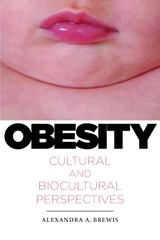 Obesity: Cultural and Biocultural Perspectives
Brewis, Alexandra A
Rutgers University Press, 2010 In a world now filled with more people who are overweight than underweight, public health and medical perspectives paint obesity as a catastrophic epidemic that threatens to overwhelm health systems and undermine life expectancies globally. In many societies, being obese also creates profound personal suffering because it is so culturally stigmatized. Yet despite loud messages about the health and social costs of being obese, weight gain is a seemingly universal aspect of the modern human condition.
Grounded in a holistic anthropological approach and using a range of ethnographic and ecological case studies, Obesity shows that the human tendency to become and stay fat makes perfect sense in terms of evolved human inclinations and the physical and social realities of modern life. Drawing on her own fieldwork in the rural United States, Mexico, and the Pacific Islands over the last two decades, Alexandra A. Brewis addresses such critical questions as why obesity is defined as a problem and why some groups are so much more at risk than others. She suggests innovative ways that anthropology and other social sciences can use community-based research to address the serious public health and social justice concerns provoked by the global spread of obesity.
 Obesity Surgery: Stories Of Altered Lives
Marta Meana
University of Nevada Press, 2008
Obesity is a major national health problem, and science has been developing a number of ways to address it. The most revolutionary is surgical intervention to alter the gastrointestinal system so that less food/nutrients can be consumed and/or absorbed. People who undergo this surgery usually experience drastic weight loss and dramatic health improvements. They also discover a new sense of self and face challenges often unimaginable when they were obese.
Using in-depth, first person accounts of 33 men and women who underwent weight-loss surgery, this book elaborates on the complexities of finally getting what you wished for— the good, the bad, and the totally unexpected.
We live in a culture fascinated by physical make-overs, but no one talks about their psychological consequences. Losing a lot of weight is perhaps the most extreme make-over of all. It leaves people emotionally changed, and these changes are the heart of this book.The fascinating narratives contain important lessons for individuals considering or having had the surgery and for those who try to help them. It is simply a story of how finally getting what you’ve always wished for can be much more complicated affair than you ever imagined.
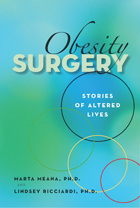 Obesity Surgery: Stories Of Altered Lives
Marta Meana
University of Nevada Press, 2008 Obesity is a major national health problem, and science has been developing a number of ways to address it. The most revolutionary is surgical intervention to alter the gastrointestinal system so that less food/nutrients can be consumed and/or absorbed. People who undergo this surgery usually experience drastic weight loss and dramatic health improvements. They also discover a new sense of self and face challenges often unimaginable when they were obese. Using in-depth, first person accounts of 33 men and women who underwent weight-loss surgery, this book elaborates on the complexities of finally getting what you wished for— the good, the bad, and the totally unexpected. We live in a culture fascinated by physical make-overs, but no one talks about their psychological consequences. Losing a lot of weight is perhaps the most extreme make-over of all. It leaves people emotionally changed, and these changes are the heart of this book.The fascinating narratives contain important lessons for individuals considering or having had the surgery and for those who try to help them. It is simply a story of how finally getting what you’ve always wished for can be much more complicated affair than you ever imagined.
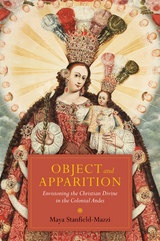 Object and Apparition: Envisioning the Christian Divine in the Colonial Andes
Maya Stanfield-Mazzi
University of Arizona Press, 2013 When Christianity was imposed on Native peoples in the Andes, visual images played a fundamental role, yet few scholars have written about this significant aspect. Object and Apparition proposes that Christianity took root in the region only when both Spanish colonizers and native Andeans actively envisioned the principal deities of the new religion in two- and three-dimensional forms. The book explores principal works of art involved in this process, outlines early strategies for envisioning the Christian divine, and examines later, more effective approaches.
Maya Stanfield-Mazzi demonstrates that among images of the divine there was constant interplay between concrete material objects and ephemeral visions or apparitions. Three-dimensional works of art, specifically large-scale statues of Christ and the Virgin Mary, were key to envisioning the Christian divine, the author contends. She presents in-depth analysis of three surviving statues: the Virgins of Pomata and Copacabana (Lake Titicaca region) and Christ of the Earthquakes from Cusco.
Two-dimensional painted images of those statues emerged later. Such paintings depicted the miracle-working potential of specific statues and thus helped to spread the statues’ fame and attract devotees. “Statue paintings” that depict the statues enshrined on their altars also served the purpose of presenting images of local Andean divinities to believers outside church settings.
Stanfield-Mazzi describes the unique features of Andean Catholicism while illustrating its connections to both Spanish and Andean cultural traditions. Based on thorough archival research combined with stunning visual analysis, Object and Apparition analyzes the range of artworks that gave visual form to Christianity in the Andes and ultimately caused the new religion to flourish.
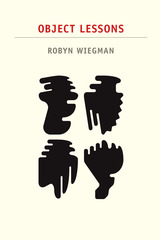 Object Lessons
Robyn Wiegman
Duke University Press, 2012 No concept has been more central to the emergence and evolution of identity studies than social justice. In historical and theoretical accounts, it crystallizes the progressive politics that have shaped the academic study of race, gender, and sexuality. Yet few scholars have deliberated directly on the political agency that notions of justice confer on critical practice. In Object Lessons, Robyn Wiegman contemplates this lack of attention, offering the first sustained inquiry into the political desire that galvanizes identity fields. In each chapter, she examines a key debate by considering the political aspirations that shape it. Addressing Women's Studies, she traces the ways that "gender" promises to overcome the exclusions of "women." Turning to Ethnic Studies, she examines the deconstruction of "whiteness" as an antiracist methodology. As she explores American Studies, she links internationalization to the broader quest for noncomplicity in contemporary criticism. Her analysis of Queer Studies demonstrates how the commitment to antinormativity normalizes the field. In the penultimate chapter, Wiegman addresses intersectionality as the most coveted theoretical approach to political resolution in all of these fields.
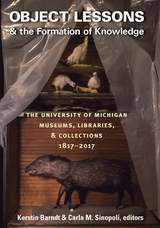 Object Lessons and the Formation of Knowledge: The University of Michigan Museums, Libraries, and Collections 1817–2017
Kerstin Barndt and Carla M. Sinopoli, editors
University of Michigan Press, 2017 Object Lessons and the Formation of Knowledge explores the museums, libraries, and special collections of the University of Michigan on its bicentennial. Since its inception, U-M has collected and preserved objects: biological and geological specimens; ethnographic and archaeological artifacts; photographs and artistic works; encyclopedia, textbooks, rare books, and documents; and many other items. These vast collections and libraries testify to an ambitious vision of the research university as a place where knowledge is accumulated, shared, and disseminated through teaching, exhibition, and publication. Today, two hundred years after the university’s founding, museums, libraries, and archives continue to be an important part of U-M, which maintains more than twenty distinct museums, libraries, and collections. Viewed from a historic perspective, they provide a window through which we can explore the transformation of the academy, its public role, and the development of scholarly disciplines over the last two centuries. Even as they speak to important facets of Michigan’s history, many of these collections also remain essential to academic research, knowledge production, and object-based pedagogy. Moreover, the university’s exhibitions and displays attract hundreds of thousands of visitors per year from the campus, regional, and global communities. Beautifully illustrated with color photographs of these world-renowned collections, this book will appeal to readers interested in the history of museums and collections, the formation of academic disciplines, and of course the University of Michigan.
Object Lessons: The Novel as a Theory of Reference
Jami Bartlett
University of Chicago Press, 2016 Object Lessons explores a fundamental question about literary realism: How can language evoke that which is not language and render objects as real entities? Drawing on theories of reference in the philosophy of language, Jami Bartlett examines novels by George Meredith, William Makepeace Thackeray, Elizabeth Gaskell, and Iris Murdoch that provide allegories of language use in their descriptions, characters, and plots. Bartlett shows how these authors depict the philosophical complexities of reference by writing through and about referring terms, the names and descriptions that allow us to “see” objects. At the same time, she explores what it is for words to have meaning and delves into the conditions under which a reference can be understood. Ultimately, Object Lessons reveals not only how novels make references, but also how they are about referring.
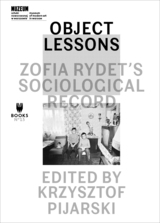 Object Lessons: Zofia Rydet’s Sociological Record
Edited by Krzysztof Pijarski
Museum of Modern Art in Warsaw, 2017 In 1978, Zofia Rydet (1911–97) began work on a monumental project that would come to be known as her “Sociological Record”: photographing the people of Poland at their homes, she produced an extraordinary archive of around twenty thousand negatives. The images include faces, interiors, furnishings, and more. The undertaking consumed Rydet so completely that she was never able to give it final shape through a book or an art show.
Object Lessons, a new volume of essays inspired by an exhibition at the Museum of Modern Art in Warsaw, helps to dispel the myths that have formed around the project in recent years and introduces the photographer to a new global audience. The essays here contextualize and interpret “Sociological Record” from different perspectives, opening up the work to further inquiry as both an object of interpretation and a subject of theoretical interest. Rydet herself remained unresolved over the question of how to define her work, leaving the viewer to ponder whether her magnum opus is a piece of art or science. What does remain undisputed is that “Sociological Record” is a striking testimony of its time.
A fascinating celebration of Rydet’s work that is sure to spur on fresh debate about art as a social practice and a tool of knowledge, Object Lessons reminds us of photography’s incredible power to provide a visual way of thinking and a provocative method for archiving the world.
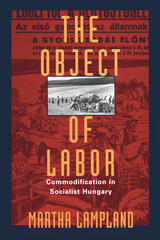 The Object of Labor: Commodification in Socialist Hungary
Martha Lampland
University of Chicago Press, 1995 Did socialist policies leave the economies of Eastern Europe unprepared for current privatization efforts? Under communist rule, were rural villages truly left untouched by capitalism? In this historical ethnography of rural Hungary, Martha Lampland argues not only that the transition to capitalism was well under way by the 1930s, but that socialist policies themselves played a crucial role in the development of capitalism by transforming conceptions of time, money, and labor.
Exploring the effects of social change thrust upon communities against their will, Lampland examines the history of agrarian labor in Hungary from World War I to the early 1980s. She shows that rural workers had long been subject to strict state policies similar to those imposed by collectivization. Since the values of privatization and individualism associated with capitalism characterized rural Hungarian life both prior to and throughout the socialist period, capitalist ideologies of work and morality survived unscathed in the private economic practices of rural society. Lampland also shows how labor practices under socialism prepared the workforce for capitalism. By drawing villagers into factories and collective farms, for example, the socialist state forced farmers to work within tightly controlled time limits and to calculate their efforts in monetary terms. Indeed, this control and commodification of rural labor under socialism was essential to the transformation to capitalism.
The Object of Performance: The American Avant-Garde since 1970
Henry M. Sayre
University of Chicago Press, 1989 Sayre defines for the first time the apparently diffuse avant-garde art of the past two decades in terms of its distinctly postmodern concerns. The range of arts discussed here encompasses contemporary dance, photography, oral poetics, performance art, and earthworks.
"Sayre has written one of the most intelligent, sensible, and readable accounts of the tenents of Postmodern artmaking published to date."—Jeff Abell, New Art Examiner
"No one can read The Object of Performance without gaining a far better idea than before of what has happened to art, and, in some measure, why. . . . I find this book consistently illuminating."—Arthur C. Danto
The Object of the Atlantic: Concrete Aesthetics in Cuba, Brazil, and Spain, 1868–1968
Rachel Price
Northwestern University Press, 2014 The Object of the Atlantic is a wide-ranging study of the transition from a concern with sovereignty to a concern with things in Iberian Atlantic literature and art produced between 1868 and 1968. Rachel Price uncovers the surprising ways that concrete aesthetics from Cuba, Brazil, and Spain drew not only on global forms of constructivism but also on a history of empire, slavery, and media technologies from the Atlantic world. Analyzing Jose Marti’s notebooks, Joaquim de Sousandrade’s poetry, Ramiro de Maeztu’s essays on things and on slavery, 1920s Cuban literature on economic restructuring, Ferreira Gullar’s theory of the “non-object,” and neoconcrete art, Price shows that the turn to objects—and from these to new media networks—was rooted in the very philosophies of history that helped form the Atlantic world itself.
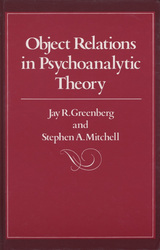 Object Relations in Psychoanalytic Theory
Jay Greenberg and Stephen A. Mitchell
Harvard University Press, 1983 Object Relations in Psychoanalytic Theory provides a masterful overview of the central issue concerning psychoanalysts today: finding a way to deal in theoretical terms with the importance of the patient's relationships with other people. Just as disturbed and distorted relationships lie at the core of the patient's distress, so too does the relation between analyst and patient play a key role in the analytic process. All psychoanalytic theories recognize the clinical centrality of “object relations,” but much else about the concept is in dispute. In their ground-breaking exercise in comparative psychoanalysis, the authors offer a new way to understand the dramatic and confusing proliferation of approaches to object relations. The result is major clarification of the history of psychoanalysis and a reliable guide to the fundamental issues that unite and divide the field.
Greenberg and Mitchell, both psychoanalysts in private practice in New York, locate much of the variation in the concept of object relations between two deeply divergent models of psychoanalysis: Freud's model, in which relations with others are determined by the individual's need to satisfy primary instinctual drives, and an alternative model, in which relationships are taken as primary. The authors then diagnose the history of disagreement about object relations as a product of competition between these disparate paradigms. Within this framework, Sullivan's interpersonal psychiatry and the British tradition of object relations theory, led by Klein, Fairbairn, Winnicott, and Guntrip, are shown to be united by their rejection of significant aspects of Freud's drive theory. In contrast, the American ego psychology of Hartmann, Jacobson, and Kernberg appears as an effort to enlarge the classical drive theory to accommodate information derived from the study of object relations.
Object Relations in Psychoanalytic Theory offers a conceptual map of the most difficult terrain in psychoanalysis and a history of its most complex disputes. In exploring the counterpoint between different psychoanalytic schools and traditions, it provides a synthetic perspective that is a major contribution to the advance of psychoanalytic thought.
Object-Based Learning: Exploring Museums and Collections in Education
Thomas Kador
University College London, 2025 A rich resource illustrating the key ideas behind learning with things.
This textbook provides an overview of some of the most important approaches to material culture and object analysis to illustrate broader themes and trends in museum studies and pedagogy. Covering diverse topics related to curatorial practice and exhibiting objects, including accessibility, curatorial ethics, colonialism and museums, audience engagement, and histories of collecting, Object-Based Learning weaves together important historical context and theoretical perspectives with practical case studies and exercises. It also includes discussion of timely issues like the role of digital technologies in teaching with objects, the psychosocial role of objects, and the use of collections in health and wellness.
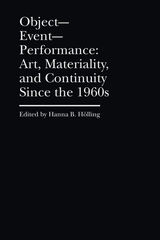 Object—Event— Performance: Art, Materiality, and Continuity Since the 1960s
Edited by Hanna B. Hölling
Bard Graduate Center, 2021 A volume considering questions of conservation that arise with new artistic mediums and practices.
Much of the artwork that rose to prominence in the second half of the twentieth century took on novel forms—such as installation, performance, event, video, film, earthwork, and intermedia works with interactive and networked components—that pose a new set of questions about what art actually is, both physically and conceptually. For conservators, this raises an existential challenge when considering what elements of these artworks can and should be preserved.
This provocative volume revisits the traditional notions of conservation and museum collecting that developed over the centuries to suit a conception of art as static, fixed, and permanent objects. Conservators and museums increasingly struggle with issues of conservation for works created from the mid-twentieth to the twenty-first century that are unstable over time. The contributors ask what it means to conserve artworks that fundamentally address and embody the notion of change and, through this questioning, guide us to reevaluate the meaning of art, of objects, and of materiality itself. Object—Event—Performance considers a selection of post-1960s artworks that have all been chosen for their instability, changeability, performance elements, and processes that pose questions about their relationship to conservation practices. This volume will be a welcome resource on contemporary conservation for art historians, scholars of dance and theater studies, curators, and conservators.
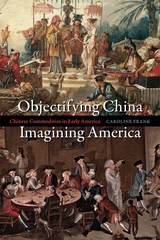 Objectifying China, Imagining America: Chinese Commodities in Early America
Caroline Frank
University of Chicago Press, 2011 With the ever-expanding presence of China in the global economy, Americans more and more look east for goods and trade. But as Caroline Frank reveals, this is not a new development. China loomed as large in the minds—and account books—of eighteenth-century Americans as it does today. Long before they had achieved independence from Britain and were able to sail to Asia themselves, American mariners, merchants, and consumers were aware of the East Indies and preparing for voyages there. Focusing on the trade and consumption of porcelain, tea, and chinoiserie, Frank shows that colonial Americans saw themselves as part of a world much larger than just Britain and Europe Frank not only recovers the widespread presence of Chinese commodities in early America and the impact of East Indies trade on the nature of American commerce, but also explores the role of the this trade in American state formation. She argues that to understand how Chinese commodities fueled the opening acts of the Revolution, we must consider the power dynamics of the American quest for china—and China—during the colonial period. Filled with fresh and surprising insights, this ambitious study adds new dimensions to the ongoing story of America’s relationship with China.
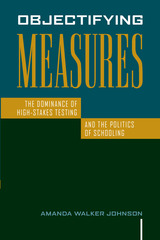 Objectifying Measures: The Dominance of High-Stakes Testing and the Politics of Schooling
Amanda Walker Johnson
Temple University Press, 2009 In the past twenty years, the number of educational tests with high-stakes consequences—such as promotion to the next grade level or graduating from high school—has increased. At the same time, the difficulty of the tests has also increased. In Texas, a Latina state legislator introduced and lobbied for a bill that would take such factors as teacher recommendations, portfolios of student work, and grades into account for the students—usually students of color—who failed such tests. The bill was defeated. Using several types of ethnographic study (personal interviews, observations of the Legislature in action, news broadcasts, public documents from the Legislature and Texas Education Agency), Amanda Walker Johnson observed the struggle for the bill’s passage. Through recounting this experience, Objectifying Measures explores the relationship between the cultural production of scientific knowledge (of statistics in particular) and the often intuitive resistance to objectification of those adversely affected by the power of policies underwritten as "scientific."
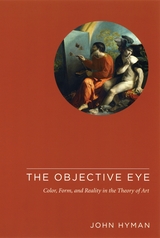 The Objective Eye: Color, Form, and Reality in the Theory of Art
John Hyman
University of Chicago Press, 2006 “The longer you work, the more the mystery deepens of what appearance is, or how what is called appearance can be made in another medium."—Francis Bacon, painter
This, in a nutshell, is the central problem in the theory of art. It has fascinated philosophers from Plato to Wittgenstein. And it fascinates artists and art historians, who have always drawn extensively on philosophical ideas about language and representation, and on ideas about vision and the visible world that have deep philosophical roots.
John Hyman’s The Objective Eye is a radical treatment of this problem, deeply informed by the history of philosophy and science, but entirely fresh. The questions tackled here are fundamental ones: Is our experience of color an illusion? How does the metaphysical status of colors differ from that of shapes? What is the difference between a picture and a written text? Why are some pictures said to be more realistic than others? Is it because they are especially truthful or, on the contrary, because they deceive the eye?
The Objective Eye explores the fundamental concepts we use constantly in our most innocent thoughts and conversations about art, as well as in the most sophisticated art theory. The book progresses from pure philosophy to applied philosophy and ranges from the metaphysics of color to Renaissance perspective, from anatomy in ancient Greece to impressionism in nineteenth-century France. Philosophers, art historians, and students of the arts will find The Objective Eye challenging and absorbing.
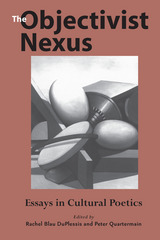 The Objectivist Nexus: Essays in Cultural Poetics
Peter Quartermain
University of Alabama Press, 1999 "Objectivist" writers, conjoined through a variety of personal, ideological, and literary-historical links, have, from the late 1920s to the present, attracted emulation and suspicion. Representing a nonsymbolist, postimagist poetics and characterized by a historical, realist, antimythological worldview, Objectivists have retained their outsider status. Despite such status, however, the formal, intellectual, ideological, and ethical concerns of the Objectivist nexus have increasingly influenced poetry and poetics in the United States. Thus, argue editors Rachel Blau DuPlessis and Peter Quartermain, the time has come for an anthology that unites essential works on Objectivist practices and presents Objectivist writing as an enlargement of the possibilities of poetry rather than as a determinable and definable literary movement. The authors' collective aim is to bring attention to this group of poets and to exemplify and specify cultural readings for poetic texts--readings alert to the material world, politics, society, and history, and readings concerned with the production, dissemination, and reception of poetic texts. The contributors consider Basil Bunting, Lorine Niedecker, George Oppen, Carl Rakosi, Charles Reznikoff, and Louis Zukofsky within both their historical milieu and our own. The essays insist on poetry as a mode of thought; analyze and evaluate Objectivist politics; focus on the ethical, spiritual, and religious issues raised by certain Objectivist affiliations with Judaism; and explore the dissemination of poetic texts and the vagaries of Objectivist reception. Running throughout the book are two related threads: Objectivist writing as generally a practice aware of its own historical and social contingency and Objectivist writing as a site of complexity, contestation, interrogation, and disagreement.
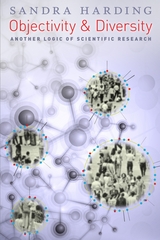 Objectivity and Diversity: Another Logic of Scientific Research
Sandra Harding
University of Chicago Press, 2015 Worries about scientific objectivity seem never-ending. Social critics and philosophers of science have argued that invocations of objectivity are often little more than attempts to boost the status of a claim, while calls for value neutrality may be used to suppress otherwise valid dissenting positions. Objectivity is used sometimes to advance democratic agendas, at other times to block them; sometimes for increasing the growth of knowledge, at others to resist it.
Sandra Harding is not ready to throw out objectivity quite yet. For all of its problems, she contends that objectivity is too powerful a concept simply to abandon. In Objectivity and Diversity, Harding calls for a science that is both more epistemically adequate and socially just, a science that would ask: How are the lives of the most economically and politically vulnerable groups affected by a particular piece of research? Do they have a say in whether and how the research is done? Should empirically reliable systems of indigenous knowledge count as "real science"? Ultimately, Harding argues for a shift from the ideal of a neutral, disinterested science to one that prizes fairness and responsibility.
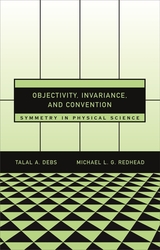 Objectivity, Invariance, and Convention: Symmetry in Physical Science
Talal A. Debs and Michael L. G. Redhead
Harvard University Press, 2007 Most observers agree that modern physical theory attempts to provide objective representations of reality. However, the claim that these representations are based on conventional choices is viewed by many as a denial of their objectivity. As a result, objectivity and conventionality in representation are often framed as polar opposites.
Offering a new appraisal of symmetry in modern physics, employing detailed case studies from relativity theory and quantum mechanics, Objectivity, Invariance, and Convention contends that the physical sciences, though dependent on convention, may produce objective representations of reality. Talal Debs and Michael Redhead show that both realists and constructivists have recognized important elements of an understanding of science that may not be contradictory.
The position—“perspectival invariantism”—introduced in this book highlights the shortcomings of existing approaches to symmetry in physics, and, for the constructivist, demonstrates that a dependence on conventions in representation reaches into the domain of the most technical sciences. For the realist, it stands as evidence against the claim that conventionality must undermine objectivity. We can be committed to the existence of a single real ontology while maintaining a cultural view of science.
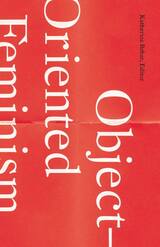 Object-Oriented Feminism
Katherine Behar
University of Minnesota Press, 2016 The essays in Object-Oriented Feminism explore OOF: a feminist intervention into recent philosophical discourses—like speculative realism, object-oriented ontology (OOO), and new materialism—that take objects, things, stuff, and matter as primary. Object-oriented feminism approaches all objects from the inside-out position of being an object too, with all of its accompanying political and ethical potentials. This volume places OOF thought in a long history of ongoing feminist work in multiple disciplines. In particular, object-oriented feminism foregrounds three significant aspects of feminist thinking in the philosophy of things: politics, engaging with histories of treating certain humans (women, people of color, and the poor) as objects; erotics, employing humor to foment unseemly entanglements between things; and ethics, refusing to make grand philosophical truth claims, instead staking a modest ethical position that arrives at being “in the right” by being “wrong.” Seeking not to define object-oriented feminism but rather to enact it, the volume is interdisciplinary in approach, with contributors from a variety of fields, including sociology, anthropology, English, art, and philosophy. Topics are frequently provocative, engaging a wide range of theorists from Heidegger and Levinas to Irigaray and Haraway, and an intriguing diverse array of objects, including the female body as fetish object in Lolita subculture; birds made queer by endocrine disruptors; and truth claims arising in material relations in indigenous fiction and film. Intentionally, each essay can be seen as an “object” in relation to others in this collection. Contributors: Irina Aristarkhova, University of Michigan; Karen Gregory, University of Edinburgh; Marina Gržinić, Slovenian Academy of Science and Arts; Frenchy Lunning, Minneapolis College of Art and Design; Timothy Morton, Rice University; Anne Pollock, Georgia Tech; Elizabeth A. Povinelli, Columbia University; R. Joshua Scannell, CUNY Graduate Center; Adam Zaretsky, VASTAL.
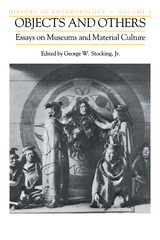 Objects and Others: Essays on Museums and Material Culture
Edited by George W. Stocking, Jr.
University of Wisconsin Press, 1988 History of Anthropology is a series of annual volumes, inaugurated in 1983, each of which treats an important theme in the history of anthropological inquiry. Objects and Others, the third volume, focuses on a number of questions relating to the history of museums and material culture studies: the interaction of museum arrangement and anthropological theory; the tension between anthropological research and popular education; the contribution of museum ethnography to aesthetic practice; the relationship of humanistic and anthropological culture, and of ethnic artifact and fine art; and, more generally, the representation of culture in material objects. As the first work to cover the development of museum anthropology since the mid-nineteenth century, it will be of great interest and value not only to anthropologist, museologists, and historians of science and the social sciences, but also to those interested in "primitive" art and its reception in the Western world.
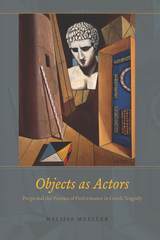 Objects as Actors: Props and the Poetics of Performance in Greek Tragedy
Melissa Mueller
University of Chicago Press, 2015 Objects as Actors charts a new approach to Greek tragedy based on an obvious, yet often overlooked, fact: Greek tragedy was meant to be performed. As plays, the works were incomplete without physical items—theatrical props. In this book, Melissa Mueller ingeniously demonstrates the importance of objects in the staging and reception of Athenian tragedy.
As Mueller shows, props such as weapons, textiles, and even letters were often fully integrated into a play’s action. They could provoke surprising plot turns, elicit bold viewer reactions, and provide some of tragedy’s most thrilling moments. Whether the sword of Sophocles’s Ajax, the tapestry in Aeschylus’s Agamemnon, or the tablet of Euripides’s Hippolytus, props demanded attention as a means of uniting—or disrupting—time, space, and genre.
Insightful and original, Objects as Actors offers a fresh perspective on the central tragic texts—and encourages us to rethink ancient theater as a whole.
 Objects, Commodities and Material Cultures in the Dutch Republic: Exploring Early Modern Materiality Across Disciplines
Judith Noorman
Amsterdam University Press, 2025 How did objects move between places and people, and how did they reshape the Republic’s arts, cultures and sciences?
‘Objects’ were vitally significant for the early modern Dutch Republic, which is known as an early consumer society, a place famous for its exhaustive production of books, visual arts and scientific instruments. What happens when we push these objects and their materiality to the centre of our research? How do they invite us to develop new perspectives on the early modern Dutch Republic? And how do they contest the boundaries of the academic disciplines that have traditionally organized our scholarship?
In Objects, Commodities and Material Cultures, the interdisciplinary community of specialists around the Amsterdam Centre for the Study of Early Modernity innovatively explores the diverse early modern world of objects. Its contributors take a single object or commodity as a point of departure to study and discuss various aspects of early modern art, culture and history: from natural objects to consumer goods, from knowledge instruments to artistic materials. The volume aims to unravel how objects have moved through regions, cultures and ages, and how objects impacted people who lived and worked in the Dutch Republic.
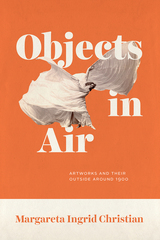 Objects in Air: Artworks and Their Outside around 1900
Margareta Ingrid Christian
University of Chicago Press, 2021 Margareta Ingrid Christian unpacks the ways in which, around 1900, art scholars, critics, and choreographers wrote about the artwork as an actual object in real time and space, surrounded and fluently connected to the viewer through the very air we breathe. Theorists such as Aby Warburg, Alois Riegl, Rainer Maria Rilke, and the choreographer Rudolf Laban drew on the science of their time to examine air as the material space surrounding an artwork, establishing its “milieu,” “atmosphere,” or “environment.” Christian explores how the artwork’s external space was seen to work as an aesthetic category in its own right, beginning with Rainer Maria Rilke’s observation that Rodin’s sculpture “exhales an atmosphere” and that Cezanne’s colors create “a calm, silken air” that pervades the empty rooms where the paintings are exhibited.
Writers created an early theory of unbounded form that described what Christian calls an artwork’s ecstasis or its ability to stray outside its limits and engender its own space. Objects viewed in this perspective complicate the now-fashionable discourse of empathy aesthetics, the attention to self-projecting subjects, and the idea of the modernist self-contained artwork. For example, Christian invites us to historicize the immersive spatial installations and “environments” that have arisen since the 1960s and to consider their origins in turn-of-the-twentieth-century aesthetics. Throughout this beautifully written work, Christian offers ways for us to rethink entrenched narratives of aesthetics and modernism and to revisit alternatives.
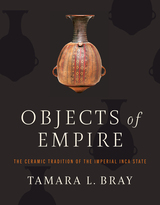 Objects of Empire: The Ceramic Tradition of the Imperial Inca State
Tamara L. Bray
University of Texas Press, 2025 A comparative, empire-wide study of the ceramics associated with the imperial Inca state, theorizing the role of these highly recognizable vessel forms in legitimizing Inca rule and establishing imperial identities. The beautiful polychrome ceramics of the imperial Inca state have long been noted for their seemingly repetitive nature but little considered beyond this basic observation. The widespread distribution and general uniformity of the Inca pottery, however, hints at its larger importance to the imperial project. Moving beyond the pervasive "seen one, seen 'em all" mentality, Objects of Empire brings to light the variability and rich semiotic content of imperial Inca vessels. Taking a comparative, empire-wide approach, Tamara Bray identifies the parameters and significance of this variability, and defines the core elements of the imperial state style. She then investigates where, when, and why differences and deviations from the perceived norm occur. This study illuminates the strategies of territorial expansion and political control that lay at the heart of the Inca juggernaut, as well as the role of objects in the calculus of would-be rulers and subjects. Based on a unique and extensive database of imperial Inca pottery developed through detailed study of archaeologically recovered and museum-based collections, Objects of Empire reveals how power and legitimacy were produced and reproduced under the Inca through the material culture of everyday life.
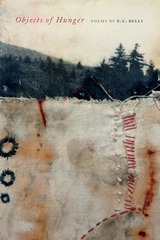 Objects of Hunger
E. C. Belli
Southern Illinois University Press, 2019 By turns stoic and ravaged, but always with gutting honesty, E. C. Belli invites readers to consider the smallest rooms of the intimate in this first collection. With each poem pared down to an elemental language both slight and clear, Belli’s work exhibits a surprising muscularity in its poise.
Objects of Hunger explores in reflective, raw lyrics the dread and beauty of our inner worlds as expressed through our struggles against the self and the other. Each poem is a slender organism that speaks its own mind, unafraid of pathos; the emotions here have been tried on and lived in, and the work accrues, lyric after lyric, page after page. In the second section, World War I poems are broken down and dismantled, as the voices of that era’s poets meld with that of a postpartum mother, exposing a shared vernacular among these disparate experiences. Other poems in the collection explore the unraveling and entrapments of the domestic, but with tenacity in place of softness, using a lexicon gathered from Virginia Woolf’s The Waves and Djuna Barnes’s Nightwood, among others.
What emerges is a finely chiseled portrait of intimacy, one that takes seriously love and all discord, the fracas of reticence and familiarity. Belli gives this world to us by way of a throbbing asceticism, in an exploration of resignation, concession, persistence, and monstrosity. This collection tells what it is to need with abandon.
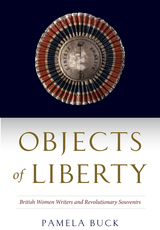 Objects of Liberty: British Women Writers and Revolutionary Souvenirs
Pamela Buck
University of Delaware Press, 2024 Objects of Liberty explores the prevalence of souvenirs in British women’s writing during the French Revolution and Napoleonic era. It argues that women writers employed the material and memorial object of the souvenir to circulate revolutionary ideas and engage in the masculine realm of political debate. While souvenir collecting was a standard practice of privileged men on the eighteenth-century Grand Tour, women began to partake in this endeavor as political events in France heightened interest in travel to the Continent. Looking at travel accounts by Helen Maria Williams, Mary Wollstonecraft, Catherine and Martha Wilmot, Charlotte Eaton, and Mary Shelley, this study reveals how they used souvenirs to affect political thought in Britain and contribute to conversations about individual and national identity. At a time when gendered beliefs precluded women from full citizenship, they used souvenirs to redefine themselves as legitimate political actors. Objects of Liberty is a story about the ways that women established political power and agency through material culture.
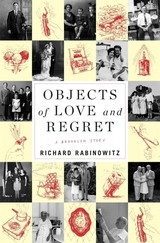 Objects of Love and Regret: A Brooklyn Story
Richard Rabinowitz
Harvard University Press, 2022 An award-winning historian and museum curator tells the story of his Jewish immigrant family by lovingly reconstructing its dramatic encounters with the memory-filled objects of ordinary life.
At a pushcart stall in East New York, Brooklyn, in the spring of 1934, eighteen-year-old Sarah Schwartz bought her mother, Shenka, a green, wooden-handled bottle opener. Decades later, Sarah would tear up telling her son Richard, “Your bubbe always worked so hard. Twenty cents, it cost me.”
How could that unremarkable item, and others like it, reveal the untold history of a Jewish immigrant family, their chances and their choices over the course of an eventful century? By unearthing the personal meaning and historical significance of simple everyday objects, Richard Rabinowitz offers an intimate portrait connecting Sarah, Shenka, and the rest of his family to the twentieth-century transformations of American life. During the Depression, Sarah—born on a Polish battlefield in World War I, scarred by pogroms, pressed too early into adult responsibilities—receives a gift of French perfume, her fiancé Dave’s response to the stigma of poverty. Later we watch Dave load folding chairs into his car for a state-park outing, signaling both the postwar detachment from city life and his own escape from failures to be a good “provider” for those he loves.
Objects of Love and Regret is closely wedded to the lives of American Jewish immigrants and their children, yet Rabinowitz invites all of us to contemplate the material world that anchors our own memories. Beautifully written, absorbing, and emotionally vivid, this is a memoir that brings us back to the striving, the dreams, the successes, and the tragedies that are part of every family’s story.
 Objects of Remembrance: A Memoir of American Opportunities and Viennese Dreams
Monroe E. Price
Central European University Press, 2009 This is a memoir about the power of American assimilation and opportunity in the face of persisting refugee realities. Like Isaac Bashevis Singer, Monroe Price recounts the continuing impact of European identities as families, cast from their homes by the rise of Hitler and the Third Reich, struggle to find their way in a new and challenging environment. In a series of reflections, Price, who was born to a Jewish family in Vienna in 1938 and left when he was seven months old, seeks to create the Vienna of his infancy, including Jewish life, anti-Semitism, the Anschluss, and Kristallnacht (during which his father was arrested). He shifts to scenes of American socialization in the places he moved with his parents:: Macon, Georgia, Cincinnati, Ohio, and the experience of New York City. Through these reflections, Price illuminates ideas about family, religion, friends and schooling as well as deeply personal issues such as home, food and intimacy. Price’s memoir weaves complicated strands—his Viennese origins, campaigns to distribute Jewish refugees away from New York City, the special qualities of Midwestern Ohio life in the 1950s—and the contrasting patterns of adjustment by different generations in his family in the American landscape. As he traces the particular path of his own life, Price reveals a more universal story of adjustment, and the relationship between a marginal community and the drama of American citizenship.
Objects of Special Devotion: Fetishes and Fetishism in Popular Culture
Ray B. Browne
University of Wisconsin Press, 1982
This book demonstrates the importance of the study of fetishes and fetishism in the study of popular culture. Some of the essays cover rather "conventional" manifestations in the world today; others demonstrate the fetishistic qualities of some unusual items. But all illustrate without any doubt that, like the icon, the ritual, and many other items in society, fetishes, fetishism and fetishists must be studied and understood before we can begin to understand the complexity of present-day society.
 Objects of Survivance: A Material History of the American Indian School Experience
Lindsay M. Montgomery
University Press of Colorado, 2019 Between 1893 and 1903, Jesse H. Bratley worked in Indian schools across five reservations in the American West. As a teacher Bratley was charged with forcibly assimilating Native Americans through education. Although tasked with eradicating their culture, Bratley became entranced by it—collecting artifacts and taking glass plate photographs to document the Native America he encountered. Today, the Denver Museum of Nature & Science’s Jesse H. Bratley Collection consists of nearly 500 photographs and 1,000 pottery and basketry pieces, beadwork, weapons, toys, musical instruments, and other objects traced to the S’Klallam, Lakota Sioux, Cheyenne, Arapaho, Havasupai, Hopi, and Seminole peoples.
This visual and material archive serves as a lens through which to view a key moment in US history—when Native Americans were sequestered onto reservation lands, forced into unfamiliar labor economies, and attacked for their religious practices. Education, the government hoped, would be the final tool to permanently transform Indigenous bodies through moral instruction in Western dress, foodways, and living habits. Yet Lindsay Montgomery and Chip Colwell posit that Bratley’s collection constitutes “objects of survivance”—things and images that testify not to destruction and loss but to resistance and survival. Interwoven with documents and interviews, Objects of Survivance illuminates how the US government sought to control Native Americans and how Indigenous peoples endured in the face of such oppression.
Rejecting the narrative that such objects preserve dying Native cultures, Objects of Survivance reframes the Bratley Collection, showing how tribal members have reconnected to these items, embracing them as part of their past and reclaiming them as part of their contemporary identities. This unique visual and material record of the early American Indian school experience and story of tribal perseverance will be of value to anyone interested in US history, Native American studies, and social justice.
Co-published with the Denver Museum of Nature & Science
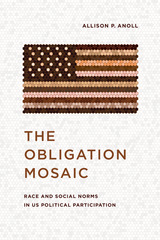 The Obligation Mosaic: Race and Social Norms in US Political Participation
Allison P. Anoll
University of Chicago Press, 2022 Many argue that “civic duty” explains why Americans engage in politics, but what does civic duty mean, and does it mean the same thing across communities? Why are people from marginalized social groups often more likely than their more privileged counterparts to participate in high-cost political activities?
In The Obligation Mosaic, Allison P. Anoll shows that the obligations that bring people into the political world—or encourage them to stay away—vary systematically by race in the United States, with broad consequences for representation. Drawing on a rich mix of interviews, surveys, and experiments with Asian, Black, Latino, and White Americans, the book uncovers two common norms that centrally define concepts of obligation: honoring ancestors and helping those in need. Whether these norms lead different groups to politics depends on distinct racial histories and continued patterns of segregation.
Anoll’s findings not only help to explain patterns of participation but also provide a window into opportunities for change, suggesting how activists and parties might better mobilize marginalized citizens.
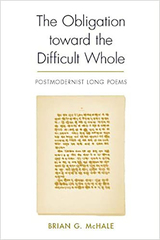 The Obligation Toward the Difficult Whole: Postmodernist Long Poems
Brian McHale
University of Alabama Press, 2003 A smart, eclectic analysis of nine long poems written by postmodernist poets
Addressing subjects as wide-ranging as angelology, the court masque, pop art, caricature, the cult of the ruin, hip-hop, Spense’'s Irish policy, and the aesthetics of silence, Brian McHale pulls varied threads together to identify a repertoire of postmodernist elements characteristic of the long poems he examines.
As critic Jed Rasula explains, “McHale is wonderfully resourceful in changing the subject from chapter to chapter to fit the poems discussed, and while his approach adheres to the conventions of textual exegesis, the chapters really shine as orchestrations of issues. For instance, James Merrill’s The Changing Light at Sandover works unexpectedly well in raising the subject of found poetry and procedural composition; Melvin Tolso’'s Harlem Gallery and Edward Dorn's Gunslinger are effectively paired to demonstrate the period flavor of pastiche; Geoffrey Hill’s Mercian Hymns and Armand Schwerner’s The Tablets explode the modernist fixation with depth; John Ashbery’s work is given a nuanced reading as proto-theory; Letter to an Imaginary Friend by Thomas McGrath provides a lucid backdrop to raise the question of political efficacy in approaching language poet Bruce Andrews; and Susan Howe's The Europe of Trusts is explored for its intertextual tapestry.”
McHale shows how elements from these long poems overlap, interfere, pull in different directions, jar against, and even contradict each other; and he demonstrates how they also echo, amplify, and reinforce each other. They do not slot smoothly together like pieces in a jigsaw puzzle, but they do form (what else?) a difficult whole.
Obligations: Essays on Disobedience, War, and Citizenship
Michael Walzer
Harvard University Press, 1970 In this collection of essays, Michael Walzer discusses how obligations are incurred, sustained, and (sometimes) abandoned by citizens of the modern state and members of political parties and movements as they respond to and participate in the most crucial and controversial aspects of citizenship: resistance, dissent, civil disobedience, war, and revolution. Walzer approaches these issues with insight and historical perspective, exhibiting an extraordinary understanding for rebels, radicals, and rational revolutionaries. The reader will not always agree with Walzer but he cannot help being stimulated, excited, challenged, and moved to thoughtful analysis.
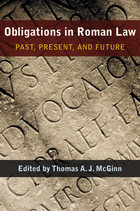 Obligations in Roman Law: Past, Present, and Future
Edited by Thomas A. J. McGinn
University of Michigan Press, 2013 Long a major element of classical studies, the examination of the laws of the ancient Romans has gained momentum in recent years as interdisciplinary work in legal studies has spread. Two resulting issues have arisen, on one hand concerning Roman laws as intellectual achievements and historical artifacts, and on the other about how we should consequently conceptualize Roman law. Drawn from a conference convened by the volume's editor at the American Academy in Rome addressing these concerns and others, this volume investigates in detail the Roman law of obligations—a subset of private law—together with its subordinate fields, contracts and delicts (torts). A centuries-old and highly influential discipline, Roman law has traditionally been studied in the context of law schools, rather than humanities faculties. This book opens a window on that world. Roman law, despite intense interest in the United States and elsewhere in the English-speaking world, remains largely a continental European enterprise in terms of scholarly publications and access to such publications. This volume offers a collection of specialist essays by leading scholars Nikolaus Benke, Cosimo Cascione, Maria Floriana Cursi, Paul du Plessis, Roberto Fiori, Dennis Kehoe, Carla Masi Doria, Ernest Metzger, Federico Procchi, J. Michael Rainer, Salvo Randazzo, and Bernard Stolte, many of whom have not published before in English, as well as opening and concluding chapters by editor Thomas A. J. McGinn.
Obligations to the Wounded: Stories
Mubanga Kalimamukwento
University of Pittsburgh Press, 2024 In formally adventurous stories rooted in Zambian literary tradition, Obligations to the Wounded explores the expectations and burdens of womanhood in Zambia and for Zambian women living abroad. The collection converses with global social problems through the depiction of games, social media feuds, letters, and folklore to illustrate how girls and women manage religious expectation, migration, loss of language, death, intimate partner violence, and racial discrimination. Although the women and girls inhabiting these pages are separated geographically and by life stage, their shared burdens, culture, and homeland inextricably link them together in struggle and triumph.
Obliged to Help: Adolphine Fletcher Terry and the Progressive South
Stephanie Bayless
Butler Center for Arkansas Studies, 2011 Author Stephanie Bayless examines why this Southern aristocratic matron, the daughter of a Confederate soldier, tirelessly devoted herself to improving the lives of others and, in so doing, became a model for activism across the South. It is the first work of its kind to consider Terry's lifelong commitment to social causes and is written for both traditional scholars and all those interested in history, civil rights, and the ability of women to create change within the gender limits of the time. Adolphine Fletcher Terry died in Little Rock, Arkansas, in July of 1976, at the age of ninety-three. Her life was a monument to progress in the South, particularly in her native state of Arkansas, a place she once described as "holy ground."
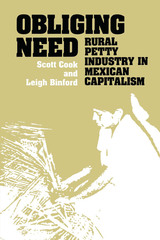 Obliging Need: Rural Petty Industry in Mexican Capitalism
By Scott Cook and Leigh Binford
University of Texas Press, 1990 For centuries throughout large portions of the globe, petty agriculturalists and industrialists have set their physical and mental energies to work producing products for direct consumption by their households and for exchange. This twofold household reproduction strategy, according to both Marxist and neoclassical approaches to development, should have disappeared from the global economy as labor was transformed into a producer as well as a consumer of capitalist commodities. But in fact, during the twentieth century, only the United States and Britain seem to have approximated this predicted scenario. Tens of millions of households in contemporary Asia, Africa, and Latin America and millions more in industrialized capitalist economies support themselves through petty commodity production alone or in combination with petty industry wage labor. Obliging Need provides a detailed and comprehensive analysis of small-scale peasant and artisan enterprise in the Oaxaca Valley of Mexico. The authors show how commodity production is organized and operates in different craft industries, as well as the ways in which it combines with other activities such as household chores, agriculture, wage labor, and petty commerce. They demonstrate how—contrary to developmentalist dogma—small-scale capitalism develops from within Mexico's rural economy. These findings will be important for everyone concerned with improving the lives and economic opportunities of countryfolk in the Third World. As the authors make clear, political mobilization in rural Mexico will succeed only as it addresses the direct producers' multiple needs for land, credit, more jobs, health insurance, and, most importantly, more equitable remuneration for their labor and greater rewards for their enterprise.
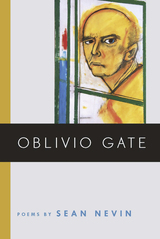 Oblivio Gate
Sean Nevin
Southern Illinois University Press, 2008 Suffused with lyrical grace and the language of loss, Sean Nevin's Oblivio Gate explores the mental and emotional struggles of Solomon, a veteran battling the onslaught of Alzheimer's disease. Set against Solomon's memories of the Korean War, Nevin's poems draw us into an intimate view of a man's confusion as everything he knows slowly unravels around him, leaving him abandoned in the suddenly unfamiliar landscape of his own mind. Readers experience first- hand Solomon's dismay as he watches himself inexorably slip away from reality, fighting to hold on to the shreds of his identity. Intertwined with his perspective are the voices of loved ones and caregivers who can only watch helplessly as Solomon is ravaged by the illness. Also central to the collection are the figures of Aurora and Tithonus, the famously doomed couple of mythology whose own happiness was destroyed by the inevitability of age and the betrayal of the body. But if this evocative portrait of Alzheimer's disease is tragic, it is also at moments inspiring. Oblivio Gate reveals not only what is lost, but also what is found, what is pure, and even what is funny in our fleeting lives. Ultimately, Sean Nevin crafts an unforgettable collection of contemporary poetry that yields heartbreaking insight into memory, the mind, and an affliction that has left millions lost and looking for themselves.
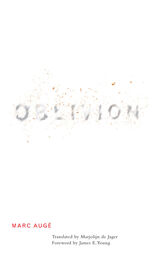 Oblivion
Marc Auge
University of Minnesota Press, 2004 “Remembering or forgetting is doing gardener’s work, selecting, pruning. Memories are like plants: there are those that need to be quickly eliminated in order to help the others burgeon, transform, flower.” For the health of the psyche and the culture, for the individual and the whole society, oblivion is as necessary as memory. One must know how to forget, Marc Augé suggests, not just to live fully in the present but also to comprehend the past. Renowned as an anthropologist and an innovative social thinker, Augé’s meditation moves from how forgetting the present or recent past enables us to return to earlier pasts, to how forgetting propels us into the present, and finally to how forgetting becomes a necessary part of survival. Oblivion moves with authority and ease among a wide variety of sources—literature, common experience, psychoanalysis, philosophy, ethnography—to illustrate the interplay of memory and forgetting in the stories of life and death told across many cultures and many times. Memory and oblivion, he concludes, cannot be separated: “Memories are crafted by oblivion as the outlines of the shore are created by the sea.”
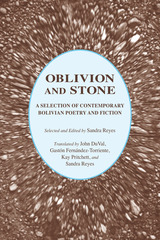 Oblivion and Stone: A Selection of Bolivian Poetry and Fiction
Sandra Reyes
University of Arkansas Press, 1998 In a literature where recognition is hard earned, this anthology demonstrates what distinguishes contemporary Bolivian fiction and poetry from the rest of Latin American writing and shows clearly how Bolivian writers relate to that tradition. Bolivia is a landlocked nation of mountains and high, arid plains, a place native writer Jesús Urzagasti calls the “Land of Silence.” This crucible of indigenous and European influences has contributed to the creation of a writing style that is always down-to-earth, often grittily realistic. From this fundamental base, Bolivian writers express provincial customs and values, decry political oppression, and sound universal themes of isolation, even resignation; but, more often, they show the will to move forward as a people. This rich thematic mix encourages what critic Edgar Lora has called the “dynamic and vigorous social dis course” and the resulting “subversive, militant, and revolutionary” qualities of Bolivian literature. Editor Sandra Reyes has gathered a panoramic sampling of twenty two poets and eighteen fiction writers. Focusing predominantly on living, practicing writers, this anthology defines the current literary voice of Bolivia and gives us a distillation of the contemporary Bolivian consciousness.
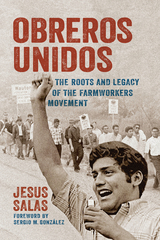 Obreros Unidos: The Roots and Legacy of the Farmworkers Movement
Jesus Salas
Wisconsin Historical Society Press, 2023 In an expansive narrative, noted labor leader Jesus Salas shares an insider’s look at the farm workers movement, from its roots in southern political uprisings to its lasting legacy of activism. During his childhood, Salas and his family joined the migrant workers who traveled from their hometown in Texas to work on farms in Wisconsin, Illinois, and other states. In riveting detail, he describes the brutal working conditions and overcrowded labor camps experienced by the Mexican American workers who fueled the Midwest’s agriculture industry.
Taking inspiration from César Chávez, as a young man Salas and others led a historic march from Wautoma to Madison to demand that lawmakers address rampant violations of Wisconsin’s minimum wage laws and housing codes. These young labor leaders founded Obreros Unidos—Workers United—to continue the fight for fairness and respect, as well as to provide much-needed services to migrant families. This memoir of a movement details how their work went beyond the fields to have lasting impacts on representation in community organizations and access to education, empowering later generations to demand better.
Winner of the 2024 Benjamin Franklin Award for Multicultural Books
Winner of the 2024 Hamlin Garland Prize in Popular History from the Midwest History Association
“In recounting the story of Tejano settlement and struggle in Wisconsin, Salas unsettles this story line and, in the process, demonstrates the power of personal narrative and the lasting political implications of retrieving and restoring Latino history.”
—Sergio M. González, author of Mexicans in Wisconsin
“Salas’s story is an essential chapter in the history of Wisconsin and Milwaukee and mirrors the growth, progress and dreams of the Latinx community. His reflections speak to not only the importance of the Latinx community, but the need to build alliances across lines of race and gender and fulfill the promise of a multiracial democracy.”
—Barbara Miner, Milwaukee Magazine
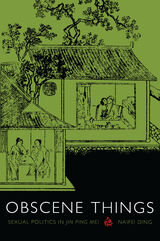 Obscene Things: Sexual Politics in Jin Ping Mei
Naifei Ding
Duke University Press, 2002 In Obscene Things Naifei Ding intervenes in conventional readings of Jin Ping Mei, an early scandalous Chinese novel of sexuality and sexual culture. After first appearing around 1590, Jin Ping Mei was circulated among some of China’s best known writers of the time and subsequently was published in three major recensions. A 1695 version by Zhang Zhupo became the most widely read and it is this text in particular on which Ding focuses. Challenging the preconceptions of earlier scholarship, she highlights the fundamental misogyny inherent in Jin Ping Mei and demonstrates how traditional biases—particularly masculine biases—continue to inform the concerns of modern criticism and sexual politics.
The story of a seductive bondmaid-concubine, sexual opportunism, domestic intrigue, adultery and death, Jin Ping Mei has often been critiqued based on the coherence of the text itself. Concentrating instead on the processes of reading and on the social meaning of this novel, Ding looks at the various ways the tale has been received since its first dissemination, particularly by critiquing the interpretations offered by seventeenth-century Ming literati and by twentieth-century scholars. Confronting the gender politics of this “pornographic” text, she troubles the boundaries between premodern and modern readings by engaging residual and emergent Chinese gender and hierarchic ideologies.
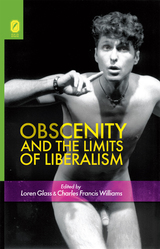 Obscenity and the Limits of Liberalism
Edited by Loren Glass and Charles Francis Williams
Ohio State University Press, 2011 Over the course of the nineteenth century in both Europe and the United States, the state usurped the traditional authority of the church in regulating sexual expression and behavior. In the same century philosophers of classical liberalism identified that state function as a threat to individual liberty. Since then, liberalism has provided the framework for debates over obscenity around the globe. But liberalism has recently been under siege, on the one side from postmodern thinkers skeptical about its andro- and ethnocentric assumptions, and on the other side from religious thinkers doubtful of the moral integrity of the Enlightenment project writ large.The principal challenge for those who conduct academic work in this realm is to formulate new models of research and analysis appropriate to understanding and evaluating speech in the present-day public sphere. Toward those ends, Obscenity and the Limits of Liberalism contains a selection of essays and interventions by prominent authors and artists in a variety of disciplines and media. These writings, taken as a whole, put recent developments into historical and global contexts and chart possible futures for a debate that promises to persist well into the new millennium.
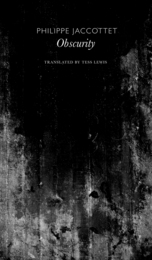 Obscurity
Philippe Jaccottet
Seagull Books, 2015 The story of an intense encounter between two men who were once very close and now must grapple with the fractured ideals that separate them.
After several years abroad, a young man returns to his hometown to seek the man he calls master. This master, a brilliant philosopher, had made the young man into a disciple before sending him out into the world to put his teachings into practice. Returning three years later, the disciple finds his master has abandoned his wife and child and moved into a squalid one-room flat, cutting himself off completely from his former life. Disillusioned and reeling from the discovery, the young man spends an entire night listening to his master’s bitter denunciation of the ideals they once shared. Written in 1960 during Jaccottet’s period of poetic paralysis, the novel seeks to harmonize the best and worst of human nature—reconciling despair, falsehood, and lethargy of spirit with the need to remain open to beauty, truth, and the essential goodness of humankind. Translated by Tess Lewis, Obscurity is Jaccottet’s only work of fiction, one that will introduce new readers to the multifaceted skills of this major poet.
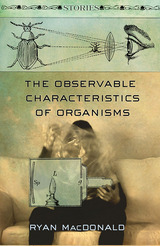 The Observable Characteristics of Organisms: Stories
Ryan MacDonald
University of Alabama Press, 2014 In Ryan MacDonald’s stories, most no more than a page in length, we are given glimpses of a father and daughter at the zoo; an isolated man lamenting the absence of TV in his life; two young men atop a fridge at a party, drinking wine. These are stories of marriage and family, of the oddities of the natural world, of college parties, of web-cams and media obsession.
As MacDonald says, “I think what I’m after in the stories as well as in the video work is finding an experiential moment, nothing really stable, something pleasantly unstable, or uncomfortable . . . purposefully pleasant uncomfortable instability with moments of tenderness and definitely humor. Certainly nothing concrete, unless it needs that. A certain fear of and respect for banality. I’m after a good time, which can often turn into a really bad time, but either way, one we’ll remember forever.”
Despite the range of circumstances they reveal, these stories are unified by a brightness of vision, deft observation, and consistently sharp, funny, and unbridled language.
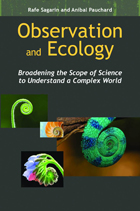 Observation and Ecology: Broadening the Scope of Science to Understand a Complex World
Rafe Sagarin and Aníbal Pauchard
Island Press, 2012 The need to understand and address large-scale environmental problems that are difficult to study in controlled environments—issues ranging from climate change to overfishing to invasive species—is driving the field of ecology in new and important directions. Observation and Ecology documents that transformation, exploring how scientists and researchers are expanding their methodological toolbox to incorporate an array of new and reexamined observational approaches—from traditional ecological knowledge to animal-borne sensors to genomic and remote-sensing technologies—to track, study, and understand current environmental problems and their implications.
The authors paint a clear picture of what observational approaches to ecology are and where they fit in the context of ecological science. They consider the full range of observational abilities we have available to us and explore the challenges and practical difficulties of using a primarily observational approach to achieve scientific understanding. They also show how observations can be a bridge from ecological science to education, environmental policy, and resource management.
Observations in ecology can play a key role in understanding our changing planet and the consequences of human activities on ecological processes. This book will serve as an important resource for future scientists and conservation leaders who are seeking a more holistic and applicable approach to ecological science.
 Observation and Experiment: An Introduction to Causal Inference
Paul R. Rosenbaum
Harvard University Press, 2017 A daily glass of wine prolongs life—yet alcohol can cause life-threatening cancer. Some say raising the minimum wage will decrease inequality while others say it increases unemployment. Scientists once confidently claimed that hormone replacement therapy reduced the risk of heart disease but now they equally confidently claim it raises that risk. What should we make of this endless barrage of conflicting claims?
Observation and Experiment is an introduction to causal inference by one of the field’s leading scholars. An award-winning professor at Wharton, Paul Rosenbaum explains key concepts and methods through lively examples that make abstract principles accessible. He draws his examples from clinical medicine, economics, public health, epidemiology, clinical psychology, and psychiatry to explain how randomized control trials are conceived and designed, how they differ from observational studies, and what techniques are available to mitigate their bias.
“Carefully and precisely written…reflecting superb statistical understanding, all communicated with the skill of a master teacher.”
—Stephen M. Stigler, author of The Seven Pillars of Statistical Wisdom
“An excellent introduction…Well-written and thoughtful…from one of causal inference’s noted experts.”
—Journal of the American Statistical Association
“Rosenbaum is a gifted expositor…an outstanding introduction to the topic for anyone who is interested in understanding the basic ideas and approaches to causal inference.”
—Psychometrika
“A very valuable contribution…Highly recommended.”
—International Statistical Review
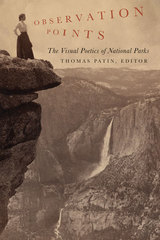 Observation Points: The Visual Poetics of National Parks
Thomas Patin
University of Minnesota Press, 2012 National parks are the places that present ideas of nature to Americans: Zion, Yosemite, Grand Canyon, Yellowstone bring to mind quintessential and awe-inspiring wilderness. By examining how rhetoric—particularly visual rhetoric—has worked to shape our views of nature and the “natural” place of humans, Observation Points offers insights into questions of representation, including the formation of national identity. As Thomas Patin reveals, the term “nature” is artificial and unstable, in need of constant maintenance and reconstruction. The process of stabilizing its representation, he notes, is unavoidably political. America’s national parks and monuments show how visual rhetoric operates to naturalize and stabilize representations of the environment. As contributors demonstrate, visual rhetoric is often transparent, structuring experience while remaining hidden in plain sight. Scenic overlooks and turnouts frame views for tourists. Visitor centers, with their display cases and photographs and orientation films, provide their own points of view—literally and figuratively. Guidebooks, brochures, and other publications present still other ways of seeing. At the same time, images of America’s “natural” world have long been employed for nationalist and capitalist ends, linking expansionism with American greatness and the “natural” triumph of European Americans over Native Americans. The essays collected here cover a wide array of subjects, including park architecture, landscape painting, public ceremonies, and techniques of display. Contributors are from an equally broad range of disciplines—art history, geography, museum studies, political science, American studies, and many other fields. Together they advance a provocative new visual genealogy of representation. Contributors: Robert M. Bednar, Southwestern U, Georgetown, Texas; Teresa Bergman, U of the Pacific; Albert Boime, UCLA; William Chaloupka, Colorado State U; Gregory Clark, Brigham Young U; Stephen Germic, Rocky Mountain College; Gareth John, St. Cloud State U, Minnesota; Mark Neumann, Northern Arizona U; Peter Peters, Maastricht U; Cindy Spurlock, Appalachian State U; David A. Tschida, U of Wisconsin, Eau Claire; Sabine Wilke, U of Washington.
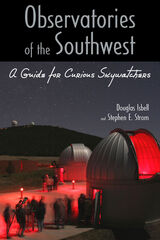 Observatories of the Southwest: A Guide for Curious Skywatchers
Douglas Isbell and Stephen E. Strom
University of Arizona Press, 2009 With its clear skies and low humidity, the southwestern United States is an astronomer’s paradise where observatories like Kitt Peak have redefined the art of skywatching. The region is unique in its loose federation of like-minded research outposts and in the quantity and diversity of its observatories—places captured in this unique guidebook.
Douglas Isbell and Stephen Strom, both intimately involved in southwestern astronomy, have written a practical guide to the major observatories of the region for those eager to learn what modern telescopes are doing, to understand the role each of these often quirky places has played in advancing our understanding of the cosmos, and hopefully to visit and see the tools of the astronomer up close. For each observatory, the authors describe its history, highlights of its contributions to astronomy—with an emphasis on recent results—and information for visitors. Also included are wide-ranging interviews with astronomers closely associated with each site.
Observatories covered range from McDonald in Texas to Palomar in California, with significant outposts in between: Arizona’s Kitt Peak National Observatory southwest of Tucson, the Lowell Observatory in Flagstaff, and the Whipple Observatory outside Amado; and New Mexico’s Very Large Array near Socorro and Sacramento Peak close to Sunspot. In addition to describing these established institutions, they also take a look ahead to the most powerful ground-based telescope in the world just beginning to operate at full power on Mount Graham in Safford, Arizona.
With more than three dozen illustrations, Observatories of the Southwest is accessible to amateur astronomers, tourists, students, and teachers—anyone fascinated with the contributions that astronomy has made to deepening our understanding of humanity’s place in the universe, whether exploring the solar system from Lowell Observatory or studying the birth of stars using the army of giant radio telescopes at the Very Large Array. This book aims to inspire visits to these sites by illuminating the major scientific questions being pursued every clear night beneath the dark skies of the Southwest and the amazing machinery that makes these pursuits possible.
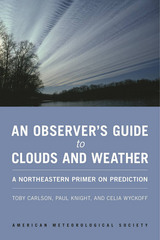 An Observer's Guide to Clouds and Weather: A Northeastern Primer on Prediction
Toby Carlson, Paul Knight, and Celia Wyckoff
American Meteorological Society, 2014 Today, most people look down when they want to check the weather, peeking at cell phones or popping open a browser, instead of looking up at one of the most accessible weather predictors of all—the sky. Knowing what the atmosphere has in store without relying on technology can be a gratifying experience, and now with An Observer’s Guide to Clouds and Weather, it is also one that is easy to learn.
This informative and accessible guide walks readers through the basics of making weather predictions through understanding cloud types and sky formations. It explains, in nontechnical terms, the science behind the weather, connecting fundamental meteorological concepts with the processes that shape weather patterns. Readers will learn how to develop their powers of observation and hone their ability to make quick forecasts without complicated tools. Whether you're an amateur weather enthusiast or a beginning meteorology student, An Observer’s Guide to Clouds and Weather will help anyone who prefers looking up to looking it up.
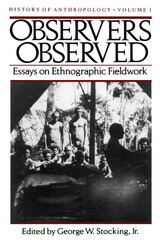 Observers Observed: Essays on Ethnographic Fieldwork
Edited by George W. Stocking, Jr.
University of Wisconsin Press, 1985 History of Anthropology is a new series of annual volumes, each of which will treat an important theme in the history of anthropological inquiry. For this initial volume, the editors have chosen to focus on the modern cultural anthropology: intensive fieldwork by "participant observation." Observers Observed includes essays by a distinguished group of historians and anthropologists covering major episodes in the history of ethnographic fieldwork in the American, British, and French traditions since 1880. As the first work to investigate the development of modern fieldwork in a serious historical way, this collection will be of great interest and value to anthropologist, historians of science and the social sciences, and the general readers interested in the way in which modern anthropologists have perceived and described the cultures of "others." Included in this volume are the contributions of Homer G. Barnett, University of Oregon; James Clifford, University of California, Santa Cruz; Douglas Cole, Simon Frazer University; Richard Handler, Lake Forest College; Curtis Hinsley, Colgate University; Joan Larcom, Mount Holyoke College; Paul Rabinow, University of California, Berkeley; and the editor.
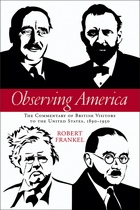 Observing America: The Commentary of British Visitors to the United States, 1890–1950
Robert Frankel
University of Wisconsin Press, 2006 Beginning with Alexis de Tocqueville and Frances Trollope, visitors to America have written some of the most penetrating and, occasionally, scathing commentaries on U.S. politics and culture. Observing America focuses on four of the most insightful British commentators on America between 1890 and 1950. The colorful journalist W. T. Stead championed Anglo-American unity while plunging into reform efforts in Chicago. The versatile writer H. G. Wells fiercely criticized capitalist America but found reason for hope in the administrations of Theodore Roosevelt and Franklin Roosevelt. G. K. Chesterton, one of England’s great men of letters, urged Americans to preserve the vestiges of Jeffersonian democracy that he still discerned in the small towns of the heartland. And the influential political theorist and activist Harold Laski assailed the business ethos that he believed dominated the nation, especially after Franklin Roosevelt’s death.
Robert Frankel examines the New World experiences of these commentators and the books they wrote about America. He also probes similar writings by other prominent observers from the British Isles, including Beatrice Webb, Rudyard Kipling, and George Bernard Shaw. The result is a book that offers keen insights into America’s national identity in a time of vast political and cultural change.
Observing America’s Jews
Marshall Sklare
Brandeis University Press, 1993 Collected essays by a preeminent authority on American Jewish history.
Observing America’s Jews
Marshall Sklare
University Press of New England, 2006 Collected essays by a preeminent authority on American Jewish history.
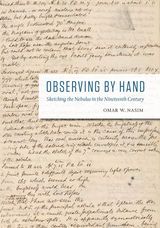 Observing by Hand: Sketching the Nebulae in the Nineteenth Century
Omar W. Nasim
University of Chicago Press, 2013 Today we are all familiar with the iconic pictures of the nebulae produced by the Hubble Space Telescope’s digital cameras. But there was a time, before the successful application of photography to the heavens, in which scientists had to rely on handmade drawings of these mysterious phenomena. Observing by Hand sheds entirely new light on the ways in which the production and reception of handdrawn images of the nebulae in the nineteenth century contributed to astronomical observation. Omar W. Nasim investigates hundreds of unpublished observing books and paper records from six nineteenth-century observers of the nebulae: Sir John Herschel; William Parsons, the third Earl of Rosse; William Lassell; Ebenezer Porter Mason; Ernst Wilhelm Leberecht Tempel; and George Phillips Bond. Nasim focuses on the ways in which these observers created and employed their drawings in data-driven procedures, from their choices of artistic materials and techniques to their practices and scientific observation. He examines the ways in which the act of drawing complemented the acts of seeing and knowing, as well as the ways that making pictures was connected to the production of scientific knowledge. An impeccably researched, carefully crafted, and beautifully illustrated piece of historical work, Observing by Hand will delight historians of science, art, and the book, as well as astronomers and philosophers.
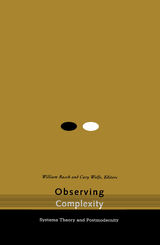 Observing Complexity: Systems Theory and Postmodernity
William Rasch
University of Minnesota Press, 2000 Shakes up postmodern criticism with paradigms from the social and techno-sciences. Shakes up postmodern criticism with paradigms from the social and techno-sciences. The rubric of systems theory brings together conceptual models and approaches in the sciences and social sciences that study complexity. It attempts to provide a coherent means of describing all systems, whether organic or inorganic, and offers a theory of knowledge that can account for the integration of humans in the social, informational, and ecological systems in which we are enmeshed. Observing Complexity brings the major concepts and foremost thinkers of systems theory into interaction with the major figures of postmodern theory. The format is multiplex and open-a rich montage, including interviews, exemplary essays, and staged dialogues. The writers’ aim is not to solidify theory but to provide a thorough explication and an open-ended exploration of how systems theory can address, in a fresh and productive way, theoretical questions that too often have led to impasses between different schools of postmodern theory. Contributors: Drucilla Cornell, Rutgers U; Jonathan Elmer, Indiana U; N. Katherine Hayles, UCLA; Peter Uwe Hohendahl, Cornell U; Eva Knodt; Marjorie Levinson, U of Michigan; Niklas Luhmann; Brian Massumi, SUNY, Albany.
Observing Protest from a Place: The World Social Forum in Dakar (2011)
Johanna Siméant, Marie-Emmanuelle Pommerolle, and Isabelle Sommier
Amsterdam University Press, 2015 Social movements throughout the world have been central to history, politics, society, and culture. Observing Protest from a Place examines the impact of one such campaign, the global justice movement, as seen from the southern hemisphere. Drawing upon a collective survey from the 2011 World Social Forum in Dakar, the essays explore a number of vital issues, including the methodological problems of studying international activist gatherings and how scholars can overcome those challenges. By demonstrating the importance of the global justice movement and the role of nongovernmental organizations for participants in the southern hemisphere, this volume is an important addition to the literature on community action.
Observing Spirit: Evaluating Your Daily Progress on the Path to Heaven with Gurdjieff & Swedenborg
PETER RHODES
Swedenborg Foundation Publishers, 2005 Based on the teachings of G.I. Gurdjieff, P.D. Ouspensky, Maurice Nicoll, and Emanuel Swedenborg, Peter Rhodes presents a practical guide to spiritual progress. Stressing personal responsibility for overcoming negative traits, each chapter explains how we can realize our true spiritual potential by cultivating awareness of our baser reactions and by applying the tools of Gurdjieff's spiritual method, "The Work," to our everyday existence.
Rhodes joins "The Work" with the spiritual philosophy of Emanuel Swedenborg to enhance our understanding of how the world of spirit intersects our lives on the earthly level. At the conclusion of each chapter, tools for measuring the reader's progress are provided in the form of weekly tasks and meditations. This book can be used in group workshops or by the individual.
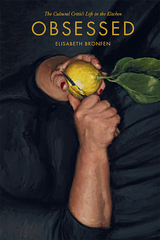 Obsessed: The Cultural Critic’s Life in the Kitchen
Elisabeth Bronfen
Rutgers University Press, 2019 Winner of the 2020 Gourmand Awards, Translation Section, USA
Even the most brilliant minds have to eat. And for some scholars, food preparation is more than just a chore; it’s a passion. In this unique culinary memoir and cookbook, renowned cultural critic Elisabeth Bronfen tells of her lifelong love affair with cooking and demonstrates what she has learned about creating delicious home meals. She recounts her cherished food memories, from meals eaten at the family table in postwar Germany to dinner parties with friends. Yet, in a thoughtful reflection on the pleasures of cooking for one, she also reveals that some of her favorite meals have been consumed alone.
Though it contains more than 250 mouth-watering recipes, Obsessed is anything but a conventional cookbook. As she shares a lifetime of knowledge acquired in the kitchen, Bronfen hopes to empower both novice and experienced home chefs to improvise, giving them hints on how to tweak her recipes to their own tastes. And unlike cookbooks that assume readers have access to an unlimited pantry, this book is grounded in reality, offering practical advice about food storage and reusing leftovers. As Bronfen serves up her personal stories and her culinary wisdom, reading Obsessed is like sitting down to a home-cooked meal with a clever friend.
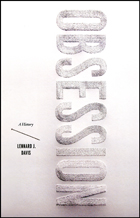 Obsession: A History
Lennard J. Davis
University of Chicago Press, 2008 We live in an age of obsession. Not only are we hopelessly devoted to our work, strangely addicted to our favorite television shows, and desperately impassioned about our cars, we admire obsession in others: we demand that lovers be infatuated with one another in films, we respond to the passion of single-minded musicians, we cheer on driven athletes. To be obsessive is to be American; to be obsessive is to be modern. But obsession is not only a phenomenon of modern existence: it is a medical category—both a pathology and a goal. Behind this paradox lies a fascinating history, which Lennard J. Davis tells in Obsession. Beginning with the roots of the disease in demonic possession and its secular successors, Davis traces the evolution of obsessive behavior from a social and religious fact of life into a medical and psychiatric problem. From obsessive aspects of professional specialization to obsessive compulsive disorder and nymphomania, no variety of obsession eludes Davis’s graceful analysis.
 Obsession, Aesthetics, and the Iberian City: The Partial Madness of Modern Urban Culture
Benjamin Fraser
Vanderbilt University Press, 2021 Although many depictions of the city in prose, poetry, and visual art can be found dating from earlier periods in human history, Obsession, Aesthetics, and the Iberian City emphasizes a particular phase in urban development. This is the quintessentially modern city that comes into being in the nineteenth century. In social terms, this nineteenth-century city is the product of a specialist class of planners engaged in what urban theorist Henri Lefebvre has called the bourgeois science of modern urbanism. One thinks first of the large scale and the wide boulevards of Baron Georges von Haussmann’s Paris or the geometrical planning vision of Ildefons Cerdà’s Barcelona. The modern science of urban design famously inaugurates a new way of thinking the city; urban modernity is now defined by the triumph of exchange value over use value, and the lived city is eclipsed by the planned city as it is envisioned by capitalists, builders, and speculators. Thus urban plans, architecture, literary prose and poetry, documentary cinema and fiction film, and comics art serve as windows into our modern obsession with urban aesthetics.
This book investigates the social relationships implied in our urban modernity by concentrating on four cities that are in broad strokes representative of the cultural and linguistic heterogeneity of the Iberian peninsula. Each chapter introduces but moves well beyond an identifiable urban area in a given city, noting the cultural obsession implicit in its reconstruction as well as the role of obsession in its artistic representation of the urban environment. These areas are Barcelona’s Eixample district, Madrid’s Linear City, Lisbon’s central Baixa area, and Bilbao’s Seven Streets, or Zazpikaleak. The theme of obsession—which as explored is synonymous with the concept of partial madness—provides a point of departure for understanding the interconnection of both urbanistic and artistic discourses.
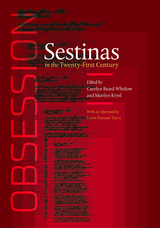 Obsession: Sestinas in the Twenty-First Century
Edited by Carolyn Beard Whitlow and Marilyn Krysl
Dartmouth College Press, 2014 The sestina (of medieval French origin) is a complex poetic form of 39 lines (six sestets and a three-line “envoy”) in which the six end-words (teleutons) of the lines of the first sestet stanza are repeated in a specific order as teleutons in the five succeeding sestets. In the envoy, the six teleutons are again picked up, one of them being buried in, and one finishing, each line. Because of the complexity of the form, the sestina fell out of favor with poets for several decades. However, a twenty-first century revival of the form is underway. This is the first anthology of sestinas that showcases both traditional and innovative examples of the form by modern and contemporary poets, award winners, and emerging writers alike. Organized by such themes as Americana; Art; Love and Sex; and Memory, Contemplation, Retrospection, and Death, the collection also includes sestinas with irregular teleutons and unconventional sestinas. An evocative introduction by Marilyn Krysl acquaints readers with the form. The volume concludes with useful indexes of first lines and teleutons, increasing access to the poems beyond the poets’ names.
 Obsessive Images: Symbolism in Poetry of the 1930s and 1940s
Joseph Warren BeachWilliam Van O’Connor, Editor
University of Minnesota Press, 1960 Obsessive Images was first published in 1960. Minnesota Archive Editions uses digital technology to make long-unavailable books once again accessible, and are published unaltered from the original University of Minnesota Press editions. As Mark Schorer comments, this is "the last, unfinished work of a distinguished, well loved critic, poet, and professor." After the death of Joseph Warren Beach, his colleague and friend William Van O'Connor, professor of English at the University of Minnesota, prepared the unfinished manuscript of this work for publication and wrote the foreword. The work is primarily a study of certain words, phrases, and images that turn up with unusual frequency in modern American poetry, especially that of the decades of the 1930's and 1940's, and which are used in unusual senses, to carry special symbolisms, or to imply peculiar philosophical attitudes. Since the study is concerned with such recurring images and themes, many poets of distinction, in whose work they are not to be found, are left out, but Professor Beach also discusses the significance of the absence of these poets. Students and critics will gain insight through this work into the characteristic attitudes of a generation of poets. The book is, moreover, a delight to read, reflecting, as it does, Mr. Beach's own love for the study of poetry. As Professor O'Connor points out, the tone is much more personal than that of Mr. Beach's other books.
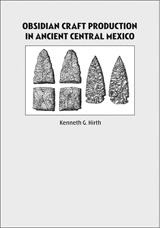 Obsidian Craft Production in Ancient Central Mexico
Kenneth Hirth
University of Utah Press, 2006 When the Spanish conquistadors first encountered the great commercial markets of central Mexico they were amazed by the richness and the diversity of products, as well as the level of organization. Ruling elites nurtured and supervised these markets, which were based on a complex division of labor within society, including a diversity of highly skilled craft specialists.
The appearance of such craft specialists—who produced large quantities of goods for other households—represented a significant and fundamental change in the structure of prehistoric economies. In central Mexico one particularly important craft specialty was the making of obsidian prismatic blades, the cutting tools of choice.
Unlike most other craft activities, obsidian craft production can be studied using archaeological techniques. Obsidian Craft Production in Ancient Central Mexico examines the obsidian craft industry found at the site of Xochicalco, Morelos, between A.D. 650 and 900, the Gobernador or Epiclassic period when independent city-states appeared throughout central Mexico to fill the political vacuum left by the decline of Teotihuacan. Because the demand for obsidian tools remained constant, author Kenneth Hirth contends that obsidian can serve as a general model for discussing craft production and economic organization on a broader theoretical level.
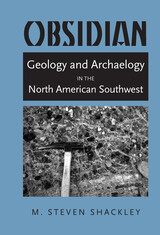 Obsidian: Geology and Archaeology in the North American Southwest
M. Steven Shackley
University of Arizona Press, 2005 Obsidian was long valued by ancient peoples as a raw material for producing stone tools, and archaeologists have increasingly come to view obsidian studies as a crucial aid in understanding the past. Steven Shackley now shows how the geochemical and contextual analyses of archaeological obsidian can be applied to the interpretation of social and economic organization in the ancient Southwest. This book, the capstone of decades of investigation, integrates a wealth of obsidian research in one volume. It covers advances in analytical chemistry and field petrology that have enhanced our understanding of obsidian source heterogeneity, presents the most recent data on and interpretations of archaeological obsidian sources in the Southwest, and explores the ethnohistorical and contemporary background for obsidian use in indigenous societies. Shackley provides a thorough examination of the geological origin of obsidian in the region and the methods used to collect raw material and determine its chemical composition, and descriptions of obsidian sources throughout the Southwest. He then describes the occurrence of obsidian artifacts and shows how their geochemical fingerprints allow archaeologists to make conclusions regarding the procurement of obsidian. The book presents three groundbreaking applications of obsidian source studies. It first discusses an application to early Preceramic groups, showing how obsidian sources can reflect the range they inhabited over time as well as their social relationships during the Archaic period. It then offers an examination of the Late Classic Salado in Arizona’s Tonto Basin, where obsidian data, along with ceramic and architectural evidence, suggest that Mogollon migrants lived in economic and social harmony with the Hohokam, all the while maintaining relationships with their homeland. Finally, it provides an intensive look at social identity and gender differences in the Preclassic Hohokam of central Arizona, where obsidian source provenance and projectile point styles suggest that male Hohokam sought to create a stylistically defined identity in at least three areas of the Hohokam core area. These male “sodalities” were organized quite differently from female ceramic production groups. Today, obsidian research in the American Southwest enjoys an equal standing with ceramic, faunal, and floral studies as a method of revealing social process and change in prehistory. Shackley’s book discusses the ways in which archaeologists should approach obsidian research, no matter what the region, offering a thorough survey of archaeological obsidian studies that will have methodological and theoretical applications worldwide. The volume includes an extensive glossary created specifically for archaeologists.
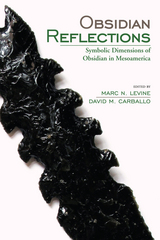 Obsidian Reflections: Symbolic Dimensions of Obsidian in Mesoamerica
David M. Carballo
University Press of Colorado, 2014 Departing from the political economy perspective taken by the vast majority of volumes devoted to Mesoamerican obsidian, Obsidian Reflections is an examination of obsidian's sociocultural dimensions—particularly in regard to Mesoamerican world view, religion, and belief systems. Exploring the materiality of this volcanic glass rather than only its functionality, this book considers the interplay among people, obsidian, and meaning and how these relationships shaped patterns of procurement, exchange, and use. An international group of scholars hailing from Belize, France, Japan, Mexico, and the United States provides a variety of case studies from Mexico, Guatemala, Belize, and Honduras. The authors draw on archaeological, iconographic, ethnographic, and ethnohistoric data to examine obsidian as a touchstone for cultural meaning, including references to sacrificial precepts, powerful deities, landscape, warfare, social relations, and fertility. Obsidian Reflections underscores the necessity of understanding obsidian from within its cultural context—the perspective of the indigenous people of Mesoamerica. It will be of great interest to Mesoamericanists as well as students and scholars of lithic studies and material culture.
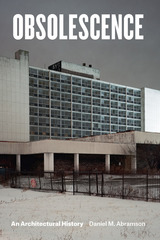 Obsolescence: An Architectural History
Daniel M. Abramson
University of Chicago Press, 2016 In our architectural pursuits, we often seem to be in search of something newer, grander, or more efficient—and this phenomenon is not novel. In the spring of 1910 hundreds of workers labored day and night to demolish the Gillender Building in New York, once the loftiest office tower in the world, in order to make way for a taller skyscraper. The New York Times puzzled over those who would sacrifice the thirteen-year-old structure, “as ruthlessly as though it were some ancient shack.” In New York alone, the Gillender joined the original Grand Central Terminal, the Plaza Hotel, the Western Union Building, and the Tower Building on the list of just one generation’s razed metropolitan monuments.
In the innovative and wide-ranging Obsolescence, Daniel M. Abramson investigates this notion of architectural expendability and the logic by which buildings lose their value and utility. The idea that the new necessarily outperforms and makes superfluous the old, Abramson argues, helps people come to terms with modernity and capitalism’s fast-paced change. Obsolescence, then, gives an unsettling experience purpose and meaning.
Belief in obsolescence, as Abramson shows, also profoundly affects architectural design. In the 1960s, many architects worldwide accepted the inevitability of obsolescence, experimenting with flexible, modular designs, from open-plan schools, offices, labs, and museums to vast megastructural frames and indeterminate building complexes. Some architects went so far as to embrace obsolescence’s liberating promise to cast aside convention and habit, envisioning expendable short-life buildings that embodied human choice and freedom. Others, we learn, were horrified by the implications of this ephemerality and waste, and their resistance eventually set the stage for our turn to sustainability—the conservation rather than disposal of resources. Abramson’s fascinating tour of our idea of obsolescence culminates in an assessment of recent manifestations of sustainability, from adaptive reuse and historic preservation to postmodernism and green design, which all struggle to comprehend and manage the changes that challenge us on all sides.
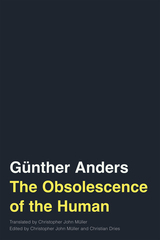 The Obsolescence of the Human
Günther Anders
University of Minnesota Press, 2025 Now available in English—one of the twentieth century’s most important works on the philosophy of technology
With this first English translation of influential German philosopher Günther Anders’s 1956 masterpiece of critical theory, The Obsolescence of the Human, a new generation of readers can now engage with his prescient and haunting vision of a “world without us” dominated by technology.
Looking at technological events such as the detonation of the nuclear bomb and the arrival of televisions in our living rooms, Anders advances a warning of what humanity looks like in a world where it has surrendered all agency. He outlines the new emotional landscapes that shape our relationship to increasingly capable technology, including Promethean shame, the human sense of unease our own superior technological innovations can instill. Confronting the growing gap between what we can collectively create and what we can individually comprehend, Anders speculates on the trajectory of a developing technological world that rapidly exceeds our ability to control or even foresee its negative consequences.
The Obsolescence of the Human prefigures contemporary posthumanist discourse and is eerily predictive of current debates around automation, global warming, and artificial intelligence. Providing new ways to conceptualize the intersection of technology and emotion, it offers groundbreaking frameworks for future-oriented ethics. Radical in both its stylistic experimentation and its theoretical insights, this new translation presents a cautionary tale regarding the human capacity to usher in its own destruction. Retail e-book files for this title are screen-reader friendly with images accompanied by short alt text and/or extended descriptions.
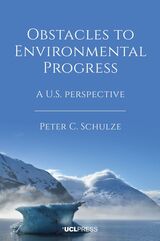 Obstacles to Environmental Progress: A US Perspective
Peter C. Schulze
University College London, 2022 A comprehensive guide to the impediments facing environmentally progressive agendas.
Despite the comprehensively understood severity of environmental problems faced today, progress in the United States is continually stymied, making sustainability feel like a far-off goal. Obstacles to Environmental Progress takes up the structural, political, and cultural forces that routinely hinder progress on existing environmental issues. Addressing problems both small and large, often regardless of whether an issue is controversial, this book illustrates obstacles that manifest in the United States but are globally pertinent. Peter Schulze identifies eighteen practical obstacles that fall into three categories: scientific challenges to anticipating and detecting problems; political and economic factors that interfere with responding; and obstacles to effective responses. This book seeks to hasten environmental progress by bridging academic disciplines to forewarn and forearm those who might otherwise encounter these anti-environmentalist obstacles in an ad-hoc manner.
 Obstetrics and Gynecology in Low-Resource Settings: A Practical Guide
Nawal M. Nour
Harvard University Press, 2016 Responding to the growing need for tried-and-trusted solutions to the reproductive health care issues confronting millions of women worldwide, Obstetrics and Gynecology in Low-Resource Settings provides practical guidelines for ensuring the delivery of quality OB/GYN care to women in resource-poor countries. Including contributions from leading clinicians and researchers in the field, this welcome overview fills an important gap in existing medical literature on women’s health care and will be an invaluable resource for doctors, clinicians, and medical students at all stages of their careers who work in the global health arena.
The reproductive health risks that all women face are greatly exacerbated when health care facilities are inadequate, equipment and medications are in short supply, and well-trained medical staff are few and far away. Often in these settings, the sole doctor or medical professional on hand has expertise in some areas of women’s reproductive care but needs a refresher course in others.
This informative guide features hands-on, step-by-step instruction for the most pertinent OB/GYN conditions—both acute and chronic—that health care workers in the field confront. The authors examine a wide range of topics, including: strategies to reduce maternal mortality and stillbirths; infectious and sexually transmitted diseases, including malaria and HIV; cervical cancer; contraception; prenatal, delivery, and newborn care; and complications arising from gender-based violence and female genital cutting. Published in a convenient format with a durable binding, this reference will be an essential companion to health care providers throughout the world.
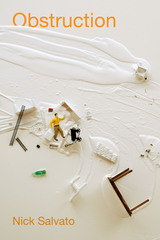 Obstruction
Nick Salvato
Duke University Press, 2016 Can a bout of laziness or a digressive spell actually open up paths to creativity and unexpected insights? In Obstruction Nick Salvato suggests that for those engaged in scholarly pursuits laziness, digressiveness, and related experiences can be paradoxically generative. Rather than being dismissed as hindrances, these obstructions are to be embraced, clung to, and reoriented. Analyzing an eclectic range of texts and figures, from the Greek Cynics and Denis Diderot to Dean Martin and the Web series Drunk History, Salvato finds value in five obstructions: embarrassment, laziness, slowness, cynicism, and digressiveness. Whether listening to Tori Amos's music as a way to think about embarrassment, linking the MTV series Daria to using cynicism to negotiate higher education's corporatized climate, or examining the affect of slowness in Kelly Reichardt's films, Salvato expands our conceptions of each obstruction and shows ways to transform them into useful provocations. With a unique, literary, and self-reflexive voice, Salvato demonstrates the importance of these debased obstructions and shows how they may support alternative modes of intellectual activity. In doing so, he impels us to rethink the very meanings of thinking, work, and value.
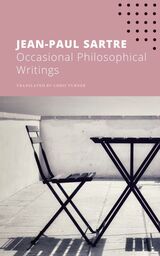 Occasional Philosophical Writings
Jean-Paul Sartre
Seagull Books, 2021 Four essays by the French master addressing other philosophers and their work.
Iconic French novelist, playwright, and essayist Jean-Paul Sartre is widely recognized as one of the most important philosophers of the twentieth century, and his work has remained relevant and thought-provoking through the decades. The Seagull Sartre Library now presents some of his most incisive philosophical, cultural, and literary critical essays in twelve newly designed and affordable editions.
The four essays of varying length assembled in this volume bear witness to Sartre’s preoccupation with philosophers and their work. In these pages he examines Descartes’s concept of freedom; comments on a fundamental idea in Husserl’s phenomenology: intentionality; writes a mixed review of Denis de Rougemont’s monumental Love in the Western World; and provides an extensive critical analysis of the work of Brice Parain, one of France’s leading philosophers of language.
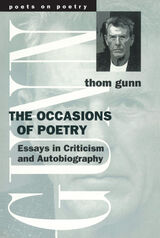 The Occasions of Poetry: Essays in Criticism and Autobiography
Thom Gunn
University of Michigan Press, 1999 "For me the act of writing is an exploration, a reaching out, an act of trusting search for the correct incantation that will return me certain feelings whenever I want them. And of course I have never completely succeeded in finding the correct incantations." --Thom Gunn
Thom Gunn is well-known as a poet, and increasingly as a literary critic. The Occasions of Poetry includes insightful critical pieces on writers ranging from William Carlos Williams and Gary Snyder to Thomas Hardy and Robert Duncan. "The occasion in all cases," writes Gunn, "is the starting point, only, of a poem, but it should be a starting point to which the poet must in some sense stay true." The first loyalty of a writer who is "true to his occasions," he writes, must be to the facts of experience.
The book includes five autobiographical essays, which combine to form an engaging account of the author's development as a poet and to chronicle some of the most significant literary currents of recent decades, both in England and America.
Thom Gunn, born in England in 1929, has lived in America since 1954. His books include Shelf Life: Essays, Memoirs, and an Interview; The Man with Night Sweats; Collected Poems; and The Passages of Joy. The Occasions of Poetry was originally published by Faber and Faber.
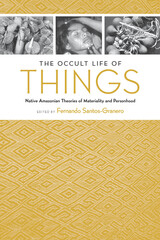 The Occult Life of Things: Native Amazonian Theories of Materiality and Personhood
Edited by Fernando Santos-Granero
University of Arizona Press, 2009 Native peoples of the Amazon view objects, especially human artifacts, as the first cosmic creations and the building blocks from which the natural world has been shaped. In these constructional cosmologies, spears became the stings of wasps, hammocks became spiderwebs, stools became the buttocks of human beings.
A view so antithetical to Western thought offers a refreshing perspective on the place and role of objects in human social life—one that has remained under-studied in Amazonian anthropology. In this book, ten scholars re-introduce objects to contemporary studies of animism in order to explore how various peoples envision the lives of material objects: the occult, or extraordinary, lives of “things,” whose personas are normally not visible to lay people.
Combining linguistic, ethnological, and historical perspectives, the contributors draw on a wealth of information gathered from ten Amerindian peoples belonging to seven different linguistic families to identify the basic tenets of what might be called a native Amazonian theory of materiality and personhood. They consider which objects have subjective dimensions and how they are manifested, focusing on three domains regarding Amazonian conceptions of things: the subjective life of objects, considering which things have a subjective dimension; the social life of things, seeing the diverse ways in which human beings and things relate as subjectivities; and the historical life of things, recognizing the fact that some things have value as ritual objects or heirlooms.
These chapters demonstrate how native Amazonian peoples view animals, plants, and things as “subjectivities” possessing agency, intentionality, and consciousness, as well as a composite anatomy. They also show how materiality is intimately linked to notions of personhood, with artifacts classified as natural or divine creations and living beings viewed as cultural or constructed. The Occult Life of Things offers original insights into these elaborate native ontologies as it breaks new ground in Amazonian studies.
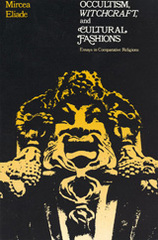 Occultism, Witchcraft, and Cultural Fashions: Essays in Comparative Religion
Mircea Eliade
University of Chicago Press, 1978 In the period domoninated by the triumphs of scientific rationalism, how do we account for the extraordinary success of such occult movements as astrology or the revival of witchcraft? From his perspective as a historian of religions, the eminent scholar Mircea Eliade shows that such popular trends develop from archaic roots and periodically resurface in certain myths, symbols, and rituals. In six lucid essays collected for this volume, Eliade reveals the profound religious significance that lies at the heart of many contemporary cultural vogues.
Since all of the essays except the last were originally delivered as lectures, their introductory character and lively oral style make them particularly accessible to the intelligent nonspecialist. Rather than a popularization, Occultism, Witchcraft, and Cultural Fashions is the fulfillment of Eliade's conviction that the history of religions should be read by the widest possible audience.
The Occupant: Poems
Jennifer Maier
University of Pittsburgh Press, 2025 A new collection of poetry from the author of Now, Now
 Occupational Mobility in American Business and Industry, 1928-1952
W. Lloyd Warner and James C. Abegglen
University of Minnesota Press, 1955 Occupational Mobility in American Business and Industry, 1928–1952 was first published in 1955. Minnesota Archive Editions uses digital technology to make long-unavailable books once again accessible, and are published unaltered from the original University of Minnesota Press editions. Is the American occupational system rigid or flexible? How has it changed in the last twenty-five years? What factors help to influence the selection of business leaders? Questions like these are answered in this comprehensive study of occupational mobility, made by two social scientists at the University of Chicago. The study is based on information about 8,000 executives in the largest business firms of America. The rate of movement of men from various occupational backgrounds into positions of business leadership today is compared with that of 1928, as reported in the well-known study of Taussig and Joslyn, American Business Leaders. Warner and Abegglen present their complete research data, many of the findings in tabular form. The research encompasses all kinds of businesses and industries in every part of the country and persons at all levels of top management.
The Occupations of Migrants in Ghana
Polly Hill
University of Michigan Press, 1970 In this study, which is statistically based on the 1960 Ghana population census, author Polly Hill attempts to show that economically motivated migration takes a much greater variety of occupational forms than is conventionally supposed. Hill reports on the occupations, geographical distribution, and urbanization of Ghana’s migrant population, and supplies notes on 34 migratory ethic groups.
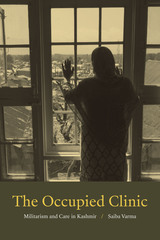 The Occupied Clinic: Militarism and Care in Kashmir
Saiba Varma
Duke University Press, 2020 In The Occupied Clinic, Saiba Varma explores the psychological, ontological, and political entanglements between medicine and violence in Indian-controlled Kashmir—the world's most densely militarized place. Into a long history of occupations, insurgencies, suppressions, natural disasters, and a crisis of public health infrastructure come interventions in human distress, especially those of doctors and humanitarians, who struggle against an epidemic: more than sixty percent of the civilian population suffers from depression, anxiety, PTSD, or acute stress. Drawing on encounters between medical providers and patients in an array of settings, Varma reveals how colonization is embodied and how overlapping state practices of care and violence create disorienting worlds for doctors and patients alike. Varma shows how occupation creates worlds of disrupted meaning in which clinical life is connected to political disorder, subverting biomedical neutrality, ethics, and processes of care in profound ways. By highlighting the imbrications between humanitarianism and militarism and between care and violence, Varma theorizes care not as a redemptive practice, but as a fraught sphere of action that is never quite what it seems.
 Occupied Minds: A Journey Through the Israeli Psyche
Arthur Nelsen
Pluto Press, 2006 Israel's founders sought to create a nation of new Jews who would never again go meekly to the death camps. Yet Israel's strength has become synonymous with an oppression of the Palestinians that provokes anger throughout the Muslim world and beyond. How are Israelis able to see themselves as victims while victimizing others? What does Israeli Jewish identity mean today?
Arthur Neslen explores the dynamics, distortions and incredible diversity of Israeli society. From the mouths of soldiers, settlers, sex workers and the victims of suicide attacks, Occupied Minds is the story of a national psyche that has become scarred by mental security barriers, emotional checkpoints and displaced outposts of self-righteousness and aggression.
From vignettes to in-depth interviews, more than fifty Israelis offer their accounts. What they reveal is in turn powerful, haunting, subtle and disturbing. Illustrated throughout with photographs, this unique book offers an unrivalled insight into Israeli consciousness, private and public.
It charts the evolution of a communal self-image based on cultural and religious values towards one formed around a single militaristic imperative: national security.
 Occupied Refuge: Humanitarian Colonization and the Camp in Kenya
Hanno Brankamp
Duke University Press, 2026 In a world shaped by war, climate disaster, and displacement, refugee camps are imagined as indispensable safe havens for millions of people fleeing crises. In Occupied Refuge, Hanno Brankamp challenges the presumed innocence of refugee humanitarianism as a system of civilian protection that can manage global inequalities and forced migration by peaceful means. He shows that although humanitarian missions aim to protect displaced populations in the global South, they often function as militarized occupations that treat camp inhabitants as new colonized subjects. Through ethnographic research in Kenya’s Kakuma refugee camp, Brankamp demonstrates how aid operations rely on a combination of infrastructural expansion, militarized policing, ethno-racial subjugation, indirect rule, and economic extraction. By co-managing these camps with international aid agencies, the Kenyan state becomes not only a willing accomplice in planetary humanitarian containment but seeks to pacify its own peripheral territories, securitize unwanted migrants, and impose national rule. Illuminating how refugee camps serve as key sites where carceral protectionism, postcolonial nation-building, and global mobility control intersect, Brankamp calls for abolitionist futures beyond the violent structures of encampment, borders, and citizenship.
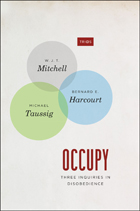 Occupy: Three Inquiries in Disobedience
W. J. T. Mitchell, Bernard E. Harcourt, and Michael Taussig
University of Chicago Press, 2013 Mic check! Mic check! Lacking amplification in Zuccotti Park, Occupy Wall Street protestors addressed one another by repeating and echoing speeches throughout the crowd. In Occupy, W. J. T. Mitchell, Bernard E. Harcourt, and Michael Taussig take the protestors’ lead and perform their own resonant call-and-response, playing off of each other in three essays that engage the extraordinary Occupy movement that has swept across the world, examining everything from self-immolations in the Middle East to the G8 crackdown in Chicago to the many protest signs still visible worldwide. “You break through the screen like Alice in Wonderland,” Taussig writes in the opening essay, “and now you can’t leave or do without it.” Following Taussig’s artful blend of participatory ethnography and poetic meditation on Zuccotti Park, political and legal scholar Harcourt examines the crucial difference between civil and political disobedience. He shows how by effecting the latter—by rejecting the very discourse and strategy of politics—Occupy Wall Street protestors enacted a radical new form of protest. Finally, media critic and theorist Mitchell surveys the global circulation of Occupy images across mass and social media and looks at contemporary works by artists such as Antony Gormley and how they engage the body politic, ultimately examining the use of empty space itself as a revolutionary monument. Occupy stands not as a primer on or an authoritative account of 2011’s revolutions, but as a snapshot, a second draft of history, beyond journalism and the polemics of the moment—an occupation itself.
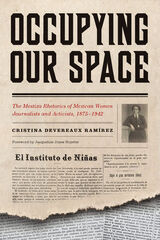 Occupying Our Space: The Mestiza Rhetorics of Mexican Women Journalists and Activists, 1875–1942
Cristina Devereaux Ramírez; Foreword by Jacqueline Jones Royster
University of Arizona Press, 2015 Winifred Bryan Horner Outstanding Book Award Winner
Occupying Our Space sheds new light on the contributions of Mexican women journalists and writers during the late nineteenth and early twentieth centuries, marked as the zenith of Mexican journalism. Journalists played a significant role in transforming Mexican social and political life before and after the Revolution (1910–1920), and women were a part of this movement as publishers, writers, public speakers, and political activists. However, their contributions to the broad historical changes associated with the Revolution, as well as the pre- and post-revolutionary eras, are often excluded or overlooked.
This book fills a gap in feminine rhetorical history by providing an in-depth look at several important journalists who claimed rhetorical puestos, or public speaking spaces. The book closely examines the writings of Laureana Wright de Kleinhans (1842–1896), Juana Belén Gutiérrez de Mendoza (1875–1942), the political group Las mujeres de Zitácuaro (1900), Hermila Galindo (1896–1954), and others. Grounded in the overarching theoretical lens of mestiza rhetoric, Occupying Our Space considers the ways in which Mexican women journalists negotiated shifting feminine identities and the emerging national politics of the late nineteenth and early twentieth centuries. With full-length Spanish primary documents along with their translations, this scholarship reframes the conversation about the rhetorical and intellectual role women played in the ever-changing political and identity culture in Mexico.
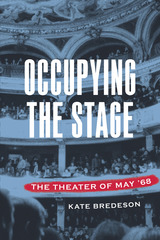 Occupying the Stage: The Theater of May '68
Kate Bredeson
Northwestern University Press, 2018 Occupying the Stage: the Theater of May '68 tells the story of student and worker uprisings in France through the lens of theater history, and the story of French theater through the lens of May '68. Based on detailed archival research and original translations, close readings of plays and historical documents, and a rigorous assessment of avant-garde theater history and theory, Occupying the Stage proposes that the French theater of 1959–71 forms a standalone paradigm called "The Theater of May '68."
The book shows how French theater artists during this period used a strategy of occupation-occupying buildings, streets, language, words, traditions, and artistic processes-as their central tactic of protest and transformation. It further proposes that the Theater of May '68 has left imprints on contemporary artists and activists, and that this theater offers a scaffolding on which to build a meaningful analysis of contemporary protest and performance in France, North America, and beyond.
At the book's heart is an inquiry into how artists of the period used theater as a way to engage in political work and, concurrently, questioned and overhauled traditional theater practices so their art would better reflect the way they wanted the world to be. Occupying the Stage embraces the utopic vision of May '68 while probing the period's many contradictions. It thus affirms the vital role theater can play in the ongoing work of social change.
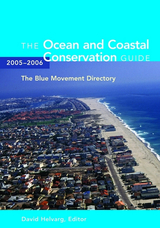 The Ocean and Coastal Conservation Guide 2005-2006
Edited by David Helvarg
Island Press, 2005 A new environmental movement is emerging to help combat threats to America's oceans and coasts, with hundreds of local and regional groups as well as dozens of national and international organizations being formed. The Ocean and Coastal Conservation Guide represents a comprehensive guide to this new "Blue Movement." This one-of-a-kind new reference details more than 2,000 organizations and institutions that are working to understand, protect, and restore our ocean and coastal areas. For each entry, the book gives contact information including phone and fax numbers, email addresses, web addresses and a brief description of program areas of interest. Along with the state-by-state listings of groups, the directory includes three detailed sections that identify relevant government agencies, academic marine programs, and marine and coastal parks and protected areas. To be published biennially, The Ocean and Coastal Conservation Guide is a vital new resource for anyone interested in the growing community of people working to protect and restore our coastal lands and waters.
 Ocean, as Much as Rain: Stories, Lyrical Prose, and Poems from Tibet
Tsering Woeser. Edited by Fiona Sze-Lorrain. Translated by Dechen Pemba.
Duke University Press, 2026 Ocean, as Much as Rain presents for the first time in the English-language world a collection of masterfully translated literary writings by prominent Tibetan writer Tsering Woeser. In these stories, lyrical essays, and poetry, Woeser interweaves texts, photographs, silences, and documentary details. Featuring a distinctively imaginative use of satire and digressive rhetoric, Woeser’s stories bring to life Tibetan characters whose lives are entwined with politics, history, and religion. Woeser illuminates the ruins and places that she has come across during her various sojourns in Chinese-ruled Tibet, reviving sites from the past of her parents and their generation. These writings range from ingenious retellings of cultural encounters and confrontation to insightful commentaries on ecological issues and tourism in Tibet that never shun contradictions, dilemmas, or questions about the future. With an introduction by Fiona Sze-Lorrain and an author interview by editors-translators Sze-Lorrain and Dechen Pemba, Ocean, as Much as Rain is a landmark publication that celebrates the work of a steadfast dissident and a leading Tibetan literary figure of our times.
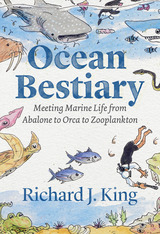 Ocean Bestiary: Meeting Marine Life from Abalone to Orca to Zooplankton
Written and illustrated by Richard J. King
University of Chicago Press, 2023 A delightful A-to-Z menagerie of the sea—whimsically illustrated, authoritative, and thought-provoking.
For millennia, we have taken to the waves. And yet, for humans, the ocean remains our planet’s most inaccessible region, the place about which we know the least. From A to Z, abalone to zooplankton, and through both text and original illustrations, Ocean Bestiary is a celebration of our ongoing quest to know the sea and its creatures.
Focusing on individual species or groups of animals, Richard J. King embarks upon a global tour of ocean wildlife, including beluga whales, flying fish, green turtles, mako sharks, noddies, right whales, sea cows (as well as sea lions, sea otters, and sea pickles), skipjack tuna, swordfish, tropicbirds, walrus, and yellow-bellied sea snakes. But more than this, King connects the natural history of ocean animals to the experiences of people out at sea and along the world’s coastlines. From firsthand accounts passed down by the earliest Polynesian navigators to observations from Wampanoag clamshell artists, African-American whalemen, Korean female divers (or haenyeo), and today’s pilots of deep-sea submersibles—and even to imaginary sea expeditions launched through poems, novels, and paintings—Ocean Bestiary weaves together a diverse array of human voices underrepresented in environmental history to tell the larger story of our relationship with the sea. Sometimes funny, sometimes alarming, but always compelling, King’s vignettes reveal both how our perceptions of the sea have changed for the better and how far we still have to go on our voyage.
An Ocean Garden: The Secret Life of Seaweed
Josie Iselin
Oregon State University Press, 2023 In this captivating book, artist and avid beachcomber Josie Iselin reveals the unexpected beauty of seaweed. Produced on a flatbed scanner, Iselin’s vibrant portraits of ocean flora reveal the exquisite color and extraordinary forms of more than 200 specimens gathered from tidal pools along the California and Maine coasts. Her engaging text, which accompanies the images, blends personal observation and philosophical musings with scientific fact. Now available in paperback for the first time, An Ocean Garden: The Secret Life of Seaweed is a poetic and compelling tribute to the natural world and the wonder it evokes.
 Ocean Governance and Conflict in the East and South China Sea: Negotiating Natural Resources, Institutions and Power
Christian Schultheiss
Amsterdam University Press, 2024 This book tells the story of the negotiations between China, Japan, Taiwan, the Philippines, Vietnam and other Southeast Asian countries about the East and South China Sea disputes. Tapping into formerly classified and newly available primary sources, the book meticulously tracks these negotiations and their sudden U-turns. It is a story about the promises and perils of cooperation – as much about pragmatic, gradual and surprisingly resilient approaches to conflict resolution and ocean governance as it is about the expansion of states’ bargaining power through institutions. The book hinges on the question of when and why disputing parties reach agreement on joint oil and gas development, fisheries and codes of conduct, and when and why negotiations end in impasse. It is the first comprehensive and theoretically informed study of decades-long dispute settlement efforts in a central region of the Indo-Pacific where the expansion of China challenges the law of the sea and regional security.
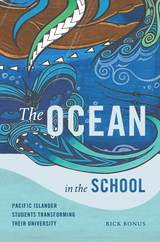 The Ocean in the School: Pacific Islander Students Transforming Their University
Rick Bonus
Duke University Press, 2020 In The Ocean in the School Rick Bonus tells the stories of Pacific Islander students as they and their allies struggled to transform a university they believed did not value their presence. Drawing on dozens of interviews with students he taught, advised, and mentored between 2004 and 2018 at the University of Washington, Bonus outlines how, despite the university's promotion of diversity and student success programs, these students often did not find their education to be meaningful, leading some to leave the university. As these students note, they weren't failing school; the school was failing them. Bonus shows how students employed the ocean as a metaphor as a way to foster community and to transform the university into a space that valued meaningfulness, respect, and critical thinking. In sharing these students' insights and experiences, Bonus opens up questions about measuring student success, the centrality of antiracism and social justice to structurally reshaping universities, and the purpose of higher education.
The Ocean Inside Kenji Takezo
Rick Noguchi
University of Pittsburgh Press, 1996 For the young Kenji Takezo, the innocent surfer who inhabits this collection of poems, balance becomes more than just trying to stand on a wave. It is a way of surviving in a world as precarious as the ocean, a world constantly turning on itself.
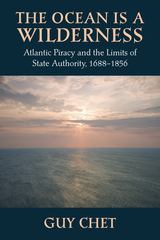 The Ocean Is a Wilderness: Atlantic Piracy and the Limits of State Authority, 1688-1856
Guy Chet
University of Massachusetts Press, 2014 Historians have long maintained that the rise of the British empire brought an end to the great age of piracy, turning the once violent Atlantic frontier into a locus of orderly commerce by 1730. In this book, Guy Chet reassesses that view by documenting the persistence of piracy, smuggling, and other forms of illegal trade throughout the eighteenth century despite ongoing governmental campaigns to stamp it out. The failure of the Royal Navy to police oceanic trade reflected the state's limited authority and legitimacy at port, in the courts, and in the hearts and minds of Anglo-American constituents.
Chet shows how the traditional focus on the growth of the modern state overlooked the extent to which old attitudes and cultural practices continued to hold sway. Even as the British government extended its naval, legal, and bureaucratic reach, in many parts of the Atlantic world illegal trade was not only tolerated but encouraged. In part this was because Britain's constabulary command of the region remained more tenuous than some have suggested, and in part because maritime insurance and wartime tax policies ensured that piracy and smuggling remained profitable. When Atlantic piracy eventually waned in the early nineteenth century, it had more to do with a reduction in its profitability at port than with forceful confrontation at sea.
Challenging traditional accounts that chronicle forces of civilization taming a wild Atlantic frontier, this book is a valuable addition to a body of borderlands scholarship reevaluating the relationship between the emerging modern state and its imperial frontiers.
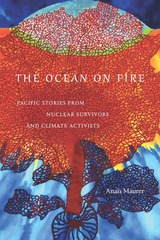 The Ocean on Fire: Pacific Stories from Nuclear Survivors and Climate Activists
Anaïs Maurer
Duke University Press, 2024 Bombarded with the equivalent of one Hiroshima bomb a day for half a century, Pacific people have long been subjected to man-made cataclysm. Well before climate change became a global concern, nuclear testing brought about untimely death, widespread diseases, forced migration, and irreparable destruction to the shores of Oceania. In The Ocean on Fire, Anaïs Maurer analyzes the Pacific literature that incriminates the environmental racism behind radioactive skies and rising seas. Maurer identifies strategies of resistance uniting the region by analyzing an extensive multilingual archive of decolonial Pacific art in French, Spanish, English, Tahitian, and Uvean, ranging from literature to songs and paintings. She shows how Pacific nuclear survivors’ stories reveal an alternative vision of the apocalypse: instead of promoting individualism and survivalism, they advocate mutual assistance, cultural resilience, South-South transnational solidarities, and Indigenous women’s leadership. Drawing upon their experience resisting both nuclear colonialism and carbon imperialism, Pacific storytellers offer compelling narratives to nurture the land and each other in times of global environmental collapse.
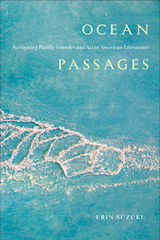 Ocean Passages: Navigating Pacific Islander and Asian American Literatures
Erin Suzuki
Temple University Press, 2021 In her pathbreaking book, Ocean Passages, Erin Suzuki explores how movement through—and travel across—the ocean mediates the construction of Asian American and Indigenous Pacific subjectivities in the wake of the colonial conflicts that shaped the modern transpacific. Ocean Passages considers how Indigenous Pacific scholars have emphasized the importance of the ocean to Indigenous activism, art, and theories of globalization and how Asian American studies might engage in a deconstructive interrogation of race in conversation with this Indigenous-centered transnationalism. The ocean passages that Suzuki addresses include the U.S. occupation and militarization of ocean space; refugee passage and the history and experiences of peoples displaced from the Pacific Islands; migratory circuits and the labors required to cross the sea; and the different ways that oceans inform postcolonial and settler colonial nationalisms. She juxtaposes work by Indigenous Pacific and Asian American artists and authors including James George, Maxine Hong Kingston, Kathy Jetñil-Kijiner, lê thi diếm thúy, Ruth Ozeki, and Craig Santos Perez. In Ocean Passages, Suzuki explores what new ideas, alliances, and flashpoints might arise when comparing and contrasting Asian and Pacific Islander passages across a shared sea.
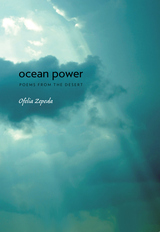 Ocean Power: Poems from the Desert
Ofelia Zepeda
University of Arizona Press, 1995 The annual seasons and rhythms of the desert are a dance of clouds, wind, rain, and flood—water in it roles from bringer of food to destroyer of life. The critical importance of weather and climate to native desert peoples is reflected with grace and power in this personal collection of poems, the first written creative work by an individual in O'odham and a landmark in Native American literature.
Poet Ofelia Zepeda centers these poems on her own experiences growing up in a Tohono O'odham family, where desert climate profoundly influenced daily life, and on her perceptions as a contemporary Tohono O'odham woman. One section of poems deals with contemporary life, personal history, and the meeting of old and new ways. Another section deals with winter and human responses to light and air. The final group of poems focuses on the nature of women, the ocean, and the way the past relationship of the O'odham with the ocean may still inform present day experience. These fine poems will give the outside reader a rich insight into the daily life of the Tohono O'odham people.
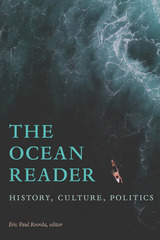 The Ocean Reader: History, Culture, Politics
Eric Paul Roorda, editor
Duke University Press, 2020 From prehistoric times to the present, the Ocean has been used as a highway for trade, a source of food and resources, and a space for recreation and military conquest, as well as an inspiration for religion, culture, and the arts. The Ocean Reader charts humans' relationship to the Ocean, which has often been seen as a changeless space without a history. It collects familiar, forgotten, and previously unpublished texts from all corners of the world. Spanning antiquity to the present, the volume's selections cover myriad topics including the slave trade, explorers from China and the Middle East, shipwrecks and castaways, Caribbean and Somali pirates, battles and U-boats, narratives of the Ocean's origins, and the devastating effects of climate change. Containing gems of maritime writing ranging from myth, memoir, poetry, and scientific research to journalism, song lyrics, and scholarly writing, The Ocean Reader is the essential guide for all those wanting to understand the complex and long history of the Ocean that covers over 70 percent of the planet.
Ocean Remote Sensing Technologies: High frequency, marine and GNSS-based radar
Weimin Huang
The Institution of Engineering and Technology, 2022 A vast array of ocean instrumentation has been developed for research purposes since the middle of the twentieth century, among which remote sensing technologies have become increasingly important. Within this class of instruments, high frequency (HF) surface and skywave radar, microwave marine radar and global navigation satellite systems (GNSS)-based radar have been successfully implemented in gathering information on large tracts of the ocean surface. This book provides a systematic introduction to the principles, state-of-the-art methods and applications of HF surface and sky wave radar, microwave marine radar and GNSS-based radar, as well as an exploration of ongoing challenges in the field.
 The Ocean, the Bird, and the Scholar: Essays on Poets and Poetry
Helen Vendler
Harvard University Press, 2015 “One of [Vendler’s] finest books, an impressive summation of a long, distinguished career.”
—Charles Simic, New York Review of Books
A Times Higher Education Book of the Week.
A lively collection of the great critic’s later work showcases her unswerving and deeply personal dedication to good poetry.
One of our foremost commentators on poetry examines the work of a broad range of nineteenth- and twentieth-century English, Irish, and American poets. The Ocean, the Bird, and the Scholar gathers two decades’ worth of Helen Vendler’s essays, book reviews, and occasional prose—including the 2004 Jefferson Lecture—in a single volume. Taken together, they serve as a reminder that if the arts and the patina of culture they cast over the world were deleted, we would, in Wallace Stevens’s memorable formulation, inhabit “a geography of the dead.” These essays also remind us that without the enthusiasm, critiques, and books of each century’s scholars, there would be imperfect perpetuation and transmission of culture.
All of the modern poets who have long preoccupied Vendler—Wallace Stevens, Seamus Heaney, John Ashbery, and Jorie Graham—are fully represented, as well as others, including Langston Hughes, Allen Ginsberg, Robert Lowell, Elizabeth Bishop, Amy Clampitt, James Merrill, A. R. Ammons, and Mark Ford. And Vendler reaches back into the poetic tradition, tracing the influence of Keats, Yeats, Whitman, T. S. Eliot, and others in the work of today’s poets. As ever, her readings help to clarify the imaginative novelty of poems, giving us a rich sense not only of their formal aspects but also of the passions underlying their linguistic and structural invention. The Ocean, the Bird, and the Scholar is an eloquent plea for the centrality, both in humanistic study and modern culture, of poetry’s beautiful, subversive, sustaining, and demanding legacy.
Ocean Yearbook, Volume 10
Edited by Elisabeth Mann Borgese, Norton Ginsburg, and Joseph R. Morgan
University of Chicago Press, 1993
Ocean Yearbook, Volume 11
Edited by Elisabeth Mann Borgese, Norton Ginsburg, and Joseph R. Morgan
University of Chicago Press, 1995 Since 1978, marine biologists, oceanographers, and specialists in foreign policy, ocean development, international law, and strategic studies have found the Ocean Yearbook series to be an invaluable asset for research on one of the world's vital resources.
Volume 11 addresses the development of marine resources, along with recent transportation, communication, marine science, and technology developments. Twenty-four articles focus on such topics as sea-based nuclear issues, regional cooperation, transport of liquefied natural gas, along with an analysis of the UN conference on Straddling and Highly Migratory Fish Stocks.
 Ocean Yearbook, Volume 12
Edited by Elisabeth Mann Borgese, Norton Ginsburg, and Joseph R. Morgan
University of Chicago Press, 1996 For more than fifteen years, marine biologists, oceanographers, and specialists in foreign policy, ocean development, international law, and strategic studies have found the Ocean Yearbook series to be an invaluable asset for research on one of the world's vital resources.
Volume 12 focuses on the sustainable development and use of the world's oceans and their resources. Major articles examine the managerial implications of sustainable development in different oceanic regions as well as how they relate to fisheries, coastal ecosystems and genetic and biochemical resources. Current problems associated with marine transportation are also addressed. In addition, the twelfth edition celebrates the entry into force of the United Nations Convention on the Law of the Sea and the recent conclusion of the agreement relating to the conservation and management of straddling and highly migratory fish stocks.
Ocean Yearbook, Volume 13
Edited by Elisabeth Mann Borgese, Aldo Chircop, Moira L. McConnell, and Joseph R
University of Chicago Press, 1998
Ocean Yearbook, Volume 14
Edited by Elisabeth Mann Borgese, Aldo Chircop, Moira L. McConnell, and Joseph R
University of Chicago Press, 1998 For nearly twenty years, the Ocean Yearbook, published in cooperation with the International Ocean Institute, has provided a comprehensive review of issues and concerns affecting the world's oceans. Volume 14, a special edition to celebrate the Year of the Ocean, focuses on key themes in ocean policy and research, examines such topics as recent Law of the Sea cases, maritime boundaries, oil and gas exploration, fishery management, the economy of the ocean, and ship routing systems. Additionally, important regional development, environmental, and coastal management topics are discussed. Also included are a number of appendices, providing essential reports from organizations, selected documents and proceedings, a comprehensive resource listing of ocean-related organizations.
 Ocean Yearbook, Volume 15
Edited by Elisabeth Mann Borgese, Aldo Chircop, and Moira L. McConnell
University of Chicago Press, 2002 Published in cooperation with the International Ocean Institute and Dalhousie University Law School, the Ocean Yearbook provides a comprehensive review of issues concerning the world's oceans—one of humanity's most vital resources. Volume 15 address central themes in ocean policy and research, including recent Law of the Sea cases; fisheries conservation and governance; environmental issues, such as global climate change, pollution, coastal zone management, and changes in regional ecosystems; the shipping industry; and international trade. Special topics include: a marine park proposal for the Spratly Islands; the North-South conflict; Australia's oceans policy; and globalization and the seafarer.
Since its inception in 1978, the Ocean Yearbook has proven an invaluable research tool to marine biologists, oceanographers, ocean development specialists, students of international law, as well as analysts of foreign policy and international security.
 Ocean Yearbook, Volume 16
Edited by Elisabeth Mann Borgese, Aldo Chircop, and Moira L. McConnell
University of Chicago Press, 2002 Published in cooperation with the International Ocean Institute and Dalhousie University Law School, the Ocean Yearbook provides a comprehensive review of issues concerning the world's oceans-one of humanity's most vital resources. Volume 16 addresses themes central to ocean policy and research. Sections include Issues and Prospects: UNICPOLOS, the 1st and 2nd sessions, and Japanese Ocean Governance; Living Resources: Local Industry in a Global World: Implications of Nova Scotia Tuna Ranching, and the Role of National Fisheries Administrations; Maritime Transport: Container Vessels in the New Millennium, and Chinese Maritime Law; Environmental and Coastal Management: Challenges of Importing Principles of Integrated Coastal and Ocean Management into Canada's Ocean Laws, and Prospects for Pollution Reduction by Bioremediation in the Marine Environment; Maritime Security: Maritime Cooperation in Asia and the Pacific.
Selected Documents and Proceedings include:
Report of the International Ocean Institute 1999 - 2000
Oceans and the Law of the Sea Report of the Secretary General, 2000
UN Convention on the Law of the Sea Report
The Hamburg Declaration on the Ocean
The Fiji Declaration on Islands in the New Millennium
The Appendix includes a Directory of Oceans-related Institutions
Since its inception in 1978, the Ocean Yearbook has proven an invaluable research tool to marine biologists, oceanographers, ocean development specialists, students of international law, as well as analysts of foreign policy and international security.
Ocean Yearbook, Volume 17
Edited by Elisabeth Mann Borgese, Aldo Chircop, and Moira L. McConnell
University of Chicago Press, 2003 Since 1978, the Ocean Yearbook has published original, peer-reviewed articles and reference materials for students and practitioners of international law, ocean development, coastal zone management, foreign policy, and strategic studies. Coverage includes the global management of marine resources, international law and environmental policy.
Ocean Yearbook is a collaborative initiative of the International Ocean Institute and the Marine and Environmental Law Programme at Dalhousie University Law School.
Ocean Yearbook, Volume 18
Edited by Aldo Chircop and Moira L. McConnell
University of Chicago Press, 2004 Published in cooperation with the International Ocean Institute and Dalhousie University Law School, Ocean Yearbook 18—a commemorative volume honoring Elisabeth Mann Borgese—presents original, peer-reviewed articles, reviews, and reference materials from experts in such diverse fields as governance and sustainable development, integrated coastal and ocean management, global and regional cooperation, and international law and environmental policy.
The Ocean Yearbook is an invaluable research tool for marine biologists, oceanographers, students of international law, and analysts of foreign policy and international security.
Ocean Yearbook, Volume 19
Edited by Aldo Chircop and Moira L. McConnell
University of Chicago Press, 2005 Published in cooperation with the International Ocean Institute and Dalhousie University Law School, Ocean Yearbook,Volume 19 presents original, peer-reviewed articles, reviews, and reference materials from experts in such diverse fields as governance and sustainable development, integrated coastal and ocean management, global and regional cooperation, and international law and environmental policy.
Ocean Yearbook, Volume 7
Edited by Elisabeth Mann Borgese, Norton Ginsburg, and Joseph R. Morgan
University of Chicago Press, 1989
Ocean Yearbook, Volume 8
Edited by Elisabeth Mann Borgese, Norton Ginsburg, and Joseph R. Morgan
University of Chicago Press, 1990
Ocean Yearbook, Volume 9
Edited by Elisabeth Mann Borgese, Norton Ginsburg, and Joseph R. Morgan
University of Chicago Press, 1992
 Oceanic Becoming: The Pacific beneath the Pavements
Rob Wilson
Duke University Press, 2025 From disappearing coral reefs and ocean acidification to floating great garbage patches, the Pacific Ocean is an ever-present reminder of the Anthropocene. In Oceanic Becoming, Rob Wilson demonstrates that in the midst of the planetary crises the Pacific now faces, it must be understood as interconnected to the other oceans. Wilson frames this interconnection as “Oceania,” reconceiving the world oceans as tied to sites of urban dwelling and life sustenance—from Boston to Brisbane—that are increasingly threatened by late capitalism. Confronting these threats, Wilson argues, requires a project he theorizes as “worlding”—a process of world-making and world-remaking across Oceania that would create new forms of belonging and connection at local, regional, and transnational levels. Wilson shows how Oceania is not just a site of peril but one charged with emergent literary and social formations that can provide the basis for new solidarities, futures, and ecologies.
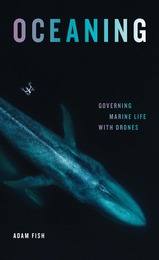 Oceaning: Governing Marine Life with Drones
Adam Fish
Duke University Press, 2024 Drones are revolutionizing ocean conservation. By flying closer and seeing more, drones enhance intimate contact between ocean scientists and activists and marine life. In the process, new dependencies between nature, technology, and humans emerge, and a paradox becomes apparent: Can we have a wild ocean whose survival is reliant upon technology? In Oceaning, Adam Fish answers this question through eight stories of piloting drones to stop the killing of porpoises, sharks, and seabirds and to check the vitality of whales, seals, turtles, and coral reefs. Drone conservation is not the end of nature. Instead, drone conservation results in an ocean whose flourishing both depends upon and escapes the control of technologies. Faulty technology, oceanic and atmospheric turbulence, political corruption, and the inadequacies of basic science serve to foil governance over nature. Fish contends that what emerges is an ocean/culture—a flourishing ocean that is distinct from but exists alongside humanity.
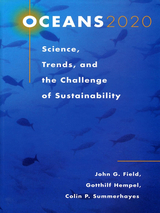 Oceans 2020: Science, Trends, and the Challenge of Sustainability
Edited by J. G. Field, G. Hempel, and C. P. Summerhayes
Island Press, 2002 Oceans 2020 presents a comprehensive assessment of the most important science and societal issues that are likely to arise in marine science and ocean management in the next twenty years. Sponsored by the Intergovernmental Oceanographic Commission (IOC), the Scientific Committee on Oceanic Research (SCOR), and the Scientific Committee on Problems of the Environment (SCOPE), the book brings together the world's leading ocean scientists and researchers to analyze the state of marine science and technology, identify key scientific issues for sustainable development, and evaluate the capability of scientists, governments, and private-sector stakeholders to respond to those issues. Topics include: · basic ocean sciences · pressures on the coastal zone · climate change and the ocean · fisheries and fishery science in their search for sustainability · offshore industries including oil drilling, carbon sequestration, and manganese nodule mining · marine information for shipping and defense Also included are chapters on cross-cutting issues including operational oceanography, ocean instrumentation and technology, developing frameworks for cooperation, and capacity building in developing nations. In addition, the book offers an introductory overview and a "Vision to 2020" that outlines a path to rational ocean governance. In each chapter, contributors give a brief but comprehensive overview of the subject and then consider what has been achieved in recent years, define the problems, outline solutions, and set forth recommendations on the needs for and directions of ocean science in support of sustainable development for the next twenty years. Oceans 2020 suggests what can be done about major marine environmental issues through the better development and application of marine science and technology, focusing on the issues that are most closely related to human and sustainable development. It will help guide countries in developing their marine science and technology strategies and priorities and is an essential source of information for policymakers, government officials, resource managers, scientists, the media, and all those concerned with the current and future health of the oceans.
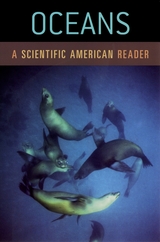 Oceans: A Scientific American Reader
Edited by Scientific American
University of Chicago Press, 2007 Covering nearly three-quarters of our planet, the world’s oceans are a vast and unique ecosystem from which all life on Earth originated. But each year the marine realm is more susceptible to harm by careless exploitation, and as demands for food, waste disposal, transport, and travel increase, the fate of the world’s oceans hangs in the balance. This timely guide offers the nonscientist an opportunity to appreciate the importance of this expansive—and fragile—frontier.
With selections chosen for their value in identifying the multiple uses of oceans, their resources, and the hurdles they face as the world’s population continues to expand and consume their resources at a staggering rate, Oceans collects more than thirty thematically arranged articles from the past decade, including recent pieces written in the wake of the 2004 tsunami. The bookfeatures articles that investigate the origins of the world’s oceans, the diversity of life in the water, the state of global fisheries, the dangers of natural disasters, and the perils oceans face, whether induced by nature or by humans.
With breadth of topics as wide as the ocean is deep, this Scientific American reader will engage general readers interested in the evolution, ecology, and conservation of the oceanic ecosystem and can be used in courses on introductory oceanography, environmental science, and marine biology.
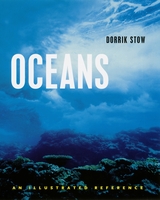 Oceans: An Illustrated Reference
Dorrik Stow
University of Chicago Press, 2005 Four billion years old, the oceans formed as the Earth's scorching surface cooled, the primordial atmosphere condensed, and torrential rains fell. Their color is the unique signature of our blue planet, their composition a chemical cocktail of remarkable variety, their waters a theater of constant change.
Oceans: An Illustrated Reference tells the story of this last great frontier. With hundreds of beautiful full-color photographs and explanatory diagrams, charts, and maps, Oceans combines the visual splendor of ocean life with up-to-date scientific information to provide an invaluable and fascinating resource on this vital realm. Covering all major areas of oceanographic knowledge and research, Oceans is divided into two parts. The first, "Ocean Systems," examines the physical nature of the oceans, including plate tectonics, temperature and climate, waves and tides, natural resources and much more. The second, "Ocean Life,"explores biodiversity, evolution and adaptation, marine ecosystems and complex communities, and the preservation of fragile marine environments.
Oceans also offers readers a host of tools to better understand the magnificent world of the sea. A special section of bathymetric maps-made possible by satellite observation, deep-towed surveying craft, and remotely operated submarine vessels-provides a view of the depth and texture of ocean floors around the globe, giving us a glimpse of worlds rarely seen. And throughout the book, engagingly written special features delve into specific marine environments and phenomena such as the lost Tethys Ocean, from which the Himalayas were born. Cross-references and a detailed index help readers navigate this multifaceted volume, and a glossary provides clear definitions of scientific vocabulary.
Although the oceans are vast, their resources are finite. Oceans clearly presents the future challenge to us all-that of ensuring that our common ocean heritage is duly respected, wisely managed, and carefully harnessed for the benefit of the whole planet. Lavishly illustrated and filled with current research, Oceans is a step in that direction: a rich, magnificent, and illuminating volume for anyone who has ever heard the siren song of the sea.
 The Oceans and Environmental Security: Shared U.S. And Russian Perspectives
Edited by James M. Broadus and Raphael V. Vartanov
Island Press, 1994 The concept of environmental security, drawing on the widely understood notion of international strategic interdependence (in facing, for example, threats of nuclear war or economic collapse) is gaining currency as a way of thinking about international environmental management. In 1989, the Institute for World Economy and International Relations of the Russian Academy of Sciences and the Marine Policy Center of Woods Hole Oceanographic Institution instituted a joint project to examine environmental security as it applies to the world's oceans. The Oceans and Environmental Security is a unified expression of their findings. The oceans, as global commons, are of central importance to issues of international environmental security. Critical problems are those that are likely to destabilize normal relations between nations and provoke international countermeasures. As such, the book focuses on seven specific concerns: - land-based marine pollution
- North Pacific fisheries depletion
- hazardous materials transport
- nuclear contamination
- the Arctic Ocean
- the Southern Ocean and Antarctica
- the Law of the Sea
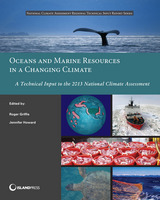 Oceans and Marine Resources in a Changing Climate: A Technical Input to the 2013 National Climate Assessment
Roger Griffis and Jennifer Howard
Island Press, 2013 Prepared for the 2013 National Climate Assessment and a landmark study in terms of its breadth and depth of coverage, Oceans and Marine Resources in a Changing Climate is the result of a collaboration among numerous local, state, federal, and nongovernmental agencies to develop a comprehensive, state of the art look at the effects of climate change on the oceans and marine ecosystems under U.S. jurisdiction. This book provides an assessment of scientific knowledge of the current and projected impacts of climate change and ocean acidification on the physical, chemical, and biological components and human uses of marine ecosystems under U.S. jurisdiction. It also provides assessment of the international implications for the U.S. due to climate impacts on ocean ecosystems and of efforts to prepare for and adapt to climate and acidification impacts on ocean ecosystem, including
· Climate-Driven Physical and Chemical Changes in Marine Ecosystems
· Impacts of Climate Change on Marine Organisms
· Impacts of Climate Change on Human Uses of the Ocean
· International Implications of Climate Change
· Ocean Management Challenges, Adaptation Approaches, and Opportunities in a Changing Climate
· Sustaining the Assessment of Climate Impacts on Oceans and Marine Resources Rich in science and case studies, it examines the latest climate change impacts, scenarios, vulnerabilities, and adaptive capacity and offers decision makers and stakeholders a substantial basis from which to make informed choices that will affect the well-being of the region’s inhabitants in the decades to come.
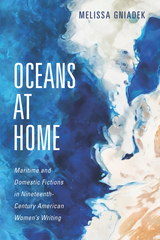 Oceans at Home: Maritime and Domestic Fictions in Nineteenth-Century American Women's Writing
Melissa Gniadek
University of Massachusetts Press, 2021 The maritime world was central to nineteenth-century America, and ideas about the ocean, seafaring, and encounters with distant peoples and places suffused the cultural imagination. Women writers who were not mariners themselves incorporated oceanic representations and concerns into their work, often through genres that were generally not associated with the sea, such as children's fiction, diaries, and female coming-of-age stories.
Melissa Gniadek explores the role of the ocean, with particular attention to the Pacific, in a diverse range of literary texts spanning the late 1820s through the mid-1860s from Lydia Maria Child, Caroline Kirkland, Harriet Beecher Stowe, Elizabeth Stoddard, and Harriet Prescott Spofford. Oceans at Home shows that authors employed maritime plots and stories from distant locations to probe contemporary concerns facing the continental United States, ranging from issues of gender restrictions in the domestic sphere to the racial prejudices against indigenous peoples that lay at the heart of settler colonialism.
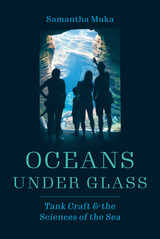 Oceans under Glass: Tank Craft and the Sciences of the Sea
Samantha Muka
University of Chicago Press, 2023 A welcome dive into the world of aquarium craft that offers much-needed knowledge about undersea environments.
Atlantic coral is rapidly disappearing in the wild. To save the species, they will have to be reproduced quickly in captivity, and so for the last decade conservationists have been at work trying to preserve their lingering numbers and figure out how to rebuild once-thriving coral reefs from a few survivors. Captive environments, built in dedicated aquariums, offer some hope for these corals. This book examines these specialized tanks, charting the development of tank craft throughout the twentieth century to better understand how aquarium modeling has enhanced our knowledge of the marine environment.
Aquariums are essential to the way we understand the ocean. Used to investigate an array of scientific questions, from animal behavior to cancer research and climate change, they are a crucial factor in the fight to mitigate the climate disaster already threatening our seas. To understand the historical development of this scientific tool and the groups that have contributed to our knowledge about the ocean, Samantha Muka takes up specialty systems—including photographic aquariums, kriesel tanks (for jellyfish), and hatching systems—to examine the creation of ocean simulations and their effect on our interactions with underwater life. Lively and engaging, Oceans under Glass offers a fresh history about how the aquarium has been used in modern marine biology and how integral it is to knowing the marine world.
Octave Mirbeau: Two Plays: "Business is Business" and "Charity"
Translated and Adapted by Richard J. Hand
Intellect Books, 2012 Octave Mirbeau was one of the most prolific literary figures of France’s storied Belle Époque, and his innovative theatrical works are only recently being rediscovered and appreciated by modern audiences. Here for the first time in English-language translation are his two most celebrated and successful plays: Business is Business, a classical comedy of manners recalling Molière; and Charity, a satirical comedy centered around the exploitation of adolescents in a dubious charity home. In addition to the play texts, this volume also includes an introduction contextualizing the works and the translation and adaptation process.
Octavia E. Butler
Gerry Canavan
University of Illinois Press, 2016 "I began writing about power because I had so little," Octavia E. Butler once said. Butler's life as an African American woman--an alien in American society and among science fiction writers--informed the powerful works that earned her an ardent readership and acclaim both inside and outside science fiction. Gerry Canavan offers a critical and holistic consideration of Butler's career. Drawing on Butler's personal papers, Canavan tracks the false starts, abandoned drafts, tireless rewrites, and real-life obstacles that fed Butler's frustrations and launched her triumphs. Canavan departs from other studies to approach Butler first and foremost as a science fiction writer working within, responding to, and reacting against the genre's particular canon. The result is an illuminating study of how an essential SF figure shaped themes, unconventional ideas, and an unflagging creative urge into brilliant works of fiction.
Octavia Hill, social activism and the remaking of British society
Edited by Elizabeth Baigent and Ben Cowell
University of London Press, 2016 This volume reassesses the life and work of Octavia Hill, housing reformer, open space campaigner, co-founder of the National Trust, founder of the Army Cadet Force, and the first woman to be invited to sit on a royal commission. In her lifetime she was widely regarded as an authority on a broad range of social problems. Yet despite her early pre-eminence, and the remarkable success of the institutions which she helped to found, Hill fell from public favour in the twentieth century. This book provides a nuanced portrait of Hill and her work in a broader context of social change, reflecting recent scholarship on nineteenth-century society in general, and on philanthropy and preservation, and women’s role in them, in particular.
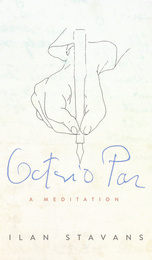 Octavio Paz: A Meditation
Ilan Stavans
University of Arizona Press, 2001 Octavio Paz: Nobel Prize winner, author of The Labyrinth of Solitude and Sor Juana, or, the Traps of Faith, precursor and pathfinder, a guiding light of the Mexican intelligentsia in the twentieth century. In this small, memorable meditation on Octavio Paz as a thinker and man of action, Ilan Stavans—described by the Washington Post as "one of our foremost cultural critics" and by the New York Times as "the czar of Latino culture in the United States"—ponders Paz's intellectual courage against the ideological tapestry of his epoch and shows us what lessons can be learned from him. He does so by exploring such timeless issues as the crossroads where literature and politics meet, the place of criticism in society, and Mexico’s difficult quest to come to terms with its own history. Stavans reflects on Paz's personal struggle with Marxism and surrealism, his reflections on pachucos, his analysis of love and eroticism, his study of the life and legacy of Sor Juana Inés de la Cruz, and his influence as a magazine editor. But this extraordinary rumination is not only a thought-provoking appraisal of Paz; it is also a feast for the myriad admirers of Stavans, himself a spirited, mordant essayist who is not afraid of controversy. This explains why Richard Rodriguez has portrayed Stavans as "the rarest of North American writers—he sees the Americas whole," and then added, "Not since Octavio Paz has Mexico given us an intellectual so able to violate borders with learning and grace." Octavio Paz: A Meditation is a fitting addition to Stavans’s own oeuvre that will stimulate discerning readers.
 October 16 1943 Eight Jews
Giacomo Debenedetti
University of Notre Dame Press, 2001 "October 16, 1943 is one of the finest accounts ever written about the massive German roundup of Jews in Rome on the date of its title. Debenedetti's mastery of the facts, literary ability, and concern for the human dimension make this tragic event come alive in all its horror. His work is both a valuable contribution to the historical record and a moving tribute to the more than one thousand Jewish victims of a Nazi atrocity in the Eternal City."
--Susan Zuccotti, author of Under His Very Windows: The Vatican and the Holocaust in Italy, winner of the 2000 National Jewish Book Award for Jewish-Christian Relations.
For more than fifty years, Giacomo Debenedetti's October 16, 1943 has been considered one of the best and most accurate accounts of the shockingly brief and efficient roundup of more than one thousand Roman Jews from the oldest Jewish community in Europe for the gas chambers of Auschwitz. Completed a year after the event, Debenedetti's intimate details and vivid glimpses into the lives of the victims are especially poignant because Debenedetti himself was there to witness the event, which forced him and his entire family into hiding.
Eight Jews, the companion piece to October 16, 1943, was written in response to testimony about the Ardeatine Cave Massacres of March 24, 1944. In this essay, Debenedetti offers insights into that grisly horror and into assumptions about racial equality. Both of these stunning works are appearing together, along with Alberto Moravia's preface to Debenedetti's October 16, 1943, for the first time in an American translation. October 16, 1943/Eight Jews gives American readers a first glimpse into the extraordinary mind of the man who was Italy's foremost critic of twentieth-century literature.
In addition to probing the deeper, haunting questions of the Holocaust, Debenedetti briefly describes the seizure of the Roman Jewish community's library of early manuscripts and incunables, the most valuable Jewish library in all of Italy. Following the roundup, this library was never seen again. Award-winning translator Estelle Gilson offers an additional essay on the history of the library and modern-day attempts to locate it.
October 16, 1943/Eight Jews is a moving work that will continue to challenge readers long after they have closed its pages.
GIACOMO DEBENEDETTI (1901-1967) was a professor at the University of Messina and the University of Rome, an editor at an Italian publishing house, Italy's foremost critic of twentieth-century literature, and a friend of leading leftist intellectuals, including Jean-Paul Sartre and Pablo Neruda.
----------
"Debenedetti's October 16, 1943 is considered the earliest work of Italian Holocaust narrative and was fundamental for later historical and fictional accounts of the Rome ghetto round-up. A departure from Debenedetti's better-known critical works, it was written with a keen literary ear and careful attention to the facts. Some of its pages are as moving as any in Italian Holocaust literature. This American edition provides a useful introduction and notes by the translator, as well as a new translation of Moravia's personal comments and Debenedetti's contemporary work, Eight Jews."--Risa Sodi, Italian Language and Literature, Yale University; author of A Dante of Our Time: Primo Levi and Auschwitz
"Gilson's nuanced translation of this indispensable Holocaust document introduces U.S. readers to a formidable Jewish intellectual. [She] skillfully renders Debenedetti's heartbreaking evocation of Rome's mood that autumn. Gilson's essay on the fate of the Jewish libraries and Alberto Moravia's preface round out this short, immensely fertile book on the Holocaust in Italy." --Publishers Weekly, August 13, 2001
"The most important chronicle of the German roundup of the Jews of Rome written to date . . . Estelle Gilson's wonderfully written translation of Mr. Debenedetti's work is very readable and quite interesting." --Riverdale Press, 8/16/01
"This slim book is a humanistic triumph by one of Italy's best-known literary critics."--Hadassah Magazine, October 2001
"Debenedetti's powerful October 16, 1943 is a brief and invaluable documentary, written with extraordinary calm and grace . . . translator Estelle Gilson adds a fascinating epiologue on the unknown fate of the Roman Jewish libraries archives."--Baltimore Sun, September 16, 2001
"For anyone who knows the particular fate of Italian Jewry at the hands of the Nazis, these brief works have a devastating effect."--The Jewish Exponent, January 31, 2002
"Debenedetti's eyewitness account of these events, and those days preceding and following it, were written a year after the event, and are the most vivid and detailed description of the round-up." --Lifestyles Magazine, 6/20/2002, Vol. 30 No. 180
October Farm: From the Concord Journals and Diaries of William Brewster
William Brewster
Harvard University Press “October Farm" was the name that William Brewster, one of the greatest American ornithologists, gave to his beautiful estate in Concord, Massachusetts. We have transferred the name to this delightful book, which is made up of selections from the voluminous diaries he kept during practically his whole life.
 October!: The Soviet Centenary
Michael Hardt and Sandro Mezzadra, special issue editors
Duke University Press, 2017 Contributors to this issue approach the October 1917 Russian Revolution and the experiments of the revolutionary period as events that opened new possibilities for politics that remain vital one hundred years later. The essays highlight how those events not only affected Russia and Europe but led to the emergence of a new political image of the world and a profound rethinking of Marxist traditions. This issue globalizes the 1917 revolution, emphasizing its echoes throughout the world and the parallel development of political possibilities beyond Russia. Topics include the Soviets from the revolution to the present, the impact of the revolution in Latin America, the work of the legal theorist Evgeny Pashukanis analyzed through the lens of the revolution, anarchist imaginaries, and the historicizing of communism.
Contributors. Giso Amendola, Martín Bergel, Kathy Ferguson, Michael Hardt, Wang Hui, Artemy Magun, John MacKay, Sandro Mezzadra, Antonio Negri, Enzo Traverso
OCTOBERS
Sahar Muradi
University of Pittsburgh Press, 2023 Winner of the 2022 Donald Hall Prize for Poetry
Octobers traces the four great tumults of the author’s life, all of which originated in that jagged month of different years: The US invasion and occupation of her native Afghanistan, the death of her father, the sudden end of a love, and the birth of her daughter. The poems chart heartbreak along a helix, progressively and recursively, where “echoes are inevitable.” Ultimately, the collection is concerned with language—as witness and buoy in the white waters of loss, as a tool for violences small and state-crafted, as an asymptote both approaching ideas of “home” and estranged from it, and, beyond it all and still, as a source of wild wonder.
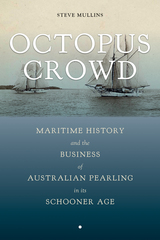 Octopus Crowd: Maritime History and the Business of Australian Pearling in Its Schooner Age
Steve Mullins
University of Alabama Press, 2019 A detailed study of the origins and demise of schooner-based pearling in Australia
For most of its history, Australian pearling was a shore-based activity. But from the mid-1880s until the World War I era, the industry was dominated by highly mobile, heavily capitalized, schooner-based fleets of pearling luggers, known as floating stations, that exploited Australia’s northern continental shelf and the nearby waters of the Netherlands Indies. Octopus Crowd: Maritime History and the Business of Australian Pearling in Its Schooner Age is the first book-length study of schooner-based pearling and explores the floating station system and the men who developed and employed it.
Steve Mullins focuses on the Clark Combination, a syndicate led by James Clark, Australia’s most influential pearler. The combination honed the floating station system to the point where it was accused of exhausting pearling grounds, elbowing out small-time operators, strangling the economies of pearling ports, and bringing the industry to the brink of disaster. Combination partners were vilified as monopolists—they were referred to as an “octopus crowd”—and their schooners were stigmatized as hell ships and floating sweatshops.
Schooner-based floating stations crossed maritime frontiers with impunity, testing colonial and national territorial jurisdictions. The Clark Combination passed through four fisheries management regimes, triggering significant change and causing governments to alter laws and extend maritime boundaries. It drew labor from ports across the Asia-Pacific, and its product competed in a volatile world market. Octopus Crowd takes all of these factors into account to explain Australian pearling during its schooner age. It argues that the demise of the floating station system was not caused by resource depletion, as was often predicted, but by ideology and Australia’s shifting sociopolitical landscape
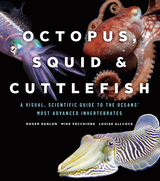 Octopus, Squid, and Cuttlefish: A Visual, Scientific Guide to the Oceans’ Most Advanced Invertebrates
Roger Hanlon, Mike Vecchione, and Louise Allcock
University of Chicago Press, 2018 "Cephalopods are often misunderstood creatures. Three biologists set the record straight."—Science News
Largely shell-less relatives of clams and snails, the marine mollusks in the class Cephalopoda—Greek for “head-foot”—are colorful creatures of many-armed dexterity, often inky self-defense, and highly evolved cognition. They are capable of learning, of retaining information—and of rapid decision-making to avoid predators and find prey. They have eyes and senses rivaling those of vertebrates like birds and fishes, they morph texture and body shape, and they change color faster than a chameleon. In short, they captivate us.
From the long-armed mimic octopus—able to imitate the appearance of swimming flounders and soles—to the aptly named flamboyant cuttlefish, whose undulating waves of color rival the graphic displays of any LCD screen, there are more than seven hundred species of cephalopod. Featuring a selection of species profiles, Octopus, Squid, and Cuttlefish reveals the evolution, anatomy, life history, behaviors, and relationships of these spellbinding animals. Their existence proves that intelligence can develop in very different ways: not only are cephalopods unusually large-brained invertebrates, they also carry two-thirds of their neurons in their arms.
A treasure trove of scientific fact and visual explanation, this worldwide illustrated guide to cephalopods offers a comprehensive review of these fascinating and mysterious underwater invertebrates—from the lone hunting of the octopus, to the social squid, and the prismatic skin signaling of the cuttlefish.
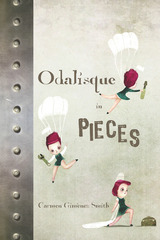 Odalisque in Pieces
Carmen Giménez Smith
University of Arizona Press, 2009 In her debut poetry collection, Carmen Giménez Smith illuminates Latina identity in the prismatic light of postcolonial history, feminism, myth, and the fragmentation of modernity. From these disparate elements she fashions a female persona—“clairvoyant with great shoes”—who is both bracingly modern and movingly vulnerable. Through her poems we traverse the landscape of a woman’s life (girl, mother, lover), navigating a terrain tinted with mythology and relic yet still fresh and uncharted. The poems revolve around issues of identity—and the ways in which identity is both inherited and constructed/reconstructed. Or, as one poem puts it, “The planet floating backwards / whirling some of us older than the stars, some of us nascent and bare.” Although she employs techniques of avant-garde poetry, Giménez Smith shades and deepens the New World landscape into a territory of rare lyric intensity and energy. Humorous, sly, sexy, sophisticated, these poems are animated by passion and hard-won knowledge.
In these poems we encounter such strange beauties as a girl assembling and disassembling, a moth trapped in a glass of water, new-age fairy godmothers, and a lark who sings for the milkman. Yet we are also made aware of how these beauties reflect the speaker’s troubles—her effort to employ, in the words of one of her most memorable poems, “Only the invisible post where she writes the encounters / with air’s lusters. Only the imagined hour / with which she’s made a fragile craft.”
Vivid and charged with an inner light, these are poems that linger and expand in the mind and memory.
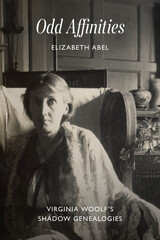 Odd Affinities: Virginia Woolf’s Shadow Genealogies
Elizabeth Abel
University of Chicago Press, 2024 A new reading of Virginia Woolf in the context of “long modernism.”
In recent decades, Virginia Woolf’s contribution to literary history has been located primarily within a female tradition. Elizabeth Abel dislodges Woolf from her iconic place within this tradition to uncover her shadowy presence in other literary genealogies. Abel elicits unexpected echoes of Woolf in four major writers from diverse cultural contexts: Nella Larsen, James Baldwin, Roland Barthes, and W. G. Sebald. By mapping the wayward paths of what Woolf called “odd affinities” that traverse the boundaries of gender, race, and nationality, Abel offers a new account of the arc of Woolf’s career and the transnational modernist genealogy constituted by her elusive and shifting presence. Odd Affinities will appeal to students and scholars working in New Modernist studies, comparative literature, gender and sexuality studies, and African American studies.
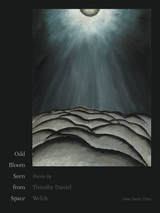 Odd Bloom Seen from Space
Timothy Daniel Welch
University of Iowa Press, 2017 These poems speak an odd nostalgia for what turns on, in, and alongside the world. A tragedy of loss, a miracle of eroticism, or a comedy of road kill, Odd Bloom Seen from Space looks at the self amid the ashes of fleeting exultation and uncertainty. The speaker tells stories with wild candor on matters of heroic inadequacy while searching through his obsessive questions for greater meaning.
But it’s in the act of discovery, through the hero’s immediate ancestry that Welch’s debut collection confronts big questions about family, music, art, and memory. Like a contemporary Diogenes who pursues meaning one small gesture at a time, Welch comes to learn truth is a “brutal commerce,” beauty is “white legs / upon which she shed her childhood,” time is “Michael Jackson / hooting in the trees,” and “Love is gradual, a bottle / by sips, a bottle / poured onto the floor.” There is wisdom to be gained from these inventive pursuits, but in the end it’s not what is said, but how it’s said with terse rhetoric, deep imagery, and surprising humor that makes Odd Bloom Seen from Space such a gorgeous, original, and baffling collection.
Odd Couples: A History of Gay Marriage in Scandinavia
Jens Rydström
Amsterdam University Press, 2011
The concept of marriage as a union of a man and a woman was fundamentally challenged by the introduction of registered partnership in Denmark in 1989. Odd Couples is the first comprehensive history of registered partnership and gay marriage in Scandinavia. It traces the origins of laws which initially were extremely controversial—inside and outside the gay community—but have now gained broad popular and political support, as well as the positive effects and risks involved in state recognition of lesbian and gay couples. Through a comparison of how these laws have been received and practiced in all of the Scandinavian countries, including Greenland and the Faroe Islands, the author presents a nuanced study of a fascinating political process that began in the 1960s and continues to change the way we understand family, sexuality and nation.
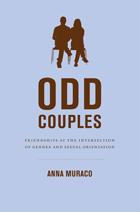 Odd Couples: Friendships at the Intersection of Gender and Sexual Orientation
Anna Muraco
Duke University Press, 2012 Odd Couples examines friendships between gay men and straight women, and also between lesbians and straight men, and shows how these “intersectional” friendships serve as a barometer for shifting social norms, particularly regarding gender and sexual orientation. Based on author Anna Muraco’s interviews, the work challenges two widespread assumptions: that men and women are fundamentally different and that men and women can only forge significant bonds within romantic relationships. Intersectional friendships challenge a variety of social norms, Muraco says, including the limited roles that men and women are expected to play in one another’s lives. Each chapter uses these boundary-crossing relationships to highlight how key social constructs such as family, politics, gender, and sexuality shape everyday interactions. Friendship itself—whether intersectional or not—becomes the center of the analysis, taking its place as an important influence on the social behavior of adults.
Odd Ducks: Stories
Patricia Lawson
BkMk Press, 2020 Winner of the Byron Caldwell Smith Award for Kansas Authors
This debut collection of nine humorous stories, set in and around Kansas City from the 1950s to the 2000s, often depicts adults awkwardly mentoring talented young people, whether in a community garden, a library, or in one-on-one advice. Other characters feel like outsiders in their own neighborhoods or suddenly become outsiders when straying into unfamiliar places.
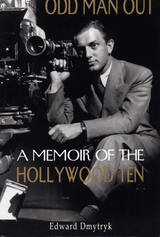 Odd Man Out: A Memoir of the Holllywood Ten
Edward Dmytryk
Southern Illinois University Press, 1996 In 1947, the House Un-American Activities Committee rudely interrupted the successful career and life of Edward Dmytryk, citing him with contempt of Congress. As a result, Dmytryk was fired by RKO and spent three years in England before returning to the United States to serve a six-month jail sentence and undergo a second round of hearings, during which he recanted and provided evidence against several of his former colleagues. In this personal and perceptive book, Dmytryk sharply chronicles the history of a particularly turbulent era in American political life while examining his own life before and after the events universally called the witch hunts. He details his brief membership in the Communist Party of America, explaining his initial commitment to what he perceived as communist ideals of civil liberties, economic justice, and antifacism, followed by his eventual disillusionment with the party as itbetrayed those ideals. He goes on to provide a fair assessment of what then happened to him and the effect it had on the rest of his life. Dmytryk describes the activities, prejudices, and personal behaviors of all the parties enmeshed in the congressional hearings on communism in Hollywood. His reactions to other members of the Hollywood Ten and his recollection of conversations with them lend his book an immediacy that is not only informative but also absorbing. Most importantly, he does not uphold an ideology but rather presents the events as he perceived them, understood them, and responded to them. Dmytryk’s account is characterized by an openness born of a mature awareness of personal trial as history.
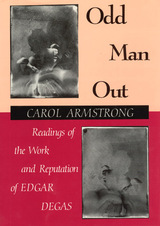 Odd Man Out: Readings of the Work and Reputation of Edgar Degas
Carol M. Armstrong
University of Chicago Press, 1991 In Odd Man Out, Carol Armstrong offers an important study of Edgar Degas's work and reputation. Armstrong grapples with contradictory portrayals of Degas as odd man out within the modernist canon: he was a realist whom realists rejected; he was a storyteller in pictures who did not satisfy novelist-critics; he painted modern life yet was no modernist; he belonged to the impressionist group yet was no impressionist. She confronts these and other contradictions by analyzing the critical vocabularies used to describe Degas's work.
By reading several groups of the artist's images through the lens of a sequence of critical texts, Armstrong shows how our critical and popular expectations of Degas are overturned and subverted. Each of these groups of images is matched to different interpretive moves, each highlighting distinct themes: economics and vocation; narrative and semiotics; gender and corporeality; and the author and self. Armstrong's provocative analysis celebrates the tantalizing qualities of the artist's elusive career: the pluralism of his work, its conflation of positivistic and negational tactics, the modern and the traditional, the abstract and the representational.
"A lucid and searching study. . . . Armstrong has produced one of the most elegant and persuasive examples of the historian's use of 19th-century art criticism. In the process, she has achieved a reading of the artist which makes a difference to the way we understand the difference of Degas himself."—Neil McWilliam, Times Higher Education Supplement
"This is a brilliant, original, and beautifully articulated study. Carol Armstrong's scholarship is impressive in its richness, ambition, and sophistication: Degas's works have rarely been given such detailed, penetrating, and suggestive readings as those offered in this book."—Linda Nochlin, Yale University
"With brilliant insight and incisive analytical intelligence, Carol Armstrong introduces new ways to conceptualize the structural ambiguities of Degas's work. Her subtle and probing readings clarify the fundamental contrariness of Degas's images—their disturbing negativity, their anti-modern modernism. Odd Man Out catapults the criticism of Degas from the hinterlands of traditional art history to the foreground of contemporary critical theory in both literature and the visual arts."—Charles Bernheimer, University of Pennsylvania
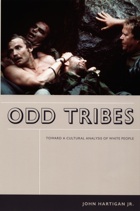 Odd Tribes: Toward a Cultural Analysis of White People
John Hartigan Jr.
Duke University Press, 2005 Odd Tribes challenges theories of whiteness and critical race studies by examining the tangles of privilege, debasement, power, and stigma that constitute white identity. Considering the relation of phantasmatic cultural forms such as the racial stereotype “white trash” to the actual social conditions of poor whites, John Hartigan Jr. generates new insights into the ways that race, class, and gender are fundamentally interconnected. By tracing the historical interplay of stereotypes, popular cultural representations, and the social sciences’ objectifications of poverty, Hartigan demonstrates how constructions of whiteness continually depend on the vigilant maintenance of class and gender decorums.
Odd Tribes engages debates in history, anthropology, sociology, and cultural studies over how race matters. Hartigan tracks the spread of “white trash” from an epithet used only in the South prior to the Civil War to one invoked throughout the country by the early twentieth century. He also recounts how the cultural figure of “white trash” influenced academic and popular writings on the urban poor from the 1880s through the 1990s. Hartigan’s critical reading of the historical uses of degrading images of poor whites to ratify lines of color in this country culminates in an analysis of how contemporary performers such as Eminem and Roseanne Barr challenge stereotypical representations of “white trash” by claiming the identity as their own. Odd Tribes presents a compelling vision of what cultural studies can be when diverse research methodologies and conceptual frameworks are brought to bear on pressing social issues.
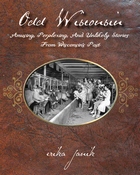 Odd Wisconsin: Amusing, Perplexing, and Unlikely Stories from Wisconsin's Past
Erika Janik
Wisconsin Historical Society Press, 2007 While Bob La Follette's exploits as leader of progressive politics are legendary, his early morning exertions to save valuable government documents and executive department paintings during the disastrous 1904 capitol fire are largely unknown - until now. Odd Wisconsin captures the Wisconsin people, places, and events that didn't make it into conventional state histories, lowering a bucket into the depths of Wisconsin history and bringing to light curious fragments of forgotten lives. This unique book unearths the stories that got lost to history even though they may have made local headlines at the time. No mythical hodags or eight-legged horses here! Odd Wisconsin features strange but true stories from Wisconsin's past, every one of which was documented (albeit by the standards of the day). These brief glimpses into Wisconsin's past will surprise, perplex, astonish, and otherwise connect readers with the state's fascinating history. From "the voyageur with a hole in his side" to "pigs beneath the legislature," Odd Wisconsin gathers 300 years of curiosities, all under the radar of traditional stories.
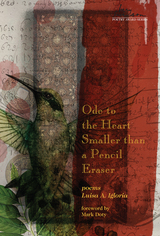 Ode to the Heart Smaller than a Pencil Eraser
Luisa A. Igloria
Utah State University Press, 2014 “When Luisa Igloria cites Epictetus—‘as soon as a thing has been seen, it is carried away, and another comes in its place’—she introduces the crowded and contradictory world her poems portray: a realm of transience, yes, where the vulnerable come to harm and everything disappears, but also a scene of tremendous, unpredictable bounty, the gloriously hued density this poet loves to detail. ‘I was raised / to believe not only the beautiful can live on / Parnassus,’ she tells us, and she makes it true, by including in the cyclonic swirl of her poems practically everything: a gorgeous, troubling over-brimming universe."
—Mark Doty, judge for the 2014 Swenson Award
The May Swenson Poetry Award, an annual competition named for May Swenson, honors her as one of America's most provocative and vital writers. During her long career, Swenson was loved and praised by writers from virtually every school of American poetry. She left a legacy of fifty years of writing when she died in 1989. She is buried in Logan, Utah, her hometown.
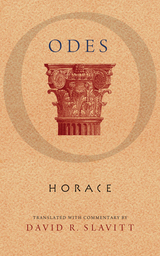 Odes
Horace, Translated with commentary by David R. Slavitt
University of Wisconsin Press, 2014 The Odes of Horace are a treasure of Western civilization, and this new English translation is a lively rendition by one of the prominent poet-translators of our own time, David R. Slavitt. Horace was one of the great poets of Rome’s Augustan age, benefiting (as did fellow poet Vergil) from the friendship of the powerful statesman and cultural patron Maecenas. These Odes, which take as their formal models Greek poems of the seventh century BCE—especially the work of Sappho and Alcaeus—are the observations of a wry, subtle mind on events and occasions of everyday life. At first reading, they are modest works but build toward a comprehensive attitude that might fairly be called a philosophy. Charming, shrewd, and intimate, the voice of the Odes is that of a sociable wise man talking amusingly but candidly to admiring friends.
This edition is also notable for Slavitt’s extensive notes and commentary about the art of translation. He presents the problems he encountered in making the translation, discussing possible solutions and the choices he made among them. The effect of the notes is to bring the reader even closer to the original Latin and to understand better how to gauge the distance between the two languages.
 Odes
Francesco Filelfo
Harvard University Press, 2009 Francesco Filelfo (1398–1481), one of the great scholar-poets of the Italian Renaissance, was the principal humanist working in Lombardy in the middle of the Quattrocento and served as court poet to the Visconti and Sforza dukes of Milan. His long life saw him as busy with politics, diplomacy, and intrigue as with literature and scholarship, leaving him very often on the run from rival factions—and even from hired assassins. The first Latin poet of the Renaissance to explore the expressive potential of Horatian meters, Filelfo adapted the traditions of Augustan literature to address personal and political concerns in his own day.
The Odes, completed in the mid-1450s, constitute the first complete cycle of Horatian odes since classical antiquity and are a major literary achievement. Their themes include war, just rule, love, exile, patronage, and friendship as well as topical subjects like the plague’s grim effects on Milan.
This volume is the first publication of the Latin text since the fifteenth century and the first translation into English.
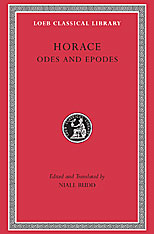 Odes and Epodes
Horace
Harvard University Press, 2004 Monumental verse.
The poetry of Horace (born 65 BC) is richly varied, its focus moving between public and private concerns, urban and rural settings, Stoic and Epicurean thought. The Loeb Classical Library edition of the great Roman poet’s Odes and Epodes boasts a faithful and fluid translation and reflects current scholarship.
Horace took pride in being the first Roman to write a body of lyric poetry. For models he turned to Greek lyric, especially to the poetry of Alcaeus, Sappho, and Pindar; but his poems are set in a Roman context. His four books of Odes cover a wide range of moods and topics. Some are public poems, upholding the traditional values of courage, loyalty, and piety; and there are hymns to the gods. But most of the Odes are on private themes: chiding or advising friends; speaking about love and amorous situations, often amusingly. Horace’s seventeen Epodes, which he called iambi, were also an innovation for Roman literature. Like the Odes they were inspired by a Greek model: the seventh-century iambic poetry of Archilochus. Love and political concerns are frequent themes; the tone is only occasionally aggressive. “In his language he is triumphantly adventurous,” Quintilian said of Horace; Niall Rudd’s translation reflects his different voices.
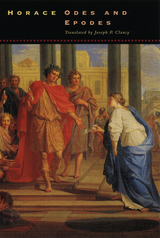 Odes and Epodes
Horace
University of Chicago Press, 1960 The writings of Horace have exerted strong and continuing influence on writers from his day to our own. Sophisticated and intellectual, witty and frank, he speaks to the cultivated and civilized world of today with the same astringent candor and sprightliness that appeared so fresh at the height of Rome's wealthy and glory.
In 23 B.C., when he published the first three books of his lyrics, Horace was 42 years old, secure in the favor of the emperor Augustus, and living in ease and comfort as a country gentleman on his Sabine farm. Serenity is reflected in these lyrics, certainly, but so are other experiences, for Horace had lived through three major political crises in a society that was the center of the world, that was sophisticated, refined—and beginning to decay. A worldly, high-spirited, cultivated man, Horace responds in his poetry to the myriad elements of Roman life he knew so well.
The Odes and Epodes of Horace collects the entirety of his lyric poetry, comprising all 103 odes, the Carmen Saeculare ("Festival Hymn"), and the earlier epodes. Joseph P. Clancy has achieved a mirroring of the originals that is worthy in its own right as English verse, and his introductions to each book of lyrics are both lively and informed.
Odes and Epodes
Horace
Harvard University Press THIS EDITION HAS BEEN REPLACED BY A NEWER EDITION.
Horace (b. 65 B.C.) claims the lyric poetry of Sappho and Alcaeus as models for his celebrated odes. His four books cover a wide range of moods and topics: friendship is the dominant theme of about a third of the poems; a great many deal with love and amorous situations, often amusingly; others deal with patriotic and political themes. The seventeen epodes, which Horace called iambi, were also inspired by a Greek model: the seventh century iambic poetry of Archilochus. As in the odes, love and politics are frequent themes; some of the epodes also display mockery and ridicule, of a harsher variety than we find in Horace's satires.
 The Odes of John Keats
Helen Vendler
Harvard University Press, 1983 “Simply superb.”
—Nation
A landmark study reconstructs the magnificent architecture of Keats’s odes beam by beam.
With the exception of Shakespeare, John Keats has garnered more critical attention than probably any other English poet, above all for his six great odes. Composed in the span of just a few months in 1819, the odes mark the high point of Keats’s all-too-short literary career, forming, as Helen Vendler puts it, “the group of works in which the English language finds an ultimate embodiment.”
Even with the mountain of criticism that precedes it, The Odes of John Keats nonetheless accomplishes something bracingly new: it reveals that the odes, typically read separately, demand to be read as a unified whole. Only when we read them together, Vendler argues, do we see how each ode builds upon, and contradicts, the one that came before it—a progression that expresses Keats’s sustained and deliberate inquiry into nature of creativity itself. From fruitless revery in “Ode on Indolence,” to successive explorations of music and mimetic art in “Ode to a Nightingale” and “Ode on a Grecian Urn,” to the final triumph of lyric poetry in “To Autumn,” each ode advances tentative theses about the relationship between truth, beauty, and sensory experience, only to subsequently overturn them from a higher vantage point.
Exquisitely attentive to the warp and weft of Keats’s “many languages,” from Greek mythology to eighteenth-century allegory, Vendler’s architectonic reading masterfully achieves criticism’s highest aim: keeping these classic poems, to borrow Keats’s own words, “forever warm and still to be enjoy’d.”
 The Odes of John Keats
Helen Vendler
Harvard University Press “Simply superb.”
—Nation
A landmark study reconstructs the magnificent architecture of Keats’s odes beam by beam.
With the exception of Shakespeare, John Keats has garnered more critical attention than probably any other English poet, above all for his six great odes. Composed in the span of just a few months in 1819, the odes mark the high point of Keats’s all-too-short literary career, forming, as Helen Vendler puts it, “the group of works in which the English language finds an ultimate embodiment.”
Even with the mountain of criticism that precedes it, The Odes of John Keats nonetheless accomplishes something bracingly new: it reveals that the odes, typically read separately, demand to be read as a unified whole. Only when we read them together, Vendler argues, do we see how each ode builds upon, and contradicts, the one that came before it—a progression that expresses Keats’s sustained and deliberate inquiry into nature of creativity itself. From fruitless revery in “Ode on Indolence,” to successive explorations of music and mimetic art in “Ode to a Nightingale” and “Ode on a Grecian Urn,” to the final triumph of lyric poetry in “To Autumn,” each ode advances tentative theses about the relationship between truth, beauty, and sensory experience, only to subsequently overturn them from a higher vantage point.
Exquisitely attentive to the warp and weft of Keats’s “many languages,” from Greek mythology to eighteenth-century allegory, Vendler’s architectonic reading masterfully achieves criticism’s highest aim: keeping these classic poems, to borrow Keats’s own words, “forever warm and still to be enjoy’d.”
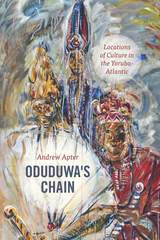 Oduduwa's Chain: Locations of Culture in the Yoruba-Atlantic
Andrew Apter
University of Chicago Press, 2017 Yoruba culture has been a part of the Americas for centuries, brought from Africa during the transatlantic slave trade and maintained in various forms ever since. In Oduduwa’s Chain, Andrew Apter explores a wide range of fascinating historical and ethnographic examples and offers a provocative rethinking of African heritage in Black Atlantic Studies.
Focusing on Yoruba history and culture in Nigeria, Apter applies a generative model of cultural revision that allows him to identify formative Yoruba influences without resorting to the idea that culture and tradition are fixed. For example, Apter shows how the association of African gods with Catholic saints can be seen as a strategy of empowerment, explores historical locations of Yoruba gender ideologies and their variations in the Atlantic world, and much more. He concludes with a rousing call for a return to Africa in studies of the Black Atlantic, resurrecting a critical notion of culture that allows us to transcend Western inventions of African while taking them into account.
 Odyssean Identities in Modern Cultures: The Journey Home
Hunter Gardner
Ohio State University Press, 2014 Addressed to both classicists and students of modern culture, Odyssean Identities in Modern Cultures: The Journey Home traces the Odyssey’s central theme of homecoming in a wide range of narratives from the late nineteenth to the early twenty-first century. Accounts of the journey home in novels, plays, lyric poems, paintings, and a television series explore the challenges of returning from a long absence to reclaim a former life.
These retellings raise fresh questions about the relationship between home and the identities we expect to find rooted there and stress the elusiveness of a satisfying homecoming. They remind us that the Odyssey’s happy ending is itself qualified by the hero’s unsettled future, the violence of his return, and the independent desires of his friends and family members. At the same time, they highlight new obstacles to homecoming posed by the modern world with its political and economic upheavals, newly configured family relations and gender roles, and diminished confidence in the stability of identity. The authors discussed include Charlotte Yonge, James Joyce, Virginia Woolf, Rebecca West, George Seferis, Yannis Ritsos, Gwendolyn Brooks, Charles Frazier, W. B. Sebald, Marilynne Robinson, and Zachary Mason.
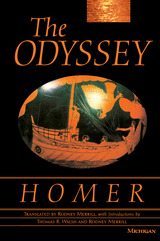 The Odyssey
Homer, Translated by Rodney Merrill
University of Michigan Press, 2002 The Odyssey is considered to be one of the greatest pieces of world literature. Its basic story--the homecoming of Odysseus--is widely known. Although it has often been translated, earlier versions do not give the reader the full sense of its oral epic nature as a song that came into being through a long tradition of sung performances before writing was widely practiced. When finally written down, it retained its oral-formulaic nature in ways that are clearly discernible, and which this translation successfully captures. Rodney Merrill strictly adheres to the use of dactylic hexameter, the meter by which the formulaic language of Homeric poetry is rendered as musical phrasing rather than as a simple repetition of ideas. Reading this version--especially aloud--will grant both students and teachers fresh insight into the nature of Greek epic and Homer's song about one of the most famous characters of all time.
This epic began life as the music composed by a "singer of tales," not as words on a page. As such, its meter allows for pleasing variations with a strong basic "beat," thus providing a rhythmic impetus that carries the story swiftly forward. The resulting "music" has important repercussions for the reader's perception of the many repeated elements that provide structure for the poem and bring out significant themes, just as the repetitions in a piece of music do.
This edition of the Odyssey includes selections for further reading, a list of proper names (with a guide to pronunciation), and three maps. It also provides introductory discussions of how the work came into being and was transmitted until it became the work we read, how it is divided into six "performance sessions" of four books each, and how the poem's various themes are developed. Rodney Merrill's Odyssey is thus an ideal edition for students, teachers, and general readers.
The audiobook is available on twelve cassettes, and is read by Rodney Merrill. This version will bring Homer's epic masterpiece to life like never before. Perfect for the car or classroom!
Rodney Merrill is retired and an independent scholar. He has taught at Stanford University, the University of San Francisco, and the University of California, Berkeley.
Thomas R. Walsh, Senior Professor at Occidental College, has written articles on Homeric poetics, with a forthcoming book on anger in Homer.
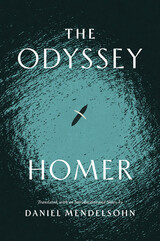 The Odyssey
Homer
University of Chicago Press, 2025 The greatest of all epics, soon to be a film by Christopher Nolan!
“This may be the best translation of The Odyssey yet."—Edith Hall, The Telegraph
A magnificent feat of translation, hailed by classicists and poets alike as a “momentous achievement”: “thrilling,” “rich and rhythmical,” “superb,” “mesmerizing,” “searingly faithful—yet absolutely original.”
With this edition of Homer’s Odyssey, the celebrated author, critic, and classicist Daniel Mendelsohn brings the great epic to vividly poetic new life. Widely known for his essays on classical literature and culture in The New Yorker and many other publications, Mendelsohn gives us a line-for-line rendering of The Odyssey that is both engrossing as poetry and true to its source. Rejecting the streamlining and modernizing approach of many recent translations, he artfully reproduces the epic’s formal qualities—meter, enjambment, alliteration, assonance—and in so doing restores to Homer’s masterwork its archaic grandeur. Mendelsohn’s expansive six-beat line, far closer to the original than that of other recent translations, allows him to capture each of Homer’s dense verses without sacrificing the amplitude and shadings of the original.
The result is the richest, most ample, most precise, and most musical Odyssey in English, conveying the beauty of its poetry, the excitement of its hero’s adventures, and the profundity of its insights. Supported by an extensive introduction and the fullest notes and commentary currently available, Daniel Mendelsohn’s Odyssey is poised to become the authoritative version of this magnificent and enduringly influential masterpiece.
|
|
